




PUBLISHER’S LETTER THE WAY I SEE IT ...

Robin Rogers, Ed.D.
Ijust returned from an incredible trip to the French Riviera with a group of new friends. Organized by the United Way of Greater Texarkana, this “tour de France” was an opportunity for anyone interested in traveling as a group to visit some of the most exquisite parts of the country. Now, I haven’t been on an organized and chauffeured trip since middle school when our church group floated the Buffalo River, and the boys got caught with a Playboy, and Melanie Lynn Green vomited after trying to smoke a cigarette that she bought from a machine in the lobby of Ken’s Pizza. I’m not quite sure the Methodist Youth Fellowship ever went back to float after that little trip. Anyway, 40 years later, and with a group of 58 other Texarkanians, I dusted off my passport for a little “ooh la la.”
Before we arrived in France, our large group had been separated into two smaller groups—one for each bus. Alain (pronounced “Alay”) was the tour guide for the blue bus, the bus which my girlfriends and I were traveling aboard; without question, the blue bus had been stacked with the few travelers who had the propensity to smoke, act up, gamble, or buy dirty magazines. In line with that very assessment, I managed to find my way into the Casino at Monte Carlo, where I played blackjack and sipped a martini—shaken, not stirred—just like 007 would have done. Other than the gambling, I stayed out of trouble.
Somehow, Alain kept us all in line. He was stylish, bilingual, and had an encyclopedic knowledge of American music and movies from the mid20th century. Forty years of tour guiding throughout France made him an ideal teacher of French art, architecture, cuisine, and shopping. His favorite expression was “ooh la la,” and in his Frenchy way, he could use it in a multitude of ways. Reacting to a seascape, building, or a hot chick on a Vespa driving past? “Ooh la la.” By the end of our trip, we were all saying it. It was the vacation of “ooh la la.”
If you have never been to Cannes, or Nice, or Monaco, imagine Downton Abbey times a thousand. The buildings were hundreds of years
PUBLISHER
Dr. Robin Rogers
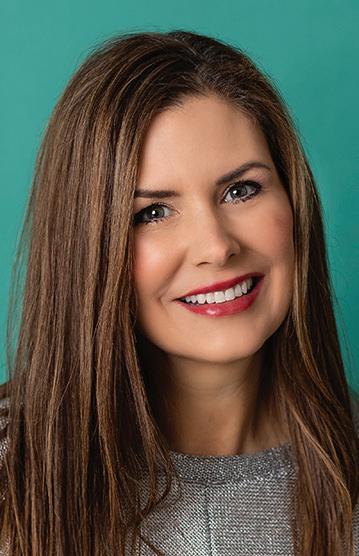
INTERIM EDITOR
Ellen Orr
GRAPHIC DESIGNER
old, if not thousands. Pop into an unassuming alleyway, and you may discover a church with 30-foot oil paintings created by a master painter. In front of every hotel, there were Rolls-Royces and Lamborghinis. And the gardens were better manicured than any I have ever laid eyes on. To say I was overwhelmed is an understatement. Several times, I overheard people joke about why they couldn’t have been born in one of these opulent places. Right? Wrong.
Visiting these bougie places was amazing. I could breathe the same air, swim in the same Mediterranean waters, eat the same amazing food, walk the same Cannes Film Festival red carpet as the rich and famous. A little part of me will always feel that I was born in the wrong place and time and circumstances; just a tiny sliver of me believes that I’d be right at home in a French Victorian palace, wearing fabulous tufted ballgowns and taking afternoon tea with two cubes of sugar and a scone or petit four.
But, after a week away, I am always ready to return to my roots. Like Dorothy Gale said, “There’s no place like home.” And, while my love of European royal history and decadent French pastries runs deep, Texarkana is home.
Texarkana is a spectacular place, which I rediscover every time I return from a trip away. Our trees and rivers and hilly landscapes provide bountifully. Our community has great medical care and education for all. And, if you want to travel, the roads intersecting in our city can take us anywhere. Very soon, we will have an all-new airport, which will continue to serve our residents with expanded services in the future.
Texarkana came about 150 years ago, thanks to the trains that cut a path across the country. Even today, you can hop a train for eastward or westward service.
This city may only be 150 years young, but our pride of place is ancient. I’m so proud to be a Texarkanan: a graduate of both Texarkana College and (what is now) Texas A&M–Texarkana; a beneficiary of exceptional medical care from CHRISTUS St. Michael Hospital, Wadley Hospital, and LifeNet Emergency Services; a customer of (and former car salesperson at) Pete Mankins Nissan, the oldest Nissan dealership in Texas; a customer of our local banks and credit unions; and a hometown business owner of FSLM, not unlike Jill Rowe of Rowe Casa Organics.
As we celebrate this sesquicentennial, I have had a lot of fun looking back on some of the cornerstone organizations that have made Texarkana a wonderful place to visit and to live—a wonderful place to start a family and start a business, to make friends and make a difference in the world. I’m sure residents of Provence, France, feel the same way about their community, too, but I just can’t imagine a better place to call my hometown.
I hope you enjoy the histories told within these pages—from the Caddos’ early stewardship of the land to the entrepreneurship of the modern day, and everything in between. Happy sesquicentennial, and as always, thanks for reading FSLM.
CONTRIBUTING PHOTOGRAPHERS
John Bunch
Shane Darby
Victoria Herman
Brian Jones
Four States Living Magazine is published the first business day of every month. © Copyright 2023 by Four States Living Magazine. No part of this publication may be reproduced in any form without written permission of the publisher. Four States Living Magazine is distributed free of charge. Direct mail subscriptions are $40.00 per year. Reader correspondence and editorial submissions are welcome. We reserve the right to edit or reject any material contributed.
INSPIRE THE PESSIMIST ELEVATE THE OPTIMIST STIR THE MIND ENTERTAIN THE SOUL
Shane Darby
SALES REPRESENTATIVE
Victoria Herman
Mary Cyrus Photography
CONTRIBUTING WRITERS
John Bunch
Suzy Irwin
Ellen Orr
Jamie Simmons
Sarah Vammen
Do You Have a Story or a Photo?

We welcome information regarding topics of interest for future publications. If you have a story or photos that in some way depicts living or visiting in the Four States area and would be of interest to our readers, we want to hear from you. Call 903-792 -2262 or write: Editorial Department, Four States Living Magazine, 4104 Summerhill Square, Texarkana, Texas 75503. Comments are also welcome at our e-mail address: info@fourstatesliving.com

Want to Advertise?
Advertising rates may be obtained by contacting the Sales Department at 903792-2262, writing to Four States Living Magazine, 4104 Summerhill Square, Texarkana, Texas 75503, visiting our website www.fourstatesliving.com or emailing our Sales Department at info@fourstatesliving.com
6 OCTOBER 2023 . fourstatesliving.com
FOUR STATES LIVING MAGAZINE
FOURSTATESLIVING WWW.FOURSTATESLIVING.COM
CONTENTS
ON THE COVER OCTOBER 2023

Texarkana, founded in 1873, is celebrating its sesquicentennial this year. Learn more about Texarkana’s storied past throughout these pages.
INSIDE : A RICH HISTORY WITH DEEP ROOTS

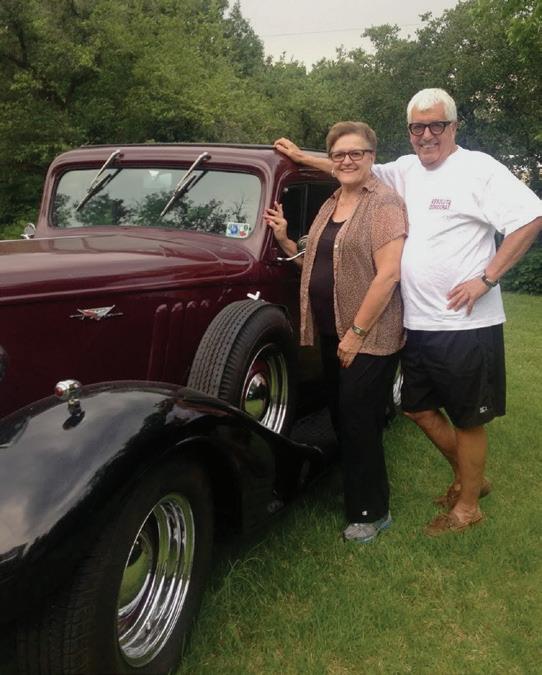
7 OCTOBER 2023 . fourstatesliving.com
VOLUME 30 • ISSUE 10 • OCTOBER 2023
Pete Mankins Nissan, the oldest Nissan dealership in the country, has a rich history that spans 100 years and five generations. Read more in “A Rich History with Deep Roots,” beginning on page 26.
TABLE OF CONTENTS History is Made Here 11 The First People 12 Early Texarkana 16 Encore! 19 Faithful Servants 20 A Rich History with Deep Roots 26 Uniquely Texarkana 31 A Great Place to Start 32 Rollin’ on the River 36 The Clydesdales Return 40 Branching Out 44 The CNB Way 48 Soaring Eagles 54 Thirty Years of Four States Living 59 Casting a Wide Net 64 Growing Organically 68 Texarkana by the Numbers 71 ALSO IN THIS ISSUE The Way I See It—An op-ed piece from the publisher 6 Events 72 Ask the Experts 74 Scene About Town 8, 56
SCENE ABOUT TOWN

THE UNITED WAY OF GREATER TEXARKANA HELD ITS 100TH ANNIVERSARY CELEBRATION/2024

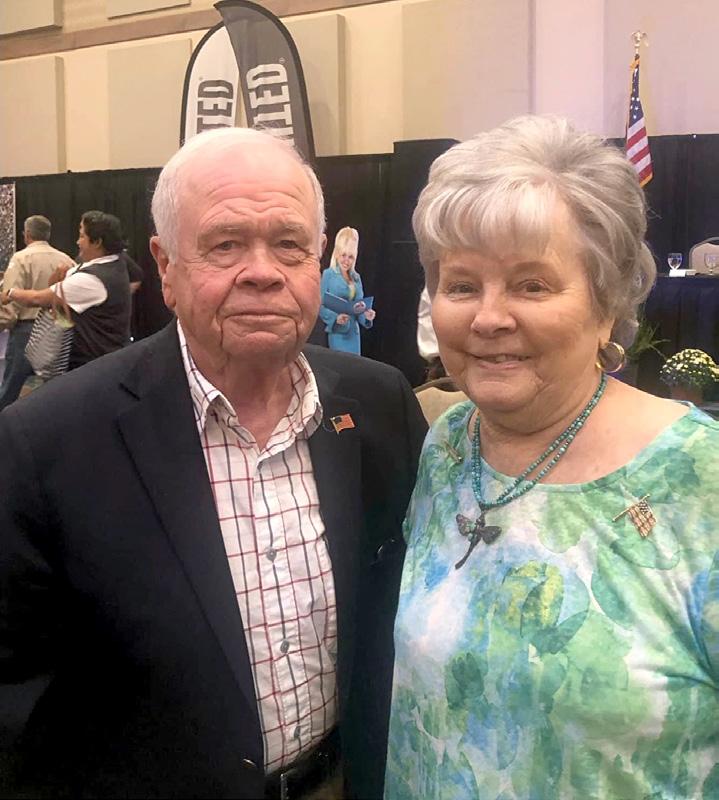
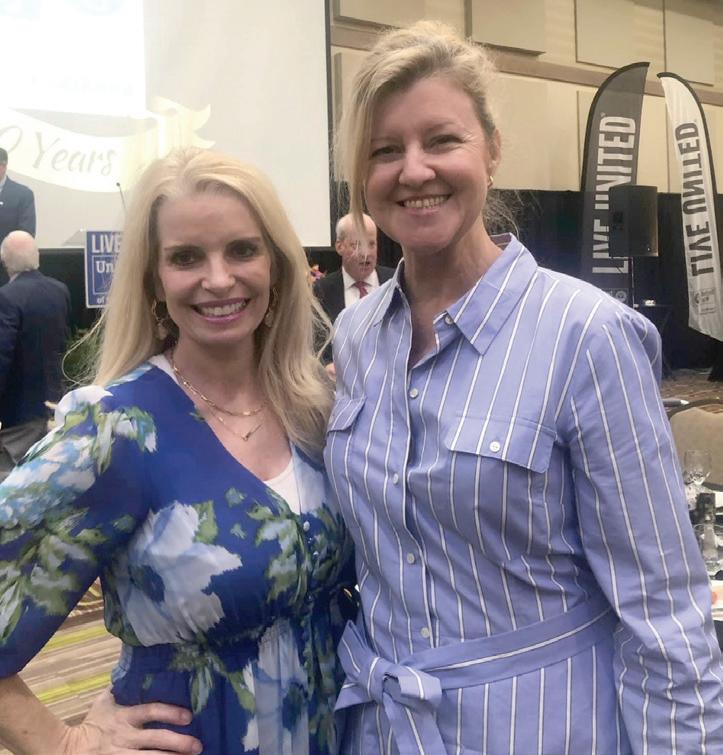

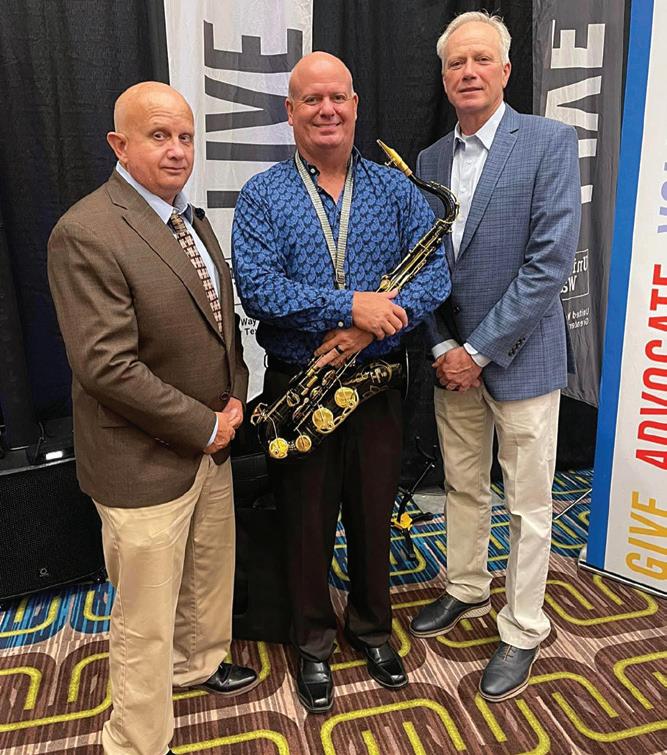

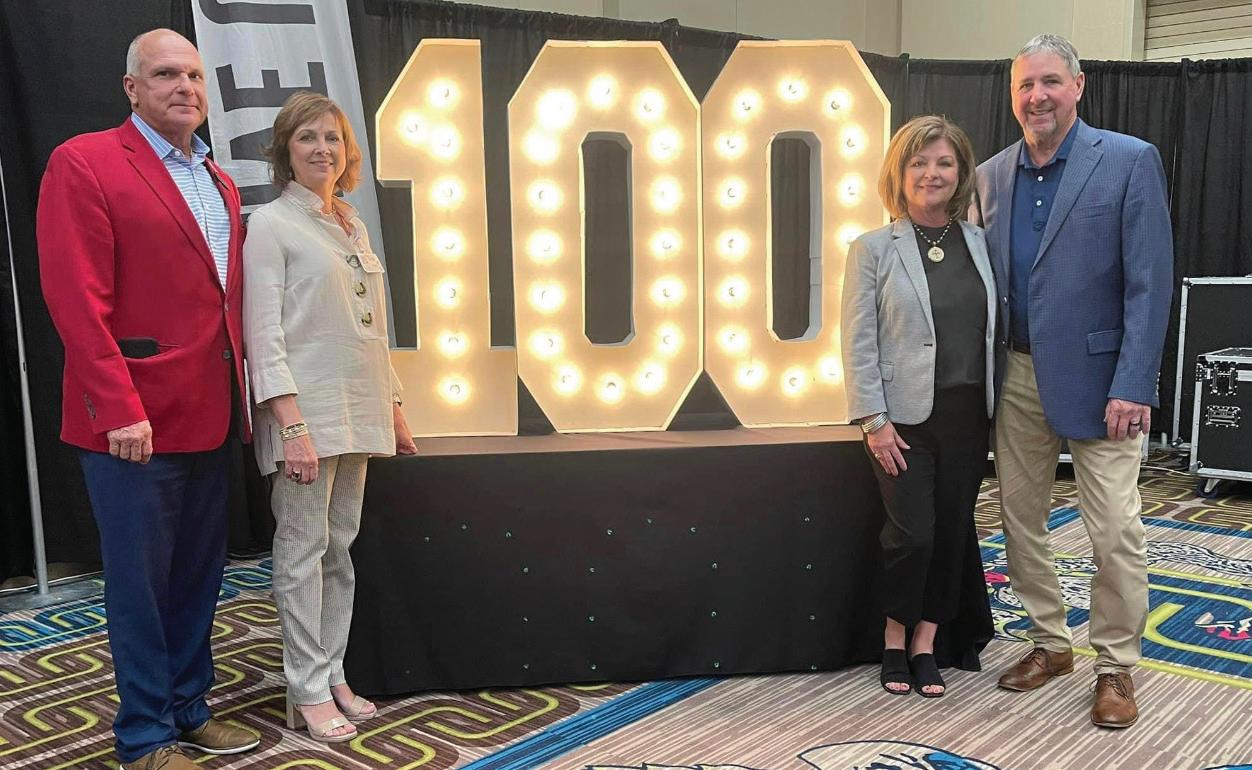
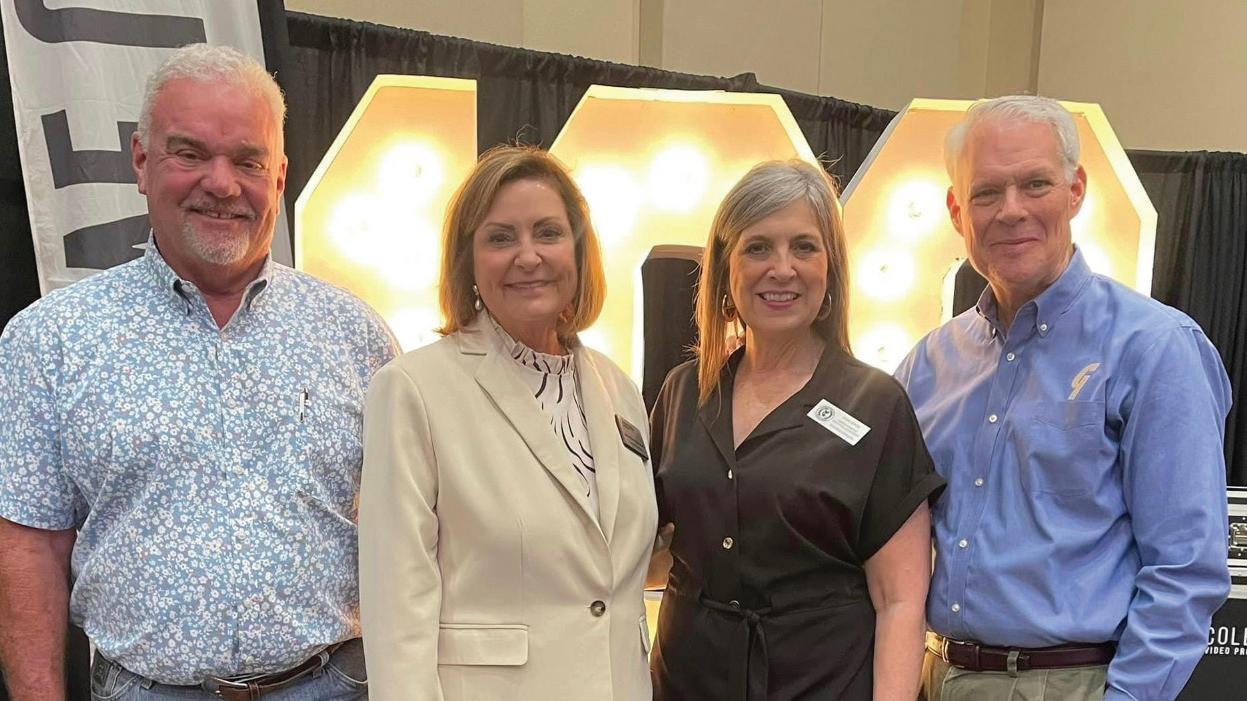

CAMPAIGN KICK-OFF ON AUGUST 31ST.

8 OCTOBER 2023 . fourstatesliving.com
Craig and Jennifer Harland with Suzy and Robert Irwin William Morriss and Don Morriss
Mayor Allen and Shelby Brown with Dr. Robin and David Hickerson
Mike Mahone, Rich Walker, and David Mims
Joe and Brenda Rochelle
Lori Rochelle and Lacy Hall
Jennifer Smith, Gabe Tarr, and Keely Bledsoe
Rephonnie Roberts, Carolyn Sturdivant, Linda Willis , and Dr. Robin Rogers
Toni Braley and Kim Fowler

HISTORY IS MADE HERE.

If you ask people to describe Texarkana, you will receive a multitude of answers. Most will begin with the fact that Texarkana is technically two cities, connected by a thriving State Line Avenue. Some will note the population, the local institutions, and maybe even the urban amenities paired with the small-town culture. These answers get close to what Texarkana has become over its 150-year history.

Texarkana is a regional center for health and medical services, commerce, education, and entertainment. We serve a population of over 350,000 from 18 counties who choose Texarkana as the ideal destination for shopping, dining, entertainment, business, and learning. On any given evening, take note of the vehicles parked around our city; you’ll easily find license plates from Texas, Arkansas, Louisiana, and Oklahoma.
Texarkana’s greatest economic drivers are its defense contractors, tire manufacturer, and healthcare services, along with two paper mills, agricultural professionals, and hundreds of smaller businesses.
Our two major hospitals serve a population that exceeds 350,000, making Texarkana the largest medical hub between Little Rock and Dallas. Our school districts provide exemplary educational opportunities to all of our city’s students. Texarkana College, Texas A&M University–Texarkana, and University of Arkansas Hope–Texarkana provide higher education to thousands of students from several states.
Our geographic location gives us access to the Port of Houston, the Port of New Orleans, and several river ports in a matter of hours. Residents and visitors also take advantage of the Texarkana Regional Airport and Amtrak to travel to and from the city.
Whether you were born and raised here or moved here for education, work, or love, it is probable that you have never thought about the long history of this place—the land we live on, the birth of the city, the businesses that have weathered decades of once-unimaginable changes, the families who have built and rebuilt the community generation after generation.
The history of our vibrant, complex city is vast, unable to be contained in a single publication. Still, this issue offers its readers a glimpse into the past, with a stronghold in the present and an eye to the future.
THE FIRST PEOPLE
Long before the city’s founding, the Caddo people lived in present-day Texarkana
by ELLEN ORR
This year, Texarkanans celebrate 150 years of cityhood. However, for thousands of years prior to the sale of the first city plots, people lived on this land. Texarkana is situated on the ancestral lands of the Quapaw, Osage, and Caddo peoples. Most notably for Texarkanans, Caddo people have lived in this area for around 2,000 years, if not longer.
Between 200 B.C.E. and 800 A.D., a network of indigenous people who came to be known as the Caddo settled in what we now call the four states region: northeast Texas, west Louisiana, southwest Arkansas, and southeast Oklahoma. Archaeological evidence suggests that humans have inhabited North America for at least 20,000 years, the earliest Caddo ancestors among them. These people were transient hunter-gatherers, though by 2000 B.C.E., it is believed that many were also gardening, using artificial selection to domesticate crops such as squash, sunflower, and goosefoot (a leafy green closely related to spinach). This agricultural success allowed them to settle in the Red River valley.
By 500 B.C.E., the Caddo people primarily lived in villages. This territorial stability set them apart from neighboring indigenous groups, whose territories shifted frequently; in contrast, hundreds of generations of Caddo people lived on the same land.

Beyond squash, sunflower, and goosefoot, early Caddos also cultivated beans and pumpkins. (Evidence of maize, or corn, does not emerge until around the year 800 A.D.)
In addition to agriculture, they gathered seasonal foods, such as berries, and hunted white-tailed deer and other game. Through drying, smoking, sealing in granaries, and keeping in underground storage pits, they were able to preserve their food.
The abundance and safety of this lifestyle allowed the population to expand and thrive. The Caddo people of this period were skilled craftspeople, known for their weaving, ceramics, carved bows, and shell work. Archaeologists have uncovered evidence of long-distance trading between the Caddos and other indigenous peoples throughout Turtle Island (or North America).
By the year 800, the Caddo society was well established and flourishing as a collective of hamlets. Some settlements became what we now know
as capitals—places where important ceremonies were held and community leaders resided. The religious culture acknowledged a central god as well as various spirits. Religious and civic leaders were decided by heredity. These people, born into power, made community decisions in conjunction with a council of elders.
Throughout the early 1000s, the Caddo people thrived, living among lush cornfields. Their population likely numbered around 200,000.
In 1542, Hernando de Soto and other Spanish colonials became the first Europeans to visit the region, though their stay was brief. They brought with them new plants, new animals (including horses), new tools, new weapons, and Old World illnesses, such as smallpox and influenza.
When they returned a century later, they would see the effects of epidemic disease and gun warfare. While exact numbers are not known, historians agree that European contact led to extreme population loss for the Caddo; some estimate that, by 1680, there were as few as 10,000 Caddo people living.
In the late 1600s and early 1700s, French colonials were living in the area, and the Caddo people welcomed them and their economic contributions. In fact, trade between the family of French-Canadian adventurer Louis Juchereau de St. Denis and the Caddos was the backbone of the region’s economy at this time. Colonial governments met with Caddo chiefs at chiefdoms, the most significant of these located in the village Nasoni, very near present-day Texarkana.
Throughout the 1600s and 1700s, relations between (mainly French) settlers and Caddos were largely genial. However, when Caddo land was illegally sold and purchased as part of the Louisiana Purchase in 1803, things took a turn for the worse. Unlike the French, the U.S. government did not honor the treaties between settlers and Caddos, despite agreeing to do just that. Anglo-Americans forcibly took land. Caddos living in Texas during Spanish domination fared better, until the end of the Texas Revolution; the newly established Republic of Texas was actively hostile toward indigenous people, and the U.S. government failed to protect Caddo people or their rights.
12 OCTOBER 2023 . fourstatesliving.com
“The most important thing is that we’re still alive. We’re alive and well.”
—Chairman Bobby Gonzalez
The Caddo people began cultivating numerous varieties of maize, or corn, around 800 A.D.

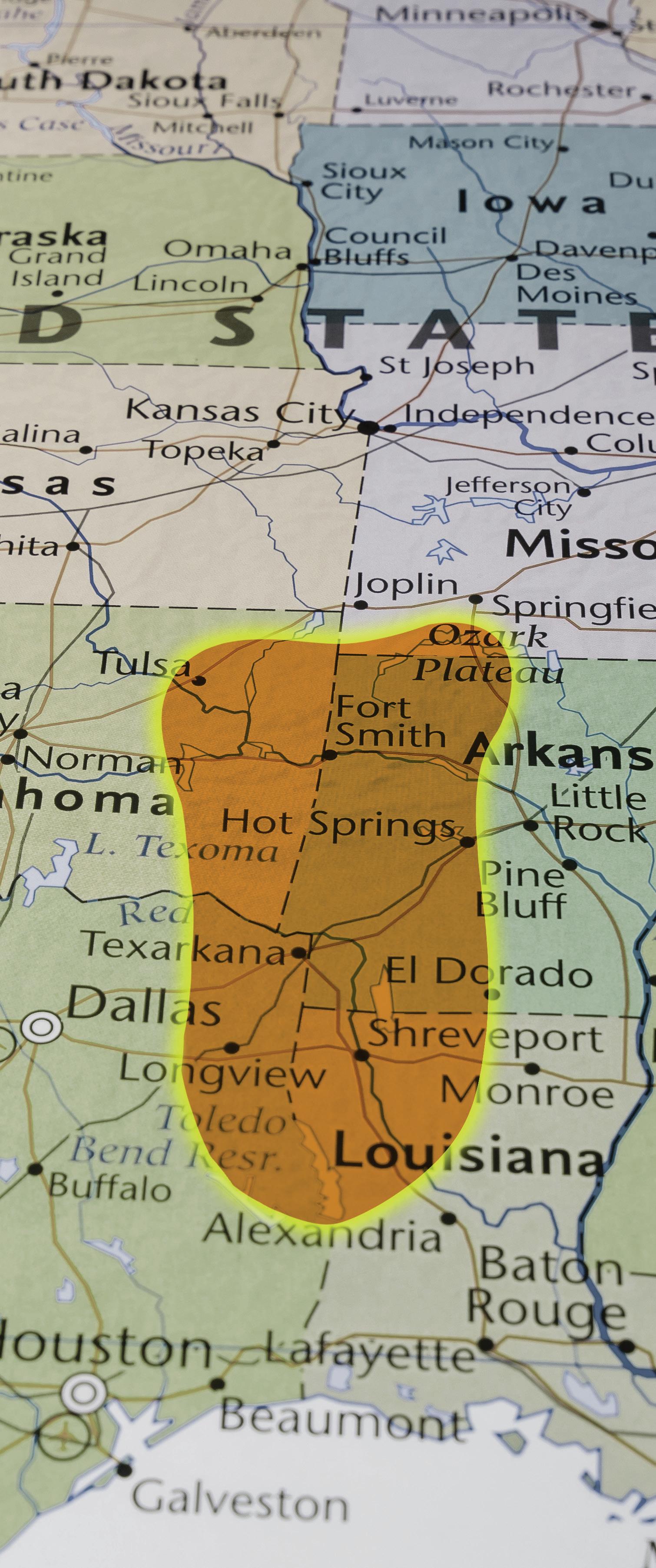 This map shows the ancestral lands of the Caddo people, with modern-day Texarkana at the epicenter.
This map shows the ancestral lands of the Caddo people, with modern-day Texarkana at the epicenter.
In 1835, the Caddos were forced to cede much of their ancestral land in exchange for a promised $80,000, only some of which was ever paid. They first migrated westward, into north-central Texas. Then, in the 1850s, they, along with other tribes, were moved to a small area west of Fort Worth. Life on this so-called reserve was short-lived; violent settlers soon forced the indigenous people to “Indian Territory,” or modern-day Oklahoma. Robert Simpson Neighbors, a federal agent, escorted them to Oklahoma. When he returned to Texas, he was murdered as an act of anti-Native hatred.
During the Civil War, many Caddo people fled to Kansas, wary of Confederate rule. After the war, they returned to Oklahoma to find that their native lands had been designated for and given to other indigenous groups. The Caddo settled in west-central Oklahoma, on the ancestral lands of the Wichita people. This remains the heart of the Caddo Nation to this day.

In the following years, the Caddo people would endure numerous atrocities. Their children were sent to residential schools, where they were stripped of their culture, abused, and sometimes killed. Life on reservations is brutal, too: housing is inadequate in terms of both quantity and quality. Mental and physical health risks are elevated, as are the rates of interpersonal violence. Thirty percent of Indigenous students dropout of school before high school graduation (twice the national average), and Indigenous people are the most impoverished ethnic group in the country.
Despite these grave injustices, Caddo people continue to survive and even thrive. The Caddo Nation has about 7,000 registered members. They work hard to maintain and pass down their rich culture, including their language. In 2019, a survey showed that just seven people were able to speak the Caddo language fluently—and, over the course of the COVID-19 pandemic, five of those people died. Those working for the Nation’s language preservation program are learning and documenting the language from the two remaining speakers. Chairman Bobby Gonzalez, the tribe’s elected leader, was quoted in a March 2023 KERA News article as having said, “The most important thing is that we’re still alive. We’re alive and well. We’re an ancient tribe, and we’re going to be here time immemorial.”

The word “Arkansas” is derived from the Algonquian word for the Quapaw people. “Texas,” however, comes from the Caddo word “taysha,” meaning “friends.” As we celebrate Texarkana’s sesquicentennial, it is critical that we acknowledge the people on whose land we reside and express gratitude for the hundreds of generations of Caddo friends who cared for this corner of the world, which we now call home.
Readers interested in learning more about the Caddo Nation should look to mycaddonation.com. To learn more about the ancestral lands throughout North America, visit native-lands.ca.
14 OCTOBER 2023 . fourstatesliving.com
The turkey dance has come to represent the Caddo peoples’ will to survive and keep their culture alive.

EARLY TEXARKANA
People from all walks of life built the city in which we now reside
by JAMIE SIMMONS
Texarkana was a town in development for many years before being formally established by a sale of city lots on December 8, 1873, the culmination of close to three decades of effort. At that time, the Cairo and Fulton Railroad hadn’t quite completed its lines into the townsite. In fact, very little in the way of actual preparations had been made beyond platting the original city. The railroad had, however, begun advertising the sale in newspapers across the country. This included Jefferson, Texas, a bustling port city that had turned away the railroad, believing that riverboats were still the way to go.
Jefferson, as it turns out, was an incubator for the entrepreneurs and industrialists who would make up Texarkana’s early population. Among those who traveled from Jefferson to attend the sale was a businessman named Anthony L. Ghio. This 30-something father of four had immigrated from Italy as a teenager. He was a man of drive and vision who became the third person to purchase lots and, within hours of the sale, became the first person to begin building in the new city.
Town lore states that Colonel Montrose, representing the railroad, used a large stump as an auction block. That stump was said to have been located on the state line, approximately where Union Station (constructed in 1929) is now standing. The first streets laid out were Front, Broad, and Clinton (now Third) Streets, all of which were laid parallel to the planned location of the railroad tracks. As expected, the cross streets were laid out perpendicular to these first three streets. It was all to be very normal and regulated, with square blocks and rectangular lots aligning to a grid.
Then came Robert W. Rodgers.
Also a man of vision, Robert Rodgers capitalized on the potential of owning lots on both the Arkansas and Texas side of the city. He began buying up lots along the state line, from Front Street to what is now Fourth Street. He eventually graded a few yards on either side of the line to create Texarkana’s most iconic street: State Line Avenue. Since this street follows the state line, and due to the fact that the rest of the city was laid out on a grid, many oddly-shaped lots were suddenly littering downtown.
One such lot is home to what is arguably the most historic building in Texarkana. The Offenhauser Building at 219 North State Line Avenue has
held court over downtown Texarkana since 1879. The oldest portion, the center section of the first two floors, was built by W. H. Hakes, a Union veteran of the Civil War who traveled west like so many others to rebuild his life. He established the Bank of Texarkana on the first floor. The upper floor, which originally had a separate entrance accessible only by an exterior set of stairs, was rented out.
In 1882, one of Texarkana’s oldest continuously operating businesses, Offenhauser Insurance Company, was established above Hakes’ bank. Fred
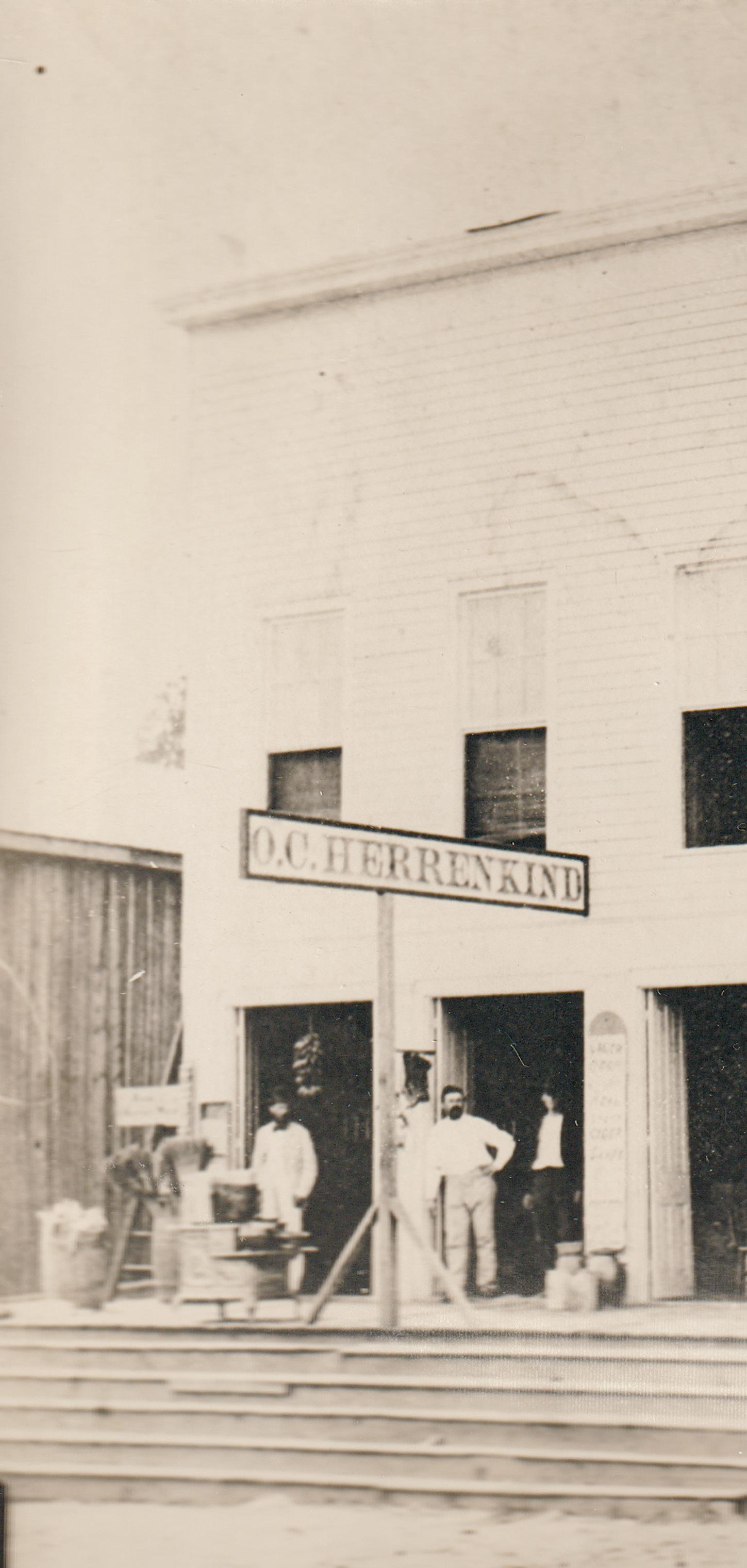
16 OCTOBER 2023 . fourstatesliving.com
W. Offenhauser purchased the entire building in 1894, and the company remained at that location until 1971, when it moved to a newer building on Pine Street.
Several of the city’s “founding fathers” have been mentioned already, but what about the women? Good question. History is often told from the point of view of, as someone once put it, “old, dead white guys.” That’s often because they were the ones recording the stories, printing the news, controlling how history was remembered.

17 OCTOBER 2023 . fourstatesliving.com
O. C. Herrenkind and J. P. Freeman were among the first business owners in Texarkana. This photograph of their stores—a general store and a liquor wholesalers dealership, respectively—was taken in the spring of 1874.
Images provided by the TMS Wilbur Smith Research Archive.
Were there women at the first sale of lots? Many families attended the sale, so there were surely women. Who and how many, the formal histories don’t say. One of the earliest businesswomen was Lizzie O’Donnell, a seamstress and milliner who owned a shop on Broad Street in the 1880s. She was successful enough to have once owned the fabulous 1895 mansion on Pecan Street, now known as the Wadley House.
There were many women of all walks of life in Texarkana in its early decades. Wealthy women, poor women, business owners, homemakers, women of different nationalities and ethnicities. Women were often the ones establishing churches, schools, and generally turning a wild new town into a thriving modern city.
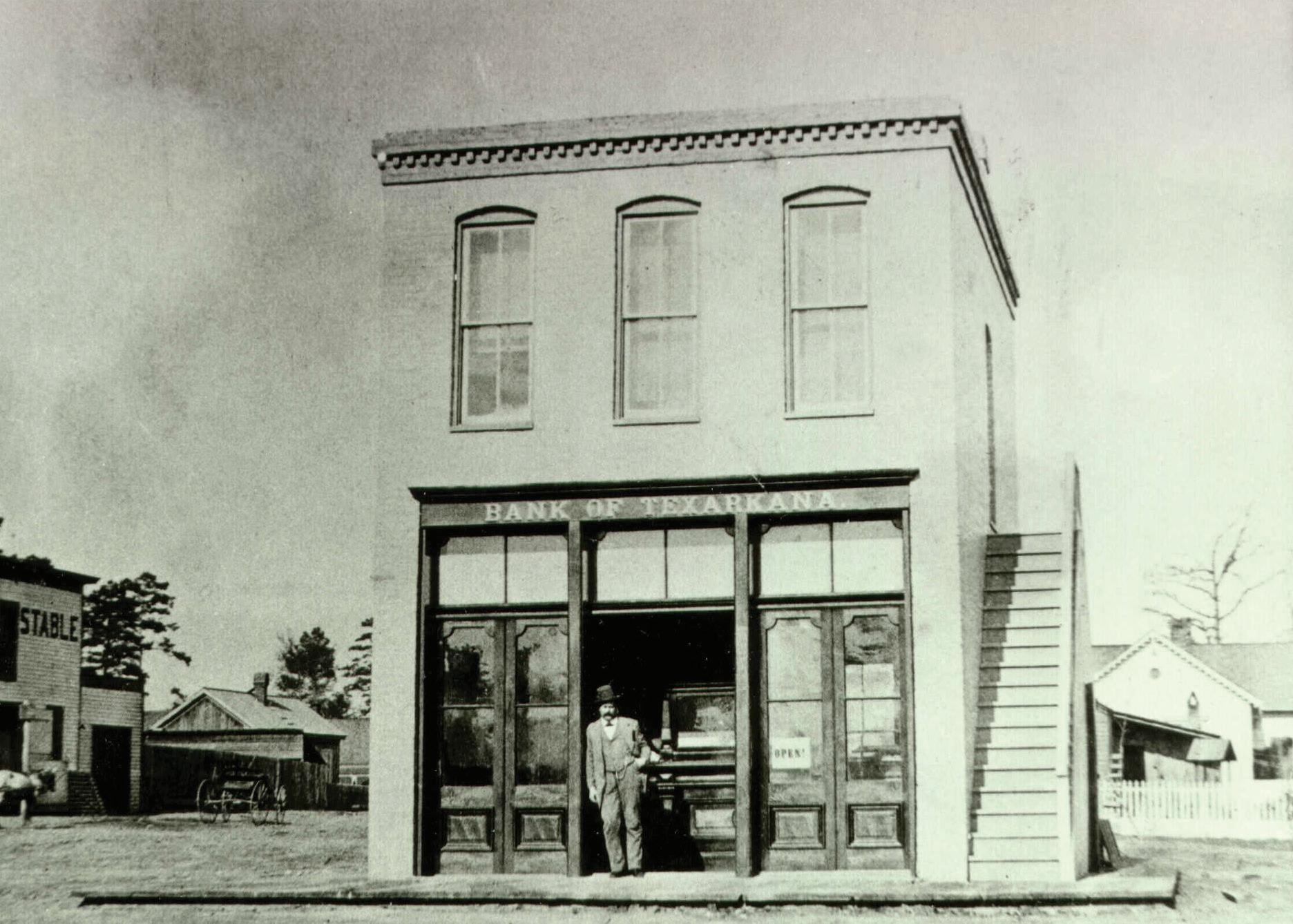

There were also madams who owned large, successful brothels. At one time, Front and Broad Streets were full of saloons and brothels right alongside mercantiles (or general stores), professional offices, and even churches. Lottie Belmont and Zoe LeRoy operated two of the most well-known “houses of assignation,” Belmont House and the Silver Dollar, respectively.
Texarkana’s early history is full of personal stories of people looking to start their lives or start over. Immigrants from all over the world followed the call of opportunity and made Texarkana their home. Among them were the Kosminsky and Marks families, the first two Jewish families to settle in Texarkana. In 1875, the Kosminsky family owned a store on the rapidly growing Broad Street. The first services for what would become Mount Sinai Synagogue were held at Kosminsky Hall.
By the 1880s, Texarkana was a miniature melting pot of different cultures. This atmosphere produced one of Texarkana’s most well-known citizens and one of America’s most important composers, Scott Joplin. Born in approximately 1868 in northeast Texas, Scott grew up in Texarkana. His story reflected that of many young Black people of the time. His father, a formerly enslaved man, moved the family to Texarkana in search of work. The Joplins were self-taught musicians, but Scott showed particular promise at an extremely young age. He learned folk songs from his parents alongside receiving a formal education in classical music. He was exposed to a variety of musical traditions brought to Texarkana by the many immigrants who made the city their home. All of these influences can be heard in Scott Joplin’s later compositions. His masterwork, the Ragtime opera Treemonisha, is set in this area, demonstrating the lasting impression Texarkana left on the brilliant composer.
Scott Joplin may be the most well known, but there have been many other important musicians, composers, and performers from Texarkana. Among them were Lois Towles, Yetta Wexler, and Conlon Nancarrow, all of whom left indelible marks on the international music scene. Coincidentally, all of them were born in 1912.
There are, of course, tens of thousands of stories about Texarkana that can be told. One hundred fifty years of ordinary and extraordinary events make up the Texarkana of today. Each story deserves to be told and remembered. What is your Texarkana story?
18 OCTOBER 2023 . fourstatesliving.com
Aerial view of State Line Avenue, circa 1905. Most of the buildings shown in this photograph are still standing in one form or another. The exception is the Gothic Revival post office, which was torn down in the 1930s to make way for the iconic Beaux Arts building we know today.
W.H. Hakes, a Union veteran of the Civil War, is shown in the doorway of his newly built Bank of Texarkana (a.k.a. Hakes’ Bank) in 1879. This was one of the first brick buildings constructed in Texarkana.
ENCORE!
The Perot Theatre, named the most beautifully designed theatre in Texas by Architectural Digest in 2018, is the cultural heart of entertainment in the Texarkana region. It was built in 1924 as the Saenger “Gateway to the South” Theatre. German architect Emil Weir designed the ornate neo-Italian Renaissance-style theater, with gilded accents. In 1931, the building was purchased by Paramount and transformed into a movie theater. In the 1970s, the City of Texarkana, Texas, purchased the then-deteriorating building, intent on saving the landmark. With a generous $2.4 million donation from Ross Perot and his sister Bette, restoration began. In 1980, it reopened as the Perot Theatre. Will Rogers, Annie Oakley, and Cary Grant are but three of the incredible performers who have tread the boards throughout this building’s 92year history.

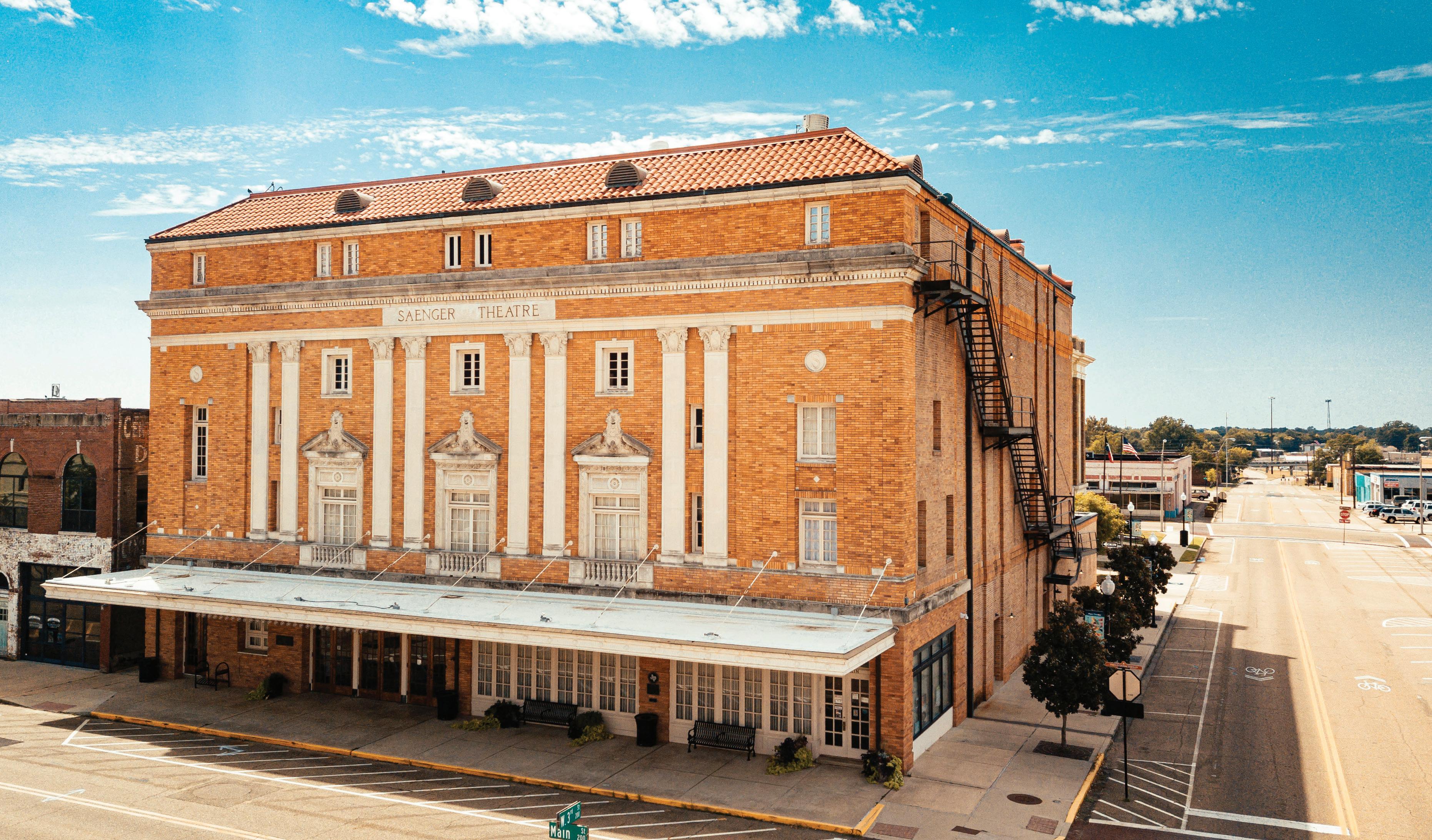
19 OCTOBER 2023 . fourstatesliving.com
photo by BRIAN JONES
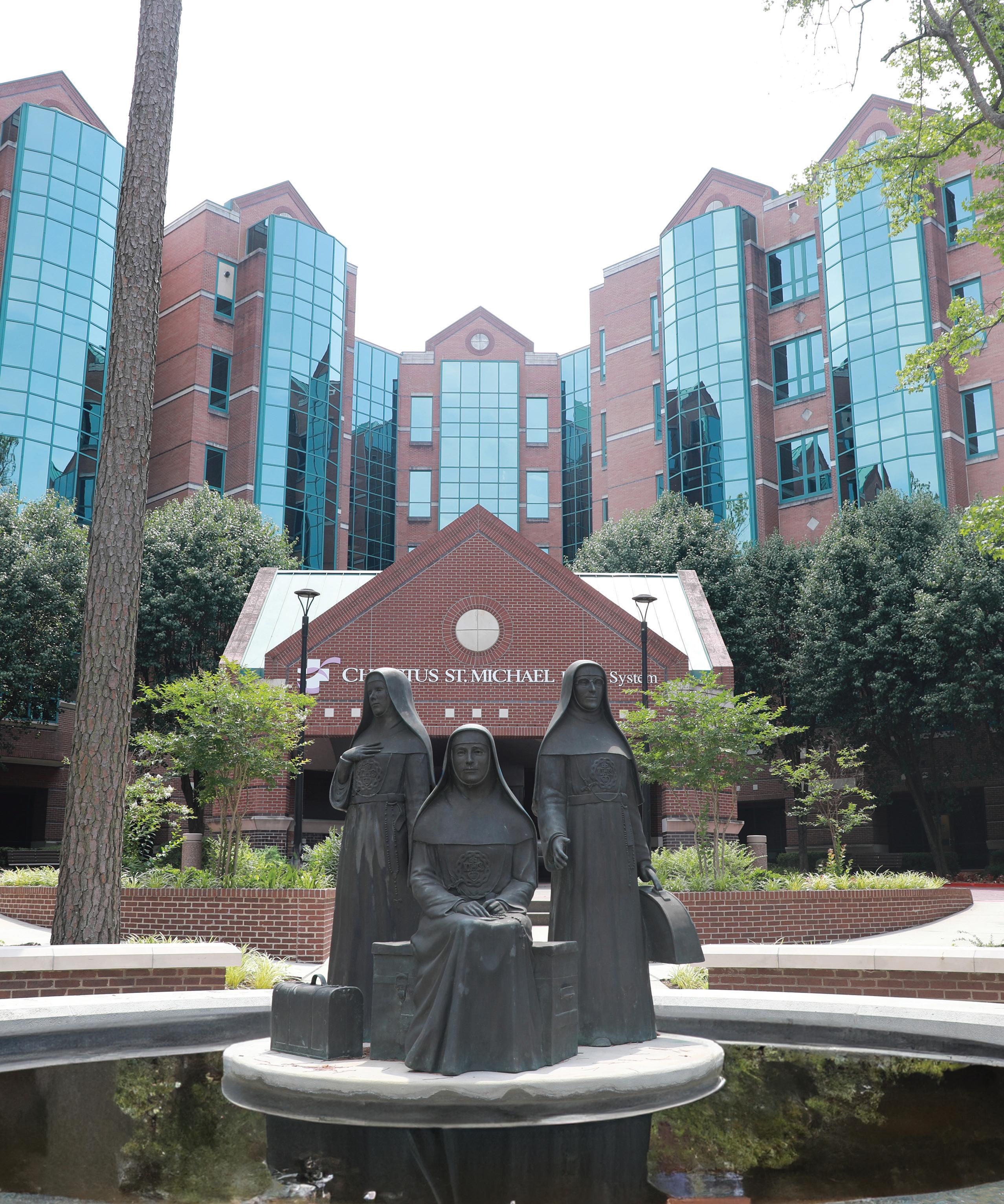
FAITHFUL SERVANTS
For over 100 years, CHRISTUS St. Michael has extended the healing ministry of Jesus Christ.
The history of CHRISTUS St. Michael Hospital actually began 157 years ago in September 1866, when three French nuns were sent to Galveston to open Texas’ first Catholic hospital. After surviving weeks of tumultuous seas and a hurricane, they arrived at the port, founded the Congregation of the Sisters of Charity of the Incarnate Word, and began caring for the many victims of the worst yellow fever epidemic in Galveston history. The disease took many lives, including that of one of the sisters. Sister Blandine Mathelin’s death was the first of many sacrifices the sisters would make to provide healthcare for the people of Texas.
The Congregation of the Sisters of Charity of the Incarnate Word would expand over the years, splintering into separate factions due to widespread need and transportation difficulties. The congregations grew in San Antonio and Houston, coming to operate independently while sharing an origin story.
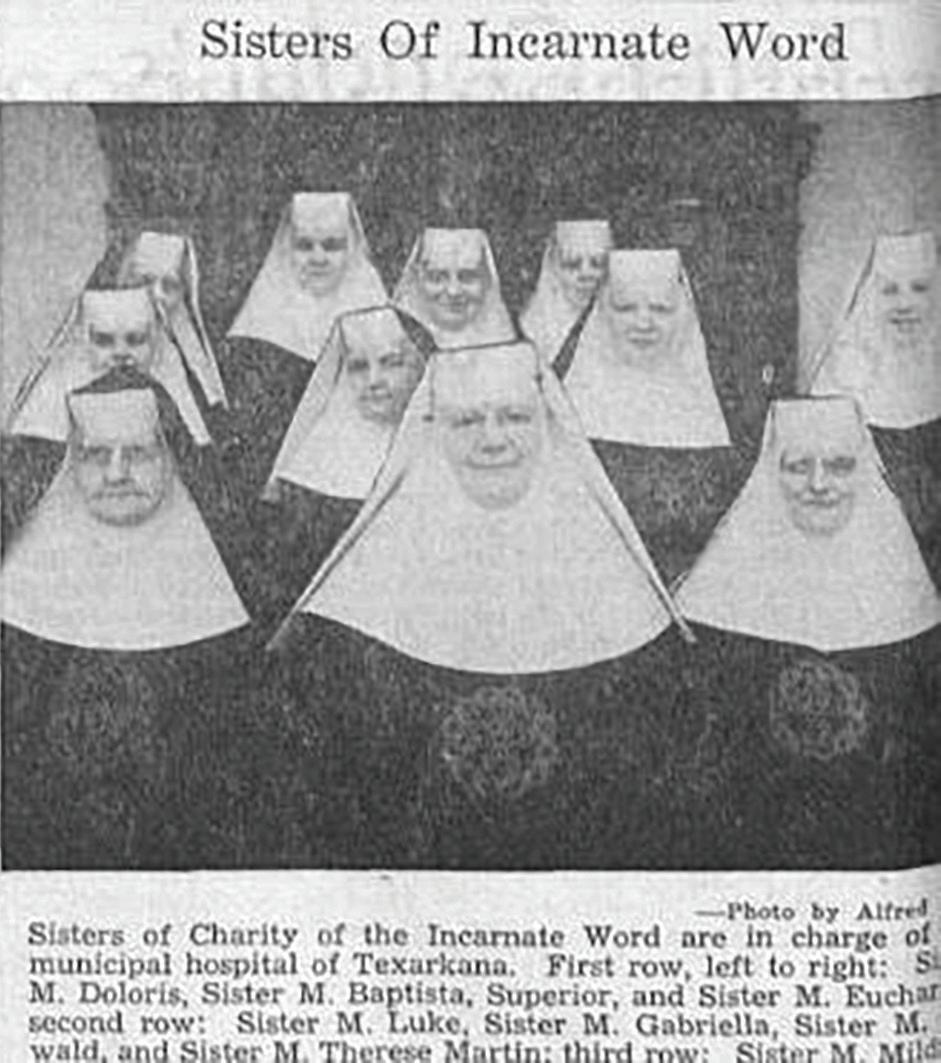
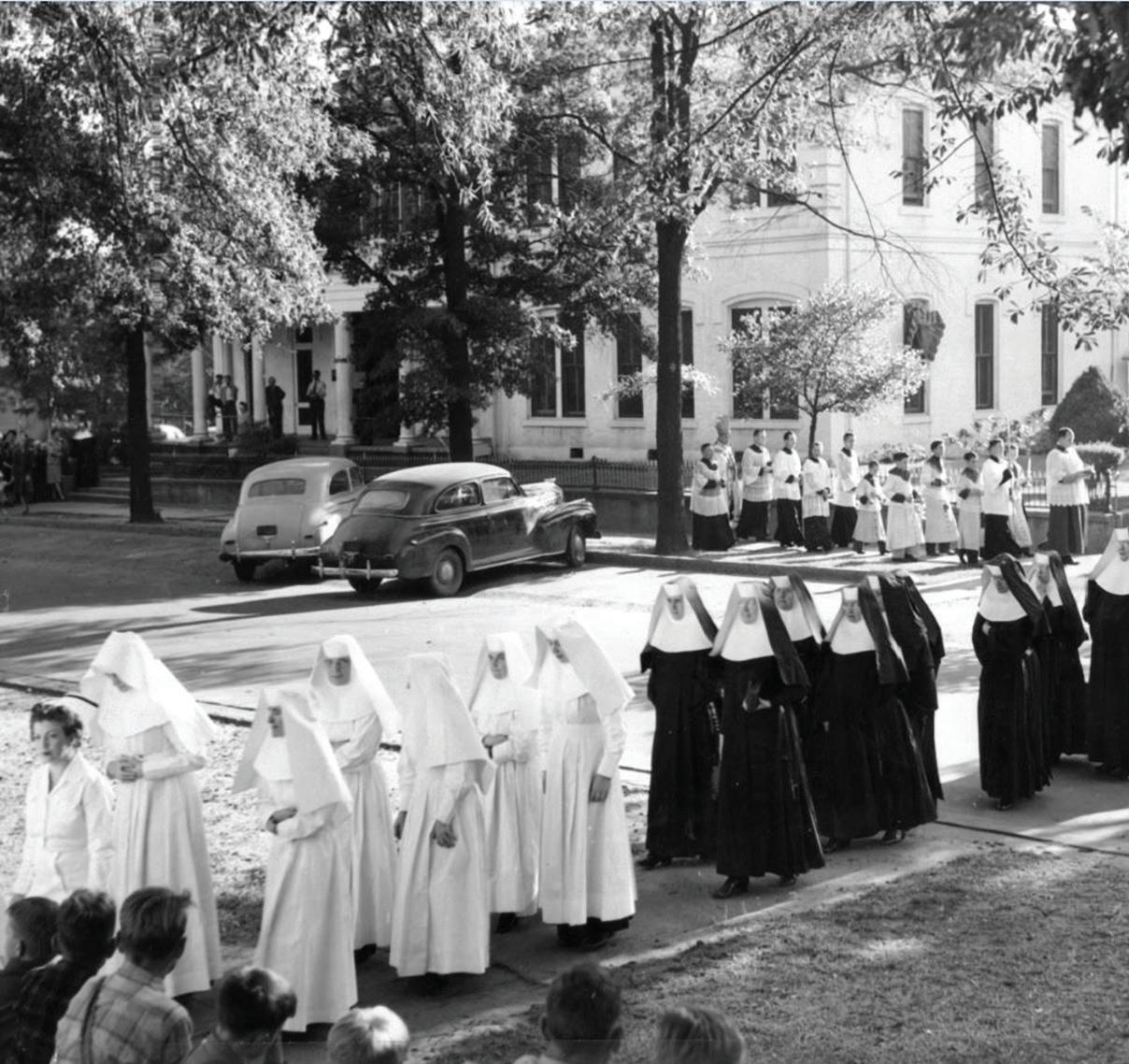
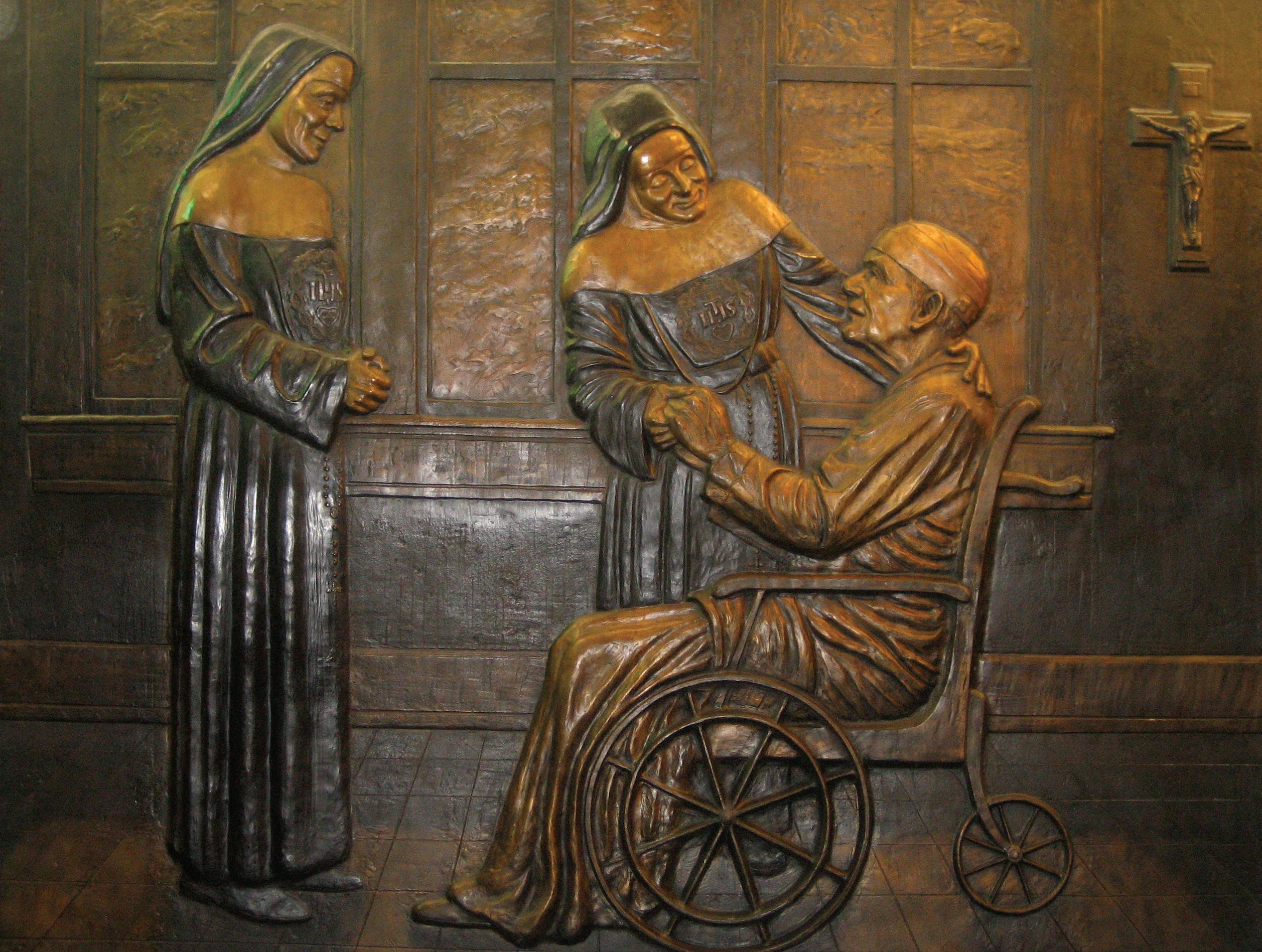
At the turn of the century, healthcare in small towns like Texarkana was often rudimentary and expensive. The city’s Catholic priests saw the extreme need for accessible, high-quality care, particularly for the many impoverished people in the community. In 1915, a devoted parishioner’s final will and testament would make great strides in meeting these needs.
Michael Meagher was an Irish Catholic who worked as a civil engineer and acted as a key community leader in early Texarkana. Upon his death, he left his estate of about $75,000 (adjusted for inflation, this amount is worth over $2.2 million in 2023) to found and operate a “charity hospital, for the treatment of all poor and indigent persons
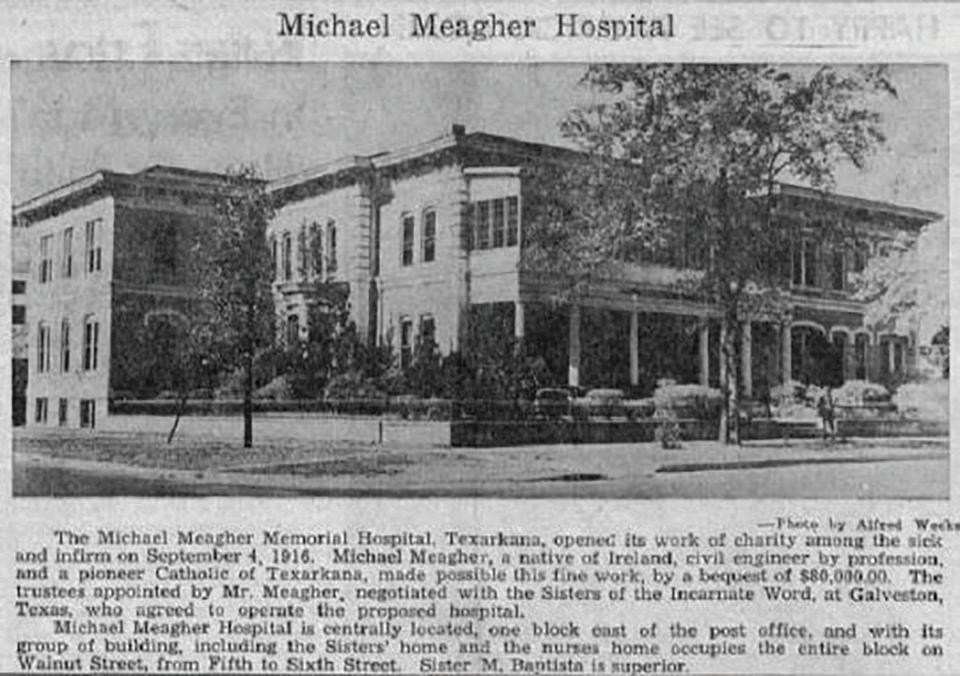 A bronze relief depicts Phillip Brooks, the sisters’ first patient in Texarkana.
The Sisters of Charity of the Incarnate Word from a 1944 newspaper clipping.
Sisters process in at the 1945 groundbreaking of what would be renamed St. Michael Hospital.
A bronze relief depicts Phillip Brooks, the sisters’ first patient in Texarkana.
The Sisters of Charity of the Incarnate Word from a 1944 newspaper clipping.
Sisters process in at the 1945 groundbreaking of what would be renamed St. Michael Hospital.
in need of medical attention, and such other persons as the trustees under the rules and regulations permit.” This hospital was to be run by the Sisters of Charity of the Incarnate Word and overseen by a local board of trustees, comprised of prominent businessmen F. W. Offenhauser, John P. Kline, Leo Krouse, W. Lee Estes, C. M. Blocker, Dr. J. A. Lightfoot, Dr. R. L. Grant, and P. J. Ahern.
The hospital, then called the Michael Meagher Memorial Hospital, opened its doors in 1916. Located downtown, in the old Dale Sanitarium at 5th and Walnut Streets in Texarkana, Arkansas, the facility had 50 beds, 10 physicians, 10 nurses, one dentist, and six Sisters of Charity.
Phillip Brooks, a transient and destitute man, became the sisters’ first patient in Texarkana. On the very day of the hospital’s opening, he was found dying in the boiler room, having sought refuge there over the night. Mr. Brooks epitomized the patient whom Michael Meagher and the sisters sought to help, as Mr. Brooks needed medical attention but had neither money nor social status. It was a fitting beginning.

As Texarkana grew, so did the need for a larger hospital. After three years of excavation and construction, the renamed St. Michael Hospital reopened in 1948, equipped with 127 beds. The hospital would expand at its downtown location again in 1956, 1975, 1978, and 1985.

 CHRISTUS St. Michael Health System celebrated 100 years in 2016. As part of the centennial, the hospital also held a mass.
CHRISTUS St. Michael Health System celebrated 100 years in 2016. As part of the centennial, the hospital also held a mass.
Due to the limited available land in downtown Texarkana, the hospital relocated to more spacious property in the early 1990s. The new site, chosen by hospital officials, was a 63-acre wooded area that was ideal not only for St. Michael’s construction needs but also in addressing the spiritual needs of the hospital’s patients by providing a healing, natural environment. To this end, the new site included a 1.5-acre lake, three creeks, and water features.
One of the first facilities to open on the new campus was the St. Michael Outpatient Rehabilitation Center, beginning operation in 1993. CHRISTUS St. Michael Rehabilitation Hospital opened in February 1994. Then, in December 1994, the new St. Michael Health Care Center opened, serving patients from 13 counties.
In 1999, the CHRISTUS Health System was formed when the Sisters of Charity of the Incarnate Word in Houston and the Sisters of Charity of the Incarnate Word in San Antonio merged their healthcare ministries in order to serve their communities even more effectively. The congregations shared a legacy, having both been born of the three sisters who had arrived in Galveston 157 years prior; reuniting through this ministry made perfect sense. St. Michael Hospital became CHRISTUS St. Michael Health System, poised for further growth and innovation in the 21st century.
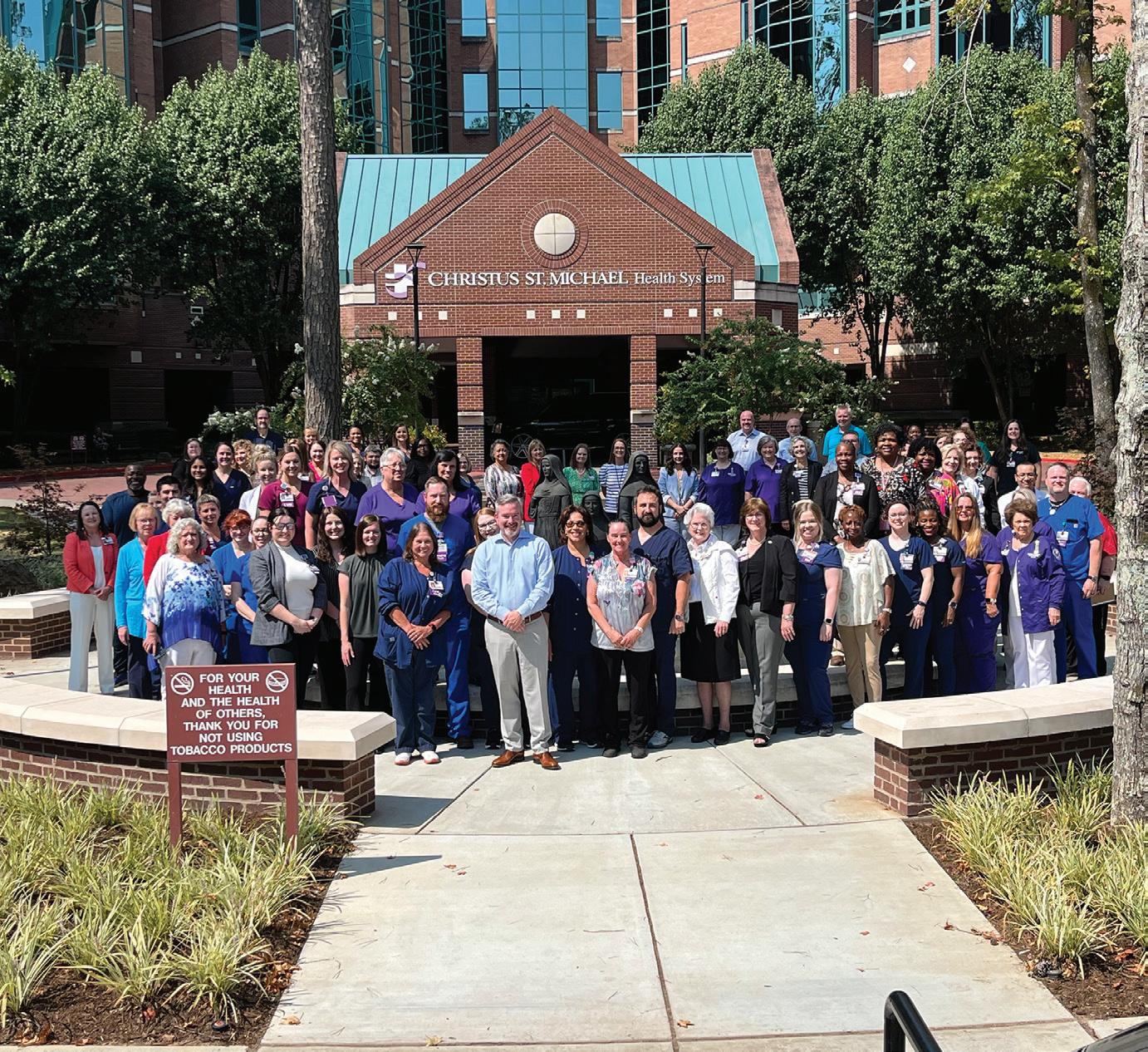
Today, the hospital sits on 128 acres, made possible by land purchases in 2003 and 2005. They continue to extend the healing ministry of Jesus Christ by making healthcare more accessible to the Texarkana region. Construction is underway for a new, 12,000-square foot emergency center, set to open in 2024. As the regional leader in cancer, heart, emergency, orthopedic, surgical, and women and children’s care, CHRISTUS St. Michael continues to expand its specialty services to ensure the citizens of Texarkana can get the care they need right here at home, now and for years to come.


 Groundbreaking for the new emergency center, scheduled to open next year.
Groundbreaking for the new emergency center, scheduled to open next year.


A RICH HISTORY WITH DEEP ROOTS
Pete Mankins Nissan, the oldest Nissan dealership in Texas, has a long, rich history that spans 100 years and five generations. The founder, B. A. Watson, started his first job in 1905 in a bicycle shop in Tennessee at the age of fourteen. While still in his teens, he and his brother picked up crates of unassembled cars at the train station and assembled them for the dealer. Then he opened a mechanic shop, from which he served the community not only as a car and motorcycle mechanic but also as a blacksmith. In 1912, after graduating from Oklahoma A&M, he became the Chevrolet dealer in Snyder, Oklahoma. At that time, dealerships did not maintain large inventories; the factory sent one car at a time to be sold.
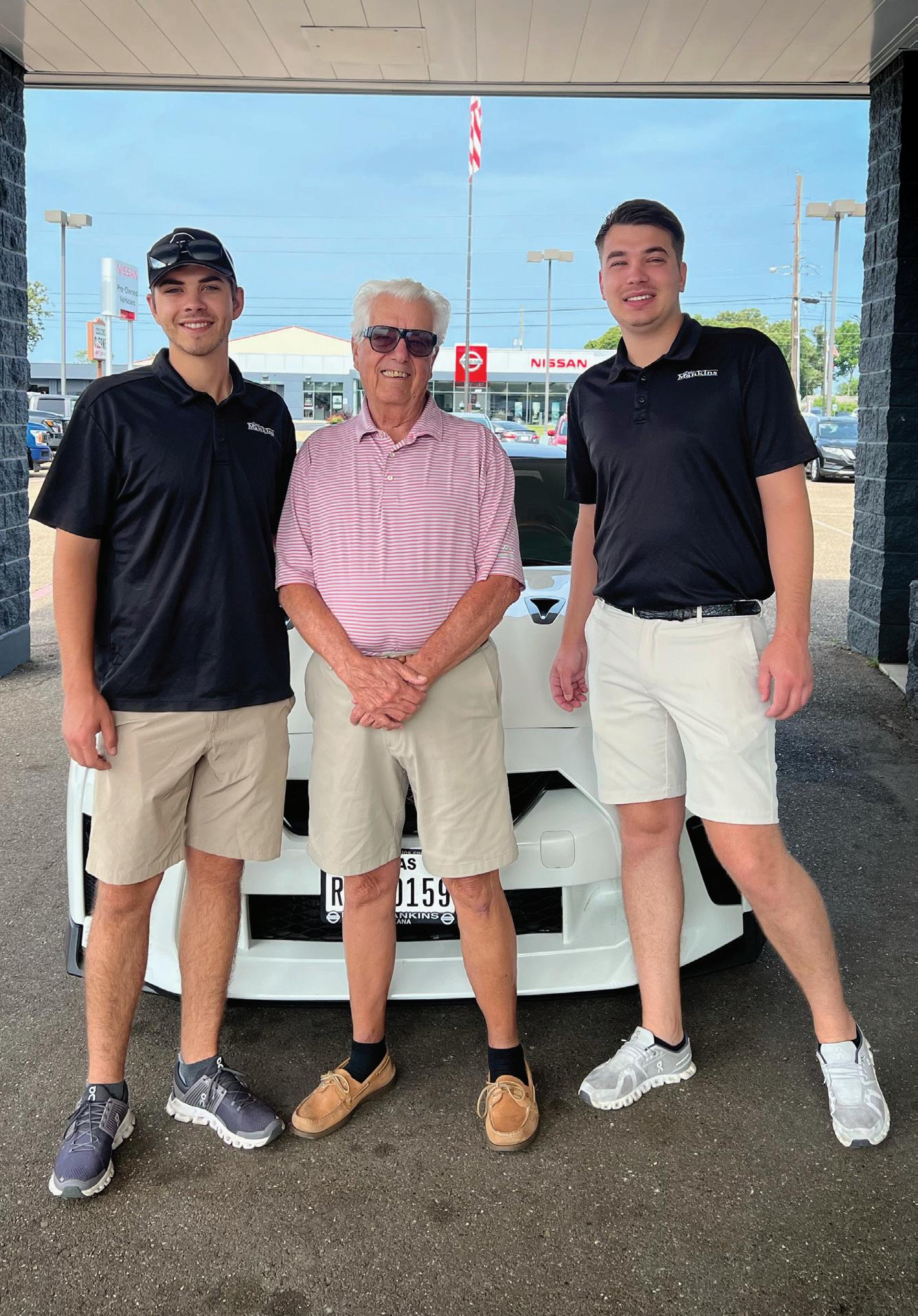

In the summer of 1917, Mr. Watson married Ora Bizzell, who had just graduated from Oklahoma College for Women. The couple took a honeymoon road trip to San Francisco in a new Chevrolet—a brave journey, as automobiles were in their infancy, and a car was not as reliable as a horse and buggy. Two months and 26 flat tires later, the newlyweds had completely worn out the vehicle; it had to be towed back the final 40 miles.
During the Great Depression, the Watsons and their two children, Joy and Bobby (Betty was born later), were forced to flee the Dust Bowl of Oklahoma. They loaded up their belongings and headed for Texas in search of better opportunities. They made it to Texarkana, where a relative lived. They had also run out of money, so Texarkana became their new home.
Swampy Graves, Ora’s relative, owned a successful grocery business. He told Wat, as Mr. Watson was known to his friends and family, that he’d give him 90 days’ rent if he’d service his 12 delivery trucks, which Wat agreed to do.
Wat, with the financial help of a rich German businessman who owned a box factory in Texarkana, opened a mechanic shop and
26 OCTOBER 2023 . fourstatesliving.com
The Mankins family has been an integral part of the community for 100 years.
Hayden White (pre-owned manager), Pete Mankins, and Kyle White (general manager).
salvage yard in 1923 on Broad Street. In the mid ‘40s, after selling his shop to his son Bobby and daughter-in-law Betty, Wat went into business with his daughter and son-in-law, Joy and Ben Mizell, as the International Harvester truck dealers. The dealership, located on Texas Avenue (now Texas Boulevard) between 6th and 7th Streets, was aptly named Watson Mizell Motors.
In 1948, they expanded the business by purchasing the Pontiac franchise from the Carter family and moving the dealership to the corner of 7th and Spruce Streets. The dealership thrived as part of the Texarkana community. Their first customer was John McNeil Stone. Interestingly, John’s granddaughter Susan would later marry Wat’s grandson Warren.

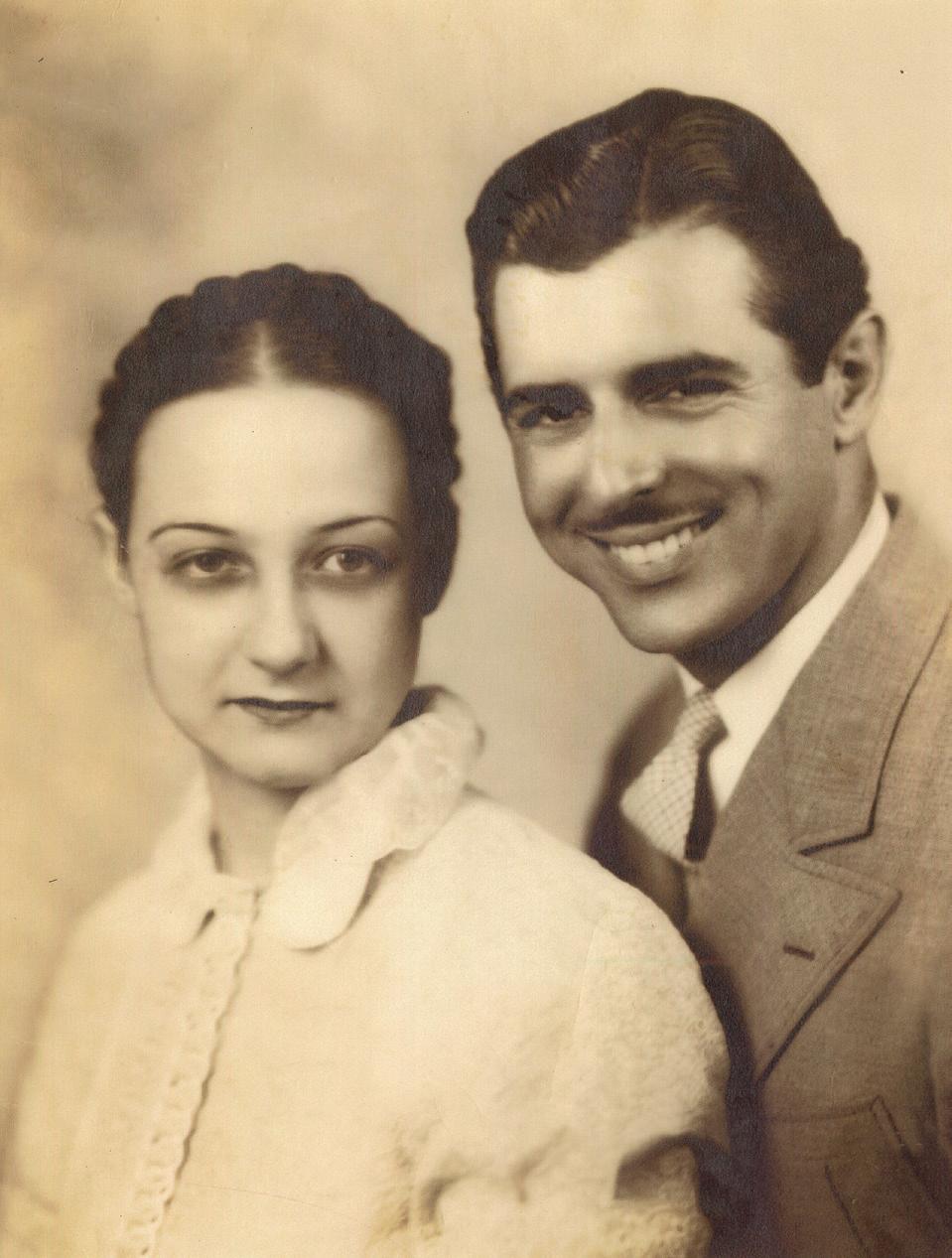
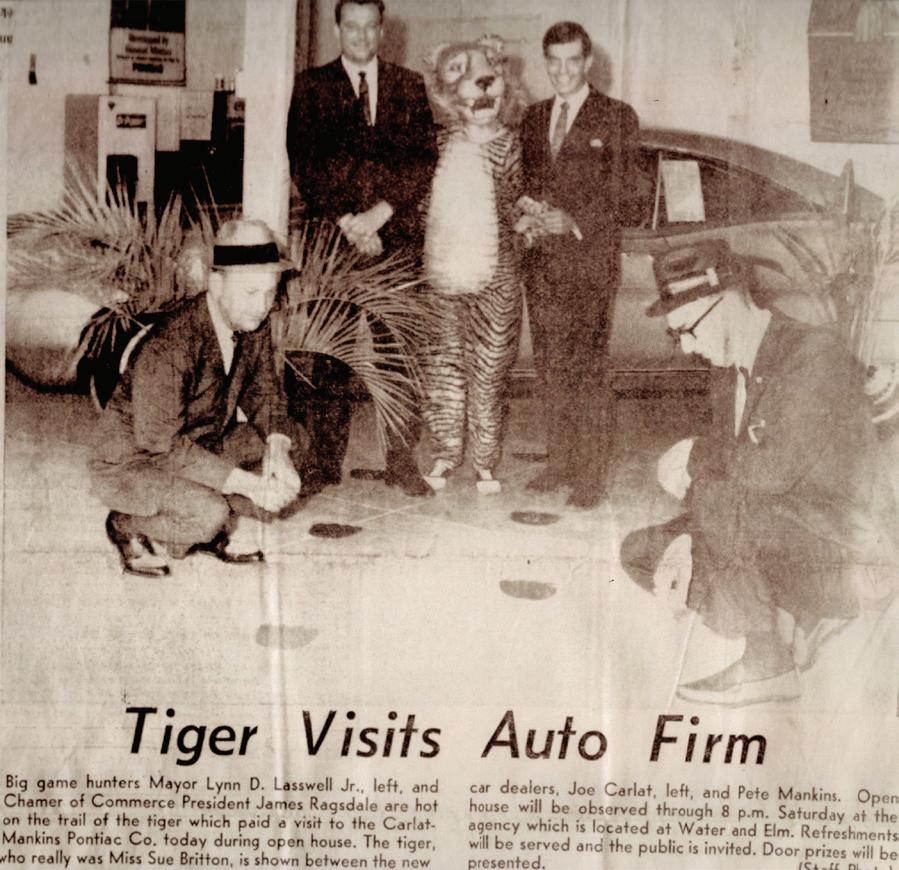
Eventually, Ben and Joy bought the company from the Watsons and renamed it Ben Mizell Motors. In 1960, Ben added the Oldsmobile franchise and changed the name to Ben Mizell Olds-Pontiac. Some of the firm’s loyal employees were Corinne Hunter, Melvin Parks, Melba Jo Ewing, Robert Williams, Billy Harris, Robert Woolsey, and Bill Woolsey, who built Mrs. Pete Mankins’ 1933 Pontiac hot rod.
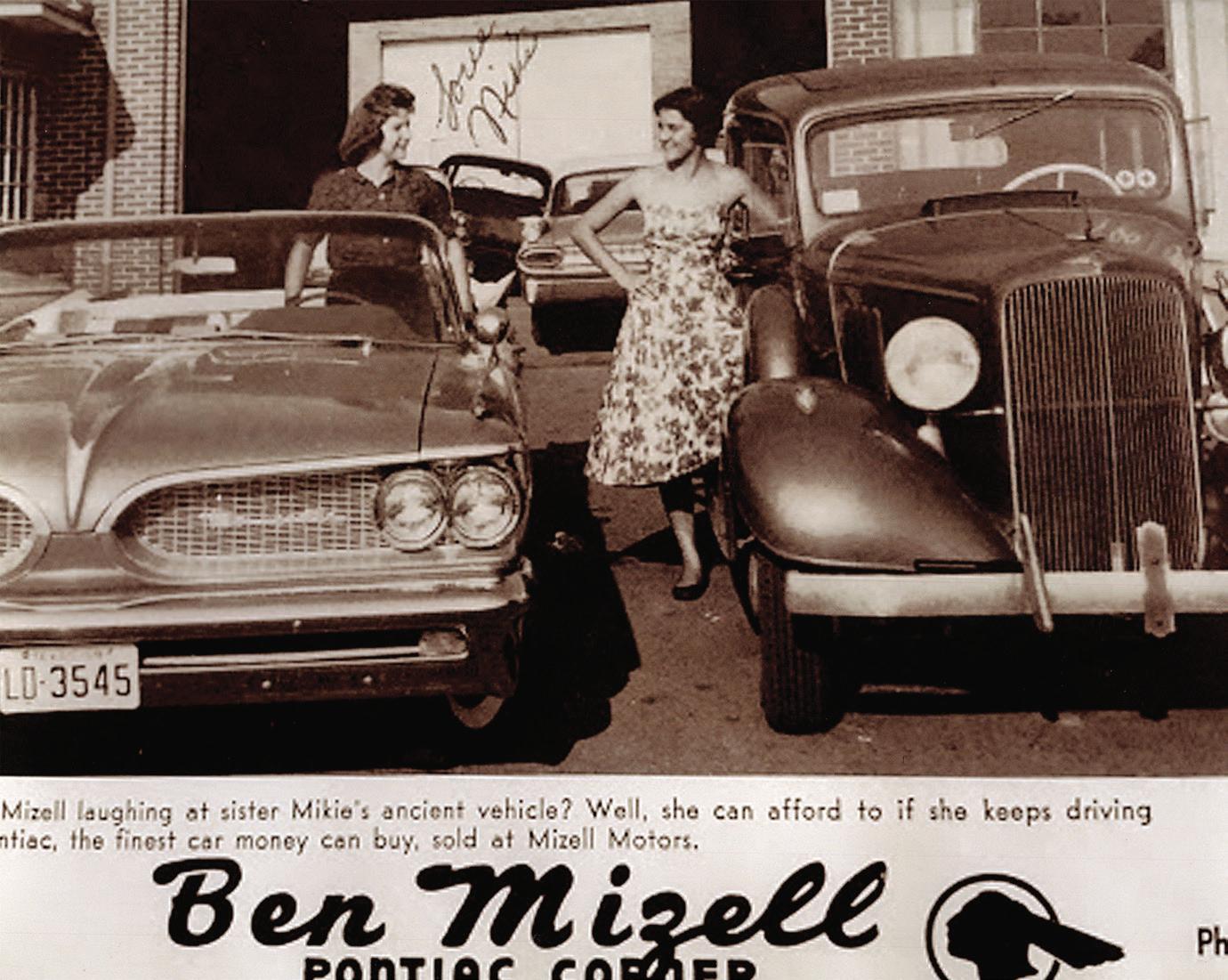
Ben was active in the community as president of the Chamber of Commerce, the Four States Fair, the Texarkana Mounted Quadrille, and the local chapter of the American Red Cross. Later he served as city manager for Texakana, Texas. The Mizell family had deep roots in Texarkana, as Ben’s great-grandfather, Thomas Orr, was the first judge in Lafayette County (now Miller County). Later, he resigned to become the first mayor of Texarkana, Arkansas.

Ben and Joy had four daughters: Cherie, Mikie (Mike), Niki, and Candace. At that time in history, there were no women car dealers. However, Mike’s husband, Pete Mankins, was a mechanical engineer and wanted to try the car business. He worked at the dealership for three years before he and Mike bought it in 1968, changing the name to Pete Mankins Pontiac. Mike taught mathematics at Texarkana College, but all three of her sisters worked in the dealership at different times over the years.
One day while at the 7th Street location, Pete was standing in the showroom looking out the window. Fortunately, he turned and walked away, for at that exact moment a car came unhooked from the wrecker that was towing it, crashing through the plate glass window. It was Pete’s lucky day.
In 1969, Pete added the Datsun and Mercedes-Benz lines. In the early ‘70s, he purchased the Cadillac store— both the facility and the franchise. The dealership was renamed Pete Mankins Pontiac Cadillac and moved to its current location at 3707 Summerhill Road. Several other franchises came and went over the years, including Vauxhall, Daihatsu, and Fiat.
27 OCTOBER 2023 . fourstatesliving.com
Wat and Ora Watson.
Joy and Ben Mizell.
The Mankinses, like the Mizells before them, had four daughters: Allison, Michelle, Stephanie, and Jennifer. It was Allison’s husband, Keith White, who was interested in becoming a dealer. In 1993, Allison and Keith became the fourth generation of partners in the store. Keith ran the dealership, and Allison was a preschool teacher at Williams Memorial Day School. After selling the Pontiac, Mercedes-Benz, and Cadillac franchises, Keith and Allison renamed the business Pete Mankins Nissan, which it remains to this day. Keith’s mother, Kathy White, and his sister, Tana Smith, also worked for the business.


After Keith’s untimely death in 2002, Allison remained partners with her dad, Pete. After a short time, they sold part interest to Brant Smith and his wife, Teri. Brant was an excellent partner and managed the business until 2020, when he resigned due to health reasons.
Allison and Keith had three sons: Kyle, Hayden, and Grant. After attending Texas Tech, Kyle and his wife, Eden, moved to Texarkana, as did Hayden and his fiancée, Sarah Foshee, a graduate of Texas A&M University. After working at the dealership for a few years, Kyle, Hayden, and Allison bought the remaining stock from Mike and Pete, becoming the fifth generation to own and operate the dealership. Allison and her three sisters are also partners in the Toyota store in Waco, Texas.

Kyle is currently the general manager, and Hayden is the pre-owned manager. Their younger brother, Grant, may join the business after graduating from Texas State University next year. They have a younger sister, Joy, who recently said she may go into business with them, too.
Just as the dealership has evolved over the past 100 years, the vehicles themselves have evolved. Originally, they were very simple and cheap. However, they were problematic; you needed to be something of a mechanic in order to drive one. Now, cars are more expensive, but they are safer, more environmentally sound, and can travel many miles without needing to be repaired.
The Mankins family dealership has been an integral part of the fabric of Texarkana and the surrounding area for 100 years. It has supported area nonprofits like Temple Memorial Pediatric Center, Opportunities, Inc., and the Junior League of Texarkana. They have participated in telethons and sponsored golf tournaments. Likewise, the community has always been very supportive of the dealership with its loyal customer support. Many area families have been customers for several generations. One customer recently traded in a little orange Datsun pickup, which he purchased in 1985. It was still running.
Pete Mankins Nissan is especially appreciative of its employees. The dealership has provided employment for hundreds of families over the years, but the employees themselves have given of their time and energy to make the dealership strong. Some employees have been working at the dealership since they were teenagers, like Jonathan Webb and Scott Dye. Others have gone on to become partners in other stores, like Mike Kennedy, Jeff Hunter and his daughter Amy Hunter, Chris Lenckosz, Herb Easley, Art Amaral, Greg Helfrich, and a Mankins nephew, Nicholas Parks. Family members who worked at the business were Jimmie Tatom, Hank Johnson, Bill Graves, Stephanie Mankins, Rob Erickson, Bill Gribble, Ben Smith, Andrew Smith, Taylor Parks, Dana Smith, and Mike Nasche.
Some dedicated employees of the past include LaNell Henry, Sherry Melton, and Cheryl Griffin, who were members of the office staff,and Walter DeVore, an excellent Mercedes technician. Others who made Pete Mankins Nissan what it is today include Buford Payne, Pete Winger, John Norwood, Ronnie Tedder, Jim Griffie, Toby Erickson, and John Galloupe. Currently, the employees who have been with Pete Mankins Nissan the longest are Benito Ochoa (10 years), Kristie Marlin (11 years), David Stanley (12 years), Matt Ash (14 years), Jonathan Webb (16 years), Scott
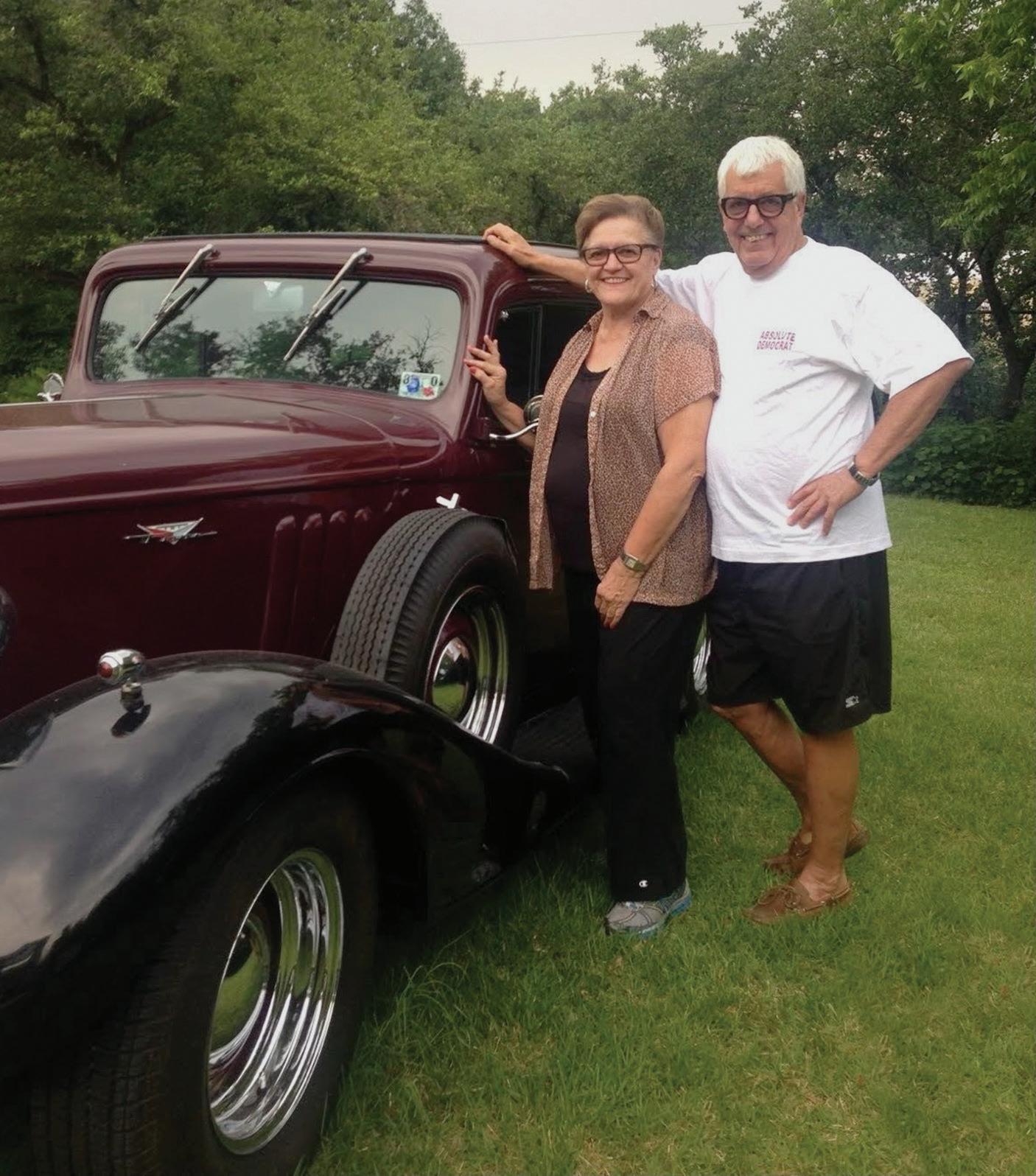 Mike and Pete Mankins.
Stephanie, Michelle, Jennifer, and Allison.
Allison and Keith White with Kyle, Hayden, and Grant.
Mike and Pete Mankins.
Stephanie, Michelle, Jennifer, and Allison.
Allison and Keith White with Kyle, Hayden, and Grant.
Dye (24 years),

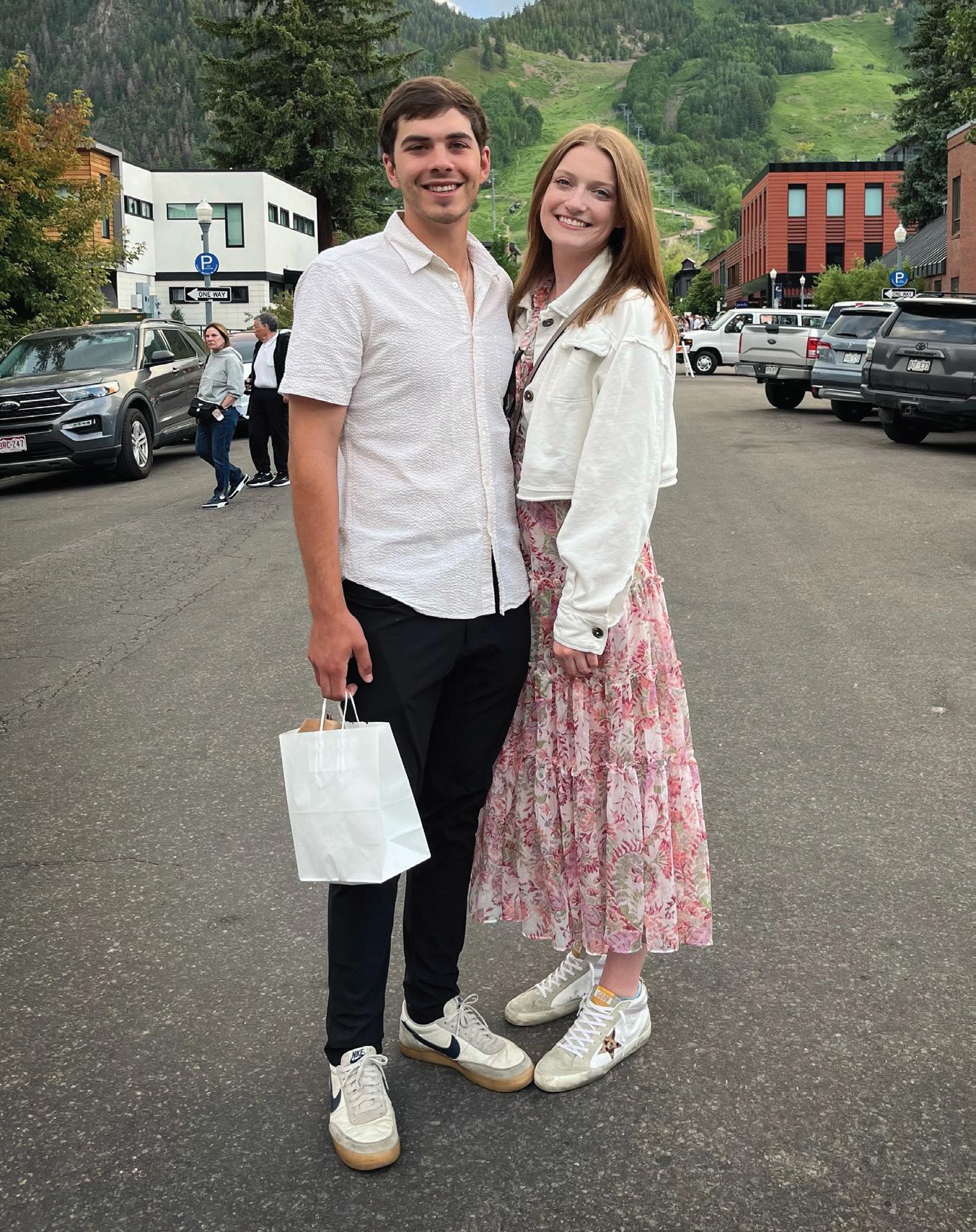
(24 years),
(33 years). There have been many more wonderful employees—far too many to name. The business is fortunate to have had such loyal employees, who, through their hard work and honest dealings, have built the good reputation of the company.

Mike and Pete Mankins believe that the most important rewards of their 59 years in business in Texarkana have been the many friendships they have made in the community, as well as the long-term relationships with their employees. They would like to thank their many loyal customers and dedicated employees. They would also like to wish the fifth generation of the Mankins family good fortune and continued success in the future of Pete

29 OCTOBER 2023 . fourstatesliving.com
Carol Monk
and Ruth Dye
Mankins Nissan.
Kyle and Eden White.
Pete “buying cars” from his grandchildren.
Grant, Hayden, Kyle, and Joy at Kyle’s wedding in November 2022.
Hayden White with Sarah Foshee.


30 OCTOBER 2023 . fourstatesliving.com
UNIQUELY TEXARKANA

Texarkana’s iconic U.S. Post Office and Courthouse, built in 1933 and located at 500 North State Line Avenue, is the only federal building in the country situated in two states and the only property in the city that straddles the state line. A National Register of Historic Places Landmark, it replaced the first courthouse built at this location, which was completed in 1892 and served as a courthouse for both states until 1911, when a separate courthouse was built entirely in Texas. The 1892 building served Arkansans until 1930, when it was demolished in preparation for the courthouse we know today. Constructed of Texas granite and Arkansas stone, this uniquely Texarkana landmark has retained its original functions in addition to serving as a popular photo spot for residents and tourists alike. The space in front of the building, adorned with its two-state sign, is known affectionately as Photographers’ Island; it is commonly cited that the grand building is the second-most photographed courthouse in the nation, after the Supreme Court.


31 OCTOBER 2023 . fourstatesliving.com
A GREAT PLACE TO START
For nearly 100 years, Texarkana College has educated this region’s students.
 Derrick McGary, current president of the Texarkana College Board of Trustees, spoke at commencement.
Derrick McGary, current president of the Texarkana College Board of Trustees, spoke at commencement.
Texarkana College (TC), only four years shy of its centennial celebration, has served as a bedrock of the city since its founding. In 1925, Texarkana Independent School District board members put forth a proposal for a community college, to be run in conjunction with TISD but open to students from both states. This would be the first institution of higher education in Texarkana. With approval from the city council, TC (then known as Texarkana Junior College) was born in September 1927. The college, initially located on TISD’s Pine Street campus, served 80 students during its first year. Admissions were open to white students, male and female, who were at least 16 years old, had graduated high school, were vaccinated, and agreed not to participate in fraternities or hazing of any kind.
The first president of TC was Dr. Henry Stillwell, whose tenure lasted 32 years. He acted as both TISD superintendent and TC president for more than 20 of those years, before stepping down from his K-12 role in the 1950s.
In 1949, Ross Perot graduated from Texarkana College. Twenty years later, as he accepted an award as a distinguished alumnus, he told students, “Aggressiveness is the key to success.” He would go on to become one of the wealthiest people in the country and to run two of the strongest independent/third-party presidential campaigns in U.S. history. Though the most famous, he is but one of many successful TC alumni.
For almost three decades, TC and TISD shared not only a campus but also teachers: many educators worked at the junior high, high school, and college simultaneously. As the Pine Street building aged and the college student body grew, it became clear that a move was imminent for TC. An influx of students on the GI Bill after World War II was the deciding factor.

In 1953, Texarkana College welcomed students at its new, 38-acre campus at 2500 North Robison Road, where it remains today. The Texarkana Gazette reported that the college, now an entity separate from TISD, consisted of “three commercial rooms for business administration classes, a music department with two large chorus and five practice rooms, a spacious gymnasium, speech department, science laboratories, a well-equipped library, snack bar and . . . approximately thirty classrooms.”
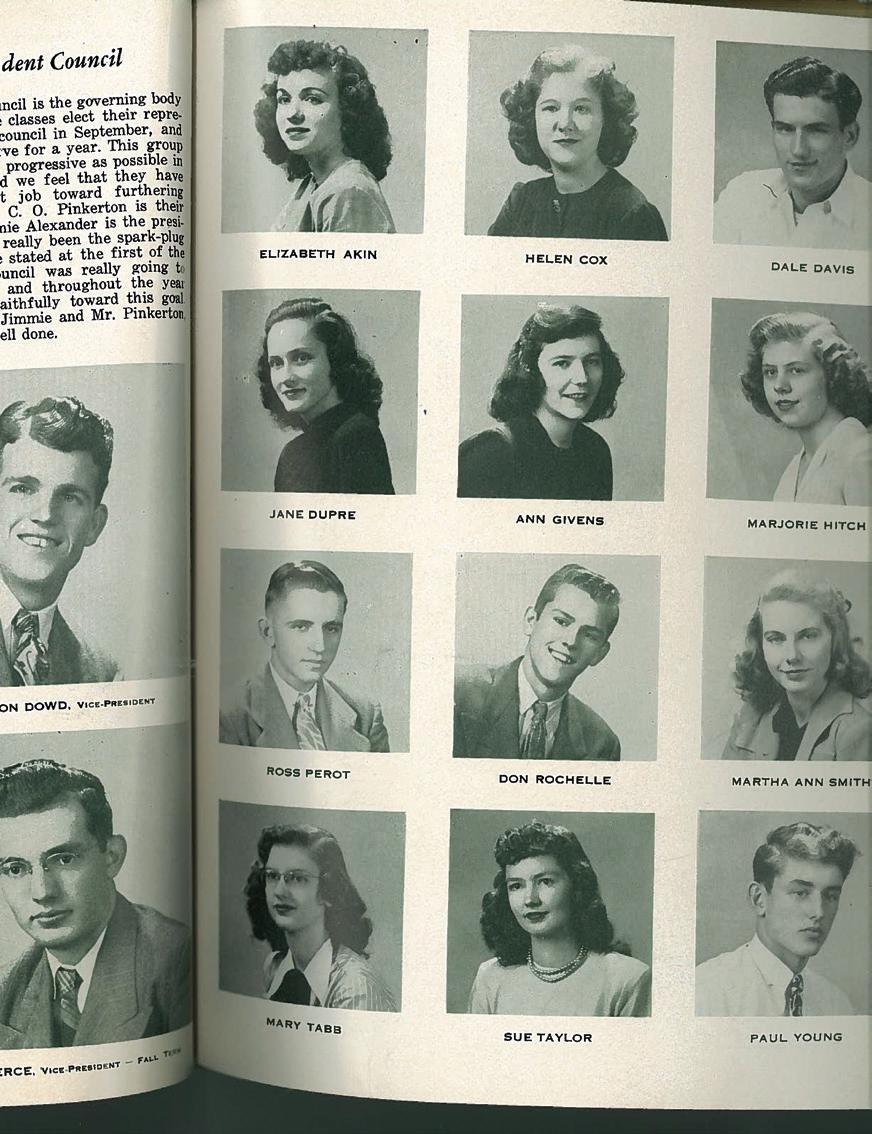


Over the years, TC has added new buildings and renovated existing ones, including the library, an administration building, a nursing building, a recreation center, a new student center, dormitories, the KTXK radio station, and, in recent years, new workforce technology training facilities.
While the ruling in Brown vs. Board of Education dictated desegregation as the law of the land in 1954, Black students were not allowed to enroll at TC for almost a decade. In 1963, two Black women—Linda Ruth Tolbert and Albirda P. Briley—began classes, successfully desegregating the college and ushering it into the modern era. Today, the TC campus is vibrant in its racial diversity, with almost 40 percent of its students identifying as people of color. In fact, in the entire state of Texas, TC has the thirdhighest percentage of enrollment for African American students and the highest percentage of degrees and certificates awarded to African American students.

33 OCTOBER 2023 . fourstatesliving.com
Texarkana Junior College in 1927, located on TISD’s Pine Street campus.
The 1931 edition of the Texarkana Junior College yearbook, The Bulldog.
Ross Perot attended Texarkana Junior College from 1947 to 1949, before joining the U.S. Naval Academy.
In 1956, TC became the first nursing school in the Texarkana region and has prepared the majority of area nurses for their careers in healthcare. The vocational nursing program was the first of its kind in all of Texas (1956), while the registered nursing program (granting associate degrees in nursing) was established in 1959 as one of the first three programs of its kind in Texas.
In 1959, the TC Foundation was established as a separate 501(c)(3) to provide students with affordable and accessible opportunities in higher education. The TC Foundation awards annual student scholarships funded through earnings from endowments and individual private donations. In 2022, more than $430,000 in scholarships were awarded. Eighty percent of TC students receive scholarships or financial aid.
In 1972, East Texas State University–Texarkana (which would become Texas A&M University–Texarkana in 1996), opened in a temporary facility north of the interstate. In 1976, TC deeded land to the senior college, enabling them to build a $2.5 million facility. This partnership allowed students of both institutions greater access to resources and higher education. The community value of this early partnership is incalculable. While TAMU–T has been located at their Bringle Lake campus since 2017, the two institutions still maintain a strong partnership to support students’ goals for degree completion.
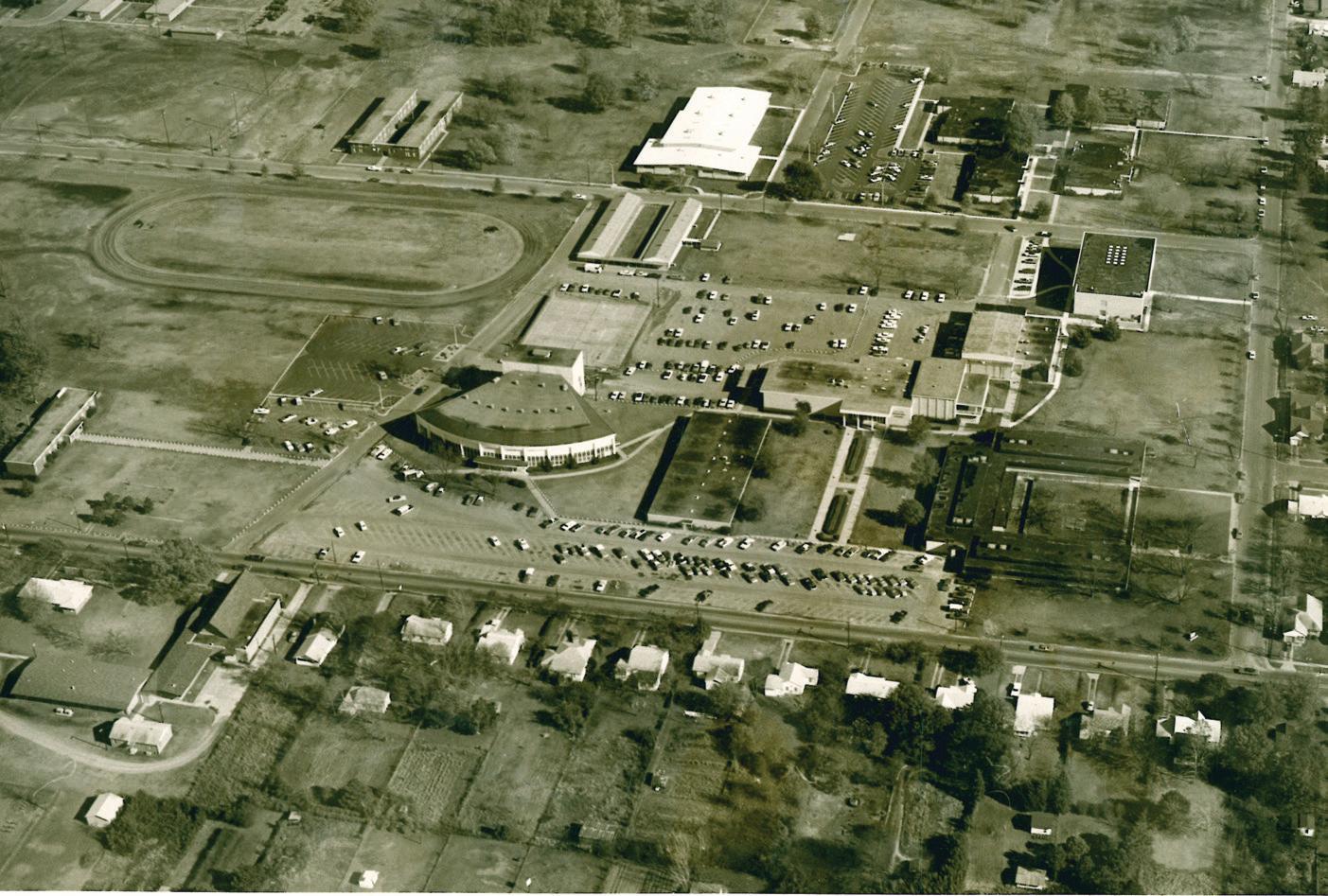

In the 21st century, Texarkana College has lived up to its motto, establishing itself as “a great place to start . . . or start over” for students of the modern era. They currently offer 22 academic programs that lead to associate degrees or transferable credit, as well as 12 workforce programs in high-demand occupations that quickly lead to careers with high wages and secure futures. Tuition and fees are affordable, averaging less than $3,000 per year per student. The low financial investment allows students who otherwise

34 OCTOBER 2023 . fourstatesliving.com
An early aerial view of the Robison Road campus.
Truman Arnold graduated from the college in 1958. In 1995, he was honored as a distinguished alumnus, and a new student center was named for him. Below is an original architect’s drawing of the center in 1993.
may not be able to sustain multiple years of study to graduate. In fact, TC ranks in the top five of all Texas community colleges for threeand four-year completion rates and has been recognized on the state and national levels for student achievement and success outcomes.
Further, TC is the leading provider of high school dual credit courses in northeast Texas, enabling area students to complete college credit courses for minimal or no cost while concurrently enrolled in high school.

The last five years have seen huge facilities improvements at the college. The Betty & Buddy Ledwell Workforce Training Center opened in 2018, and the McCulloch Industrial Technology Center in 2023. Within these state-of-the-art facilities, students have access to the most in-demand training technology to prepare for work in the fields of mechatronics and robotics, construction, electrical technology, and HVAC technology. Also in 2023, students benefited from the newly renovated science, technology, engineering, and math complex, named in honor of the college’s former president, Dr. James Henry Russell. The college also added a barber school to their existing cosmetology program this year.
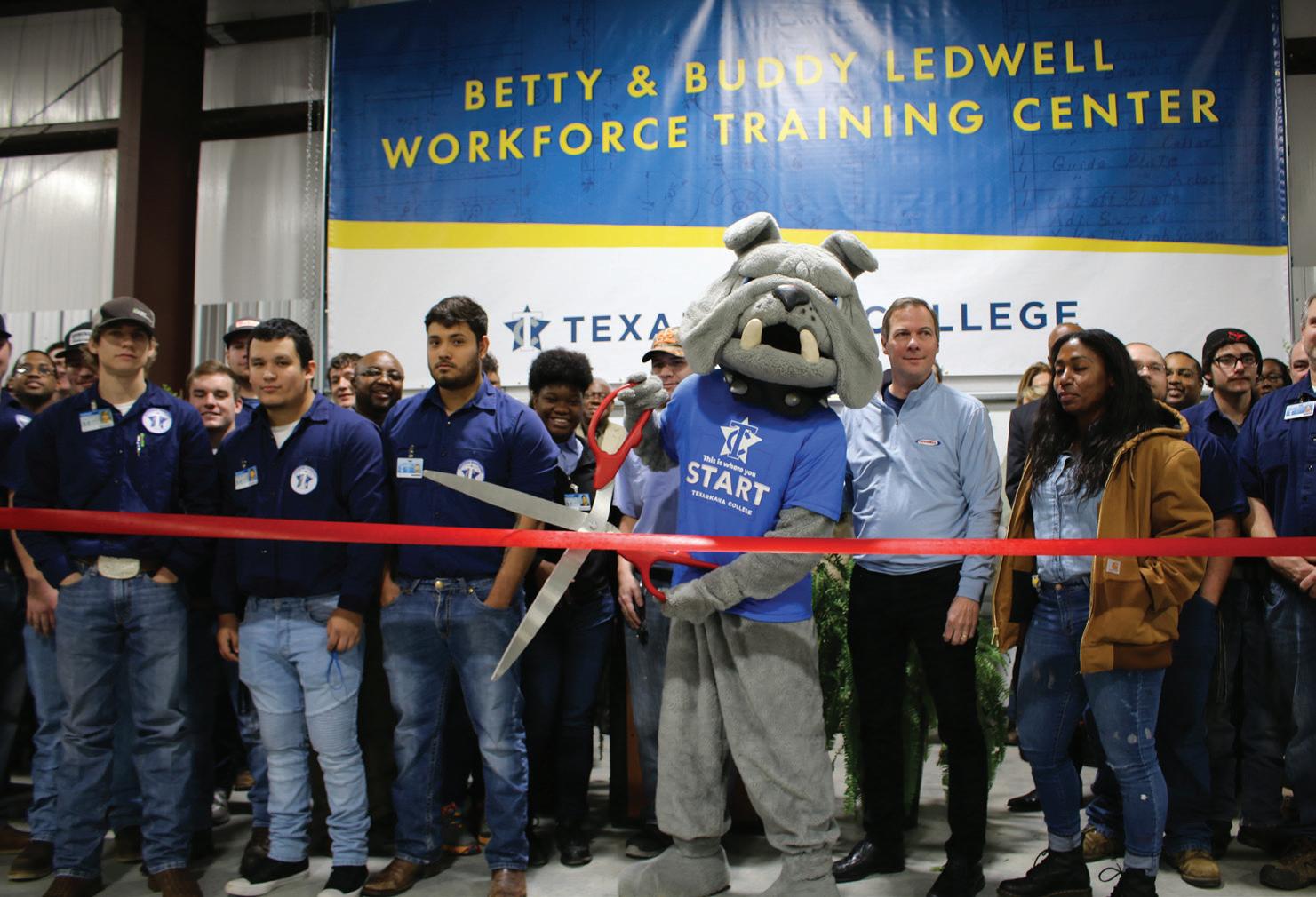
In 2024, TC’s aviation program is slated to launch an airframe and powerplant mechanic training program. The program is in partnership with the Texarkana Regional Airport and will be located on the airport grounds.

Over its 96 years, Texarkana College has educated over 250,000 students of all ages and from all walks of life. Texarkana has been indelibly shaped by the institution and continues to benefit from its accessibility and excellence.
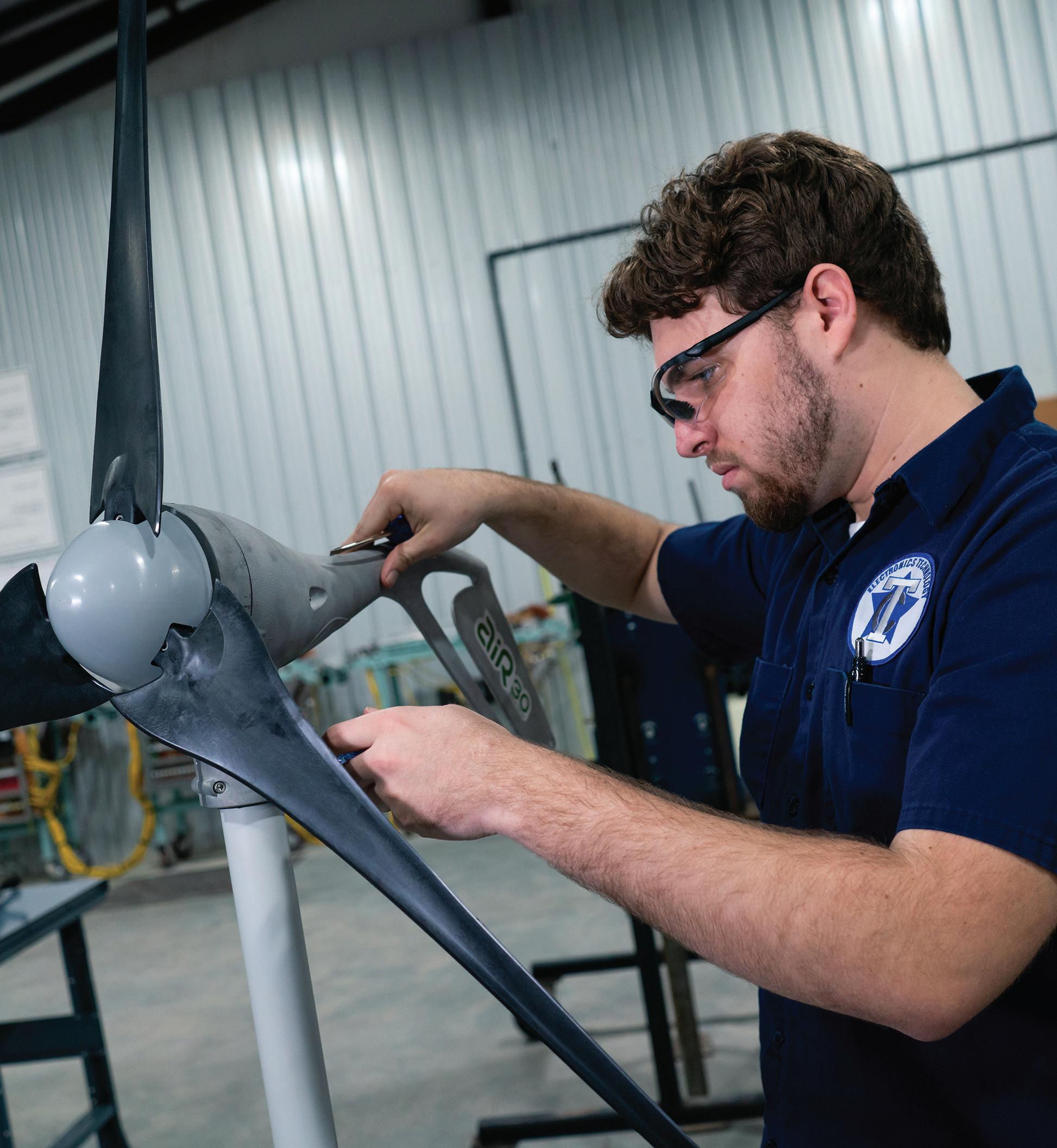 The Betty & Buddy Ledwell Workforce Training Center opened in 2018.
The McCulloch Industrial Technology Center opened earlier this year.
TC’s nursing school is the oldest in the region, having opened in 1956.
TC’s aviation program is expected to launch an airframe and powerplant mechanic training program in 2024.
The Betty & Buddy Ledwell Workforce Training Center opened in 2018.
The McCulloch Industrial Technology Center opened earlier this year.
TC’s nursing school is the oldest in the region, having opened in 1956.
TC’s aviation program is expected to launch an airframe and powerplant mechanic training program in 2024.

ROLLIN’ ON THE RIVER
Red River Credit Union started small in the 1940s and has grown into a major institution in the area.
Red River Employees Federal Credit Union (RRCU) was established on April 6, 1943, under charter 5029 and with a different name. A small group of employees from Red River Federal Ordnance Plant formed a financial institution called Red River Ordnance Federal Credit Union. All plant employees were eligible for membership with a 25-cent fee and a $5 membership deposit. The name was changed to Red River Arsenal Federal Credit Union in 1957 and then to the current name in 1963.
The first office was located above a blacksmith shop, and in 1956, the credit union expanded to its first building on the Red River Army Depot campus. Faye Mahone was hired as the first full-time staff member and served as the credit union manager. She later became the first secretary of the Wright Patman Chapter of Credit Unions. Sammie Murdock was appointed as the first loan officer by the Board of Directors a few years later.
By the end of its first year in 1943, RRCU had 74 members and $583 in assets.
1960s AND 1970s: EXPANSION
In 1968, membership was extended to include employees of Lone Star Army Ammunition Plant, and 41 field collectors were hired to accept cash deposits and loan payments at various locations on paydays. The credit union’s first branch office was a mobile office in the form of a travel trailer, which was moved to different work areas to conduct transactions.
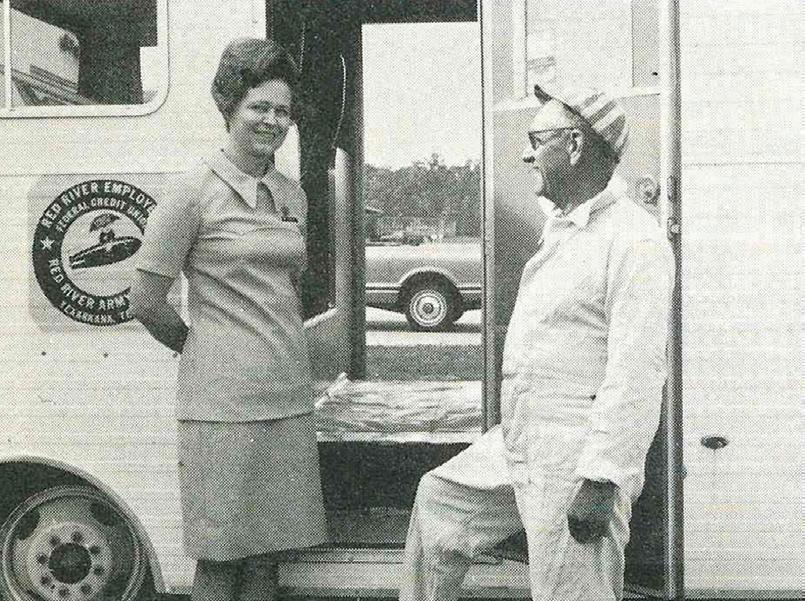
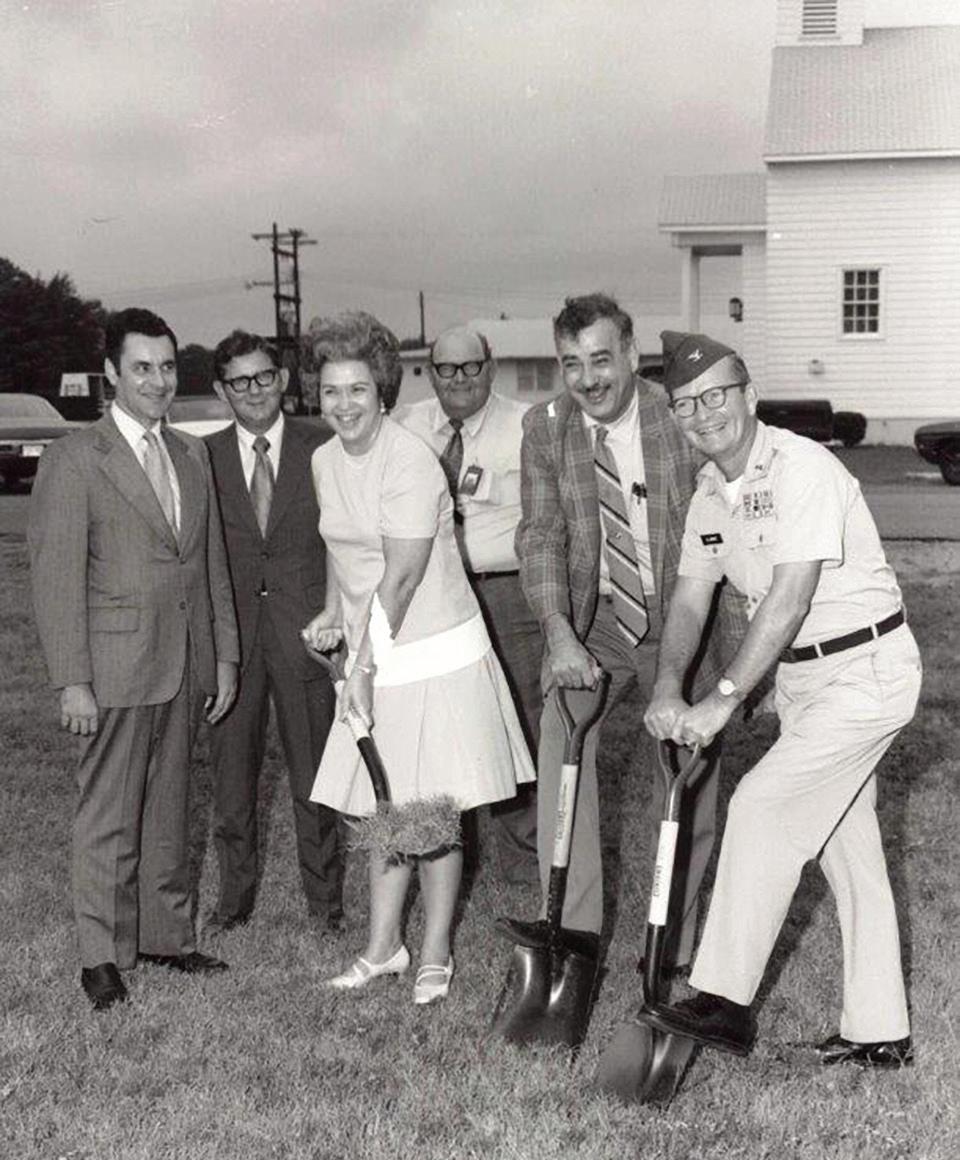
Manual bookkeeping was replaced with machine bookkeeping in late 1955, and computer processing was introduced in 1973. In 1979, the credit union acquired its own in-house computer system, becoming one of the first financial institutions to have their own online computer processing in the early 1980s. In 1973, a full-service office was opened at Red River Army Depot, and RRCU became one of the first three credit unions to offer checking and share drafts in 1975.

By the end of the 1970s, the majority of the membership resided in the Texarkana area, leading to the establishment of the Summerhill Road branch, which now houses many of the credit union’s main operations, including mortgage and business lending.

37 OCTOBER 2023 . fourstatesliving.com
<< A mobile-banking vehicle in 1970.
Groundbreaking of the fullservice RRAD office in 1973.
1980s AND 1990s: ADVANCEMENT
In the 1980s and 1990s, RRCU added RO$EY, an audio response telephone system that allowed members to access their accounts 24/7; with a simple phone call, members could obtain account balances, make loan payments, and transfer money between accounts. By the early 2000s, RO$EY was receiving an average of over 70,000 calls per month. The latest version of this system, now called Rosey, is a digital voice response assistant that assists members after business hours at 903-735-3000.
RRCU’s website was activated in September 1997, initially offering limited services. However, with advancements in technology, RRCU launched a new home banking platform in May 2019.
In 1999, the credit union established a credit union service organization (CUSO) called Red River Member Service Group, LLC, which later became RRCU Financial Services. This CUSO offers a range of non-credit union products to both members and non-members, including guaranteed auto protection (GAP) policies, vehicle service contracts, accidental death and dismemberment insurance, Medicare plans, and group-term life insurance.
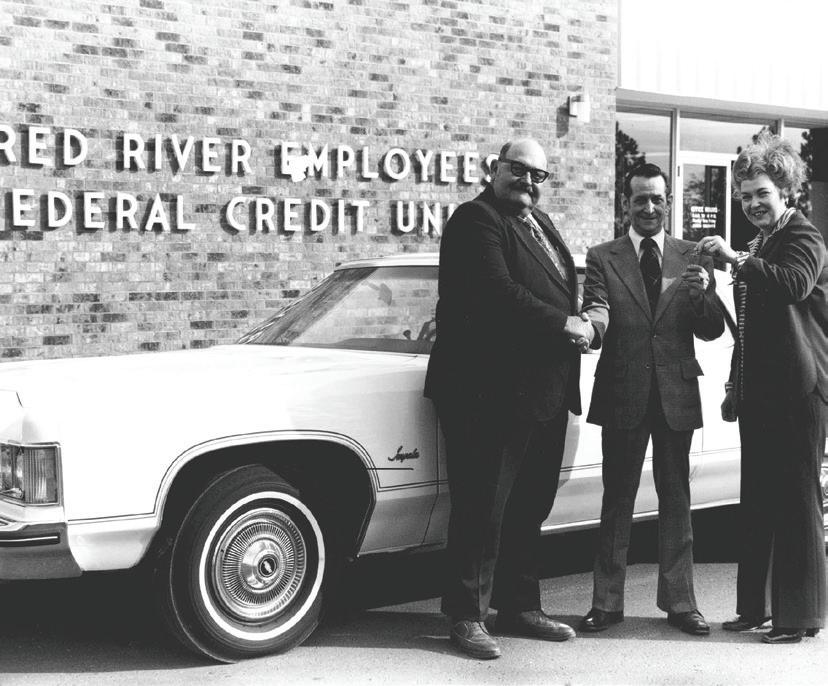


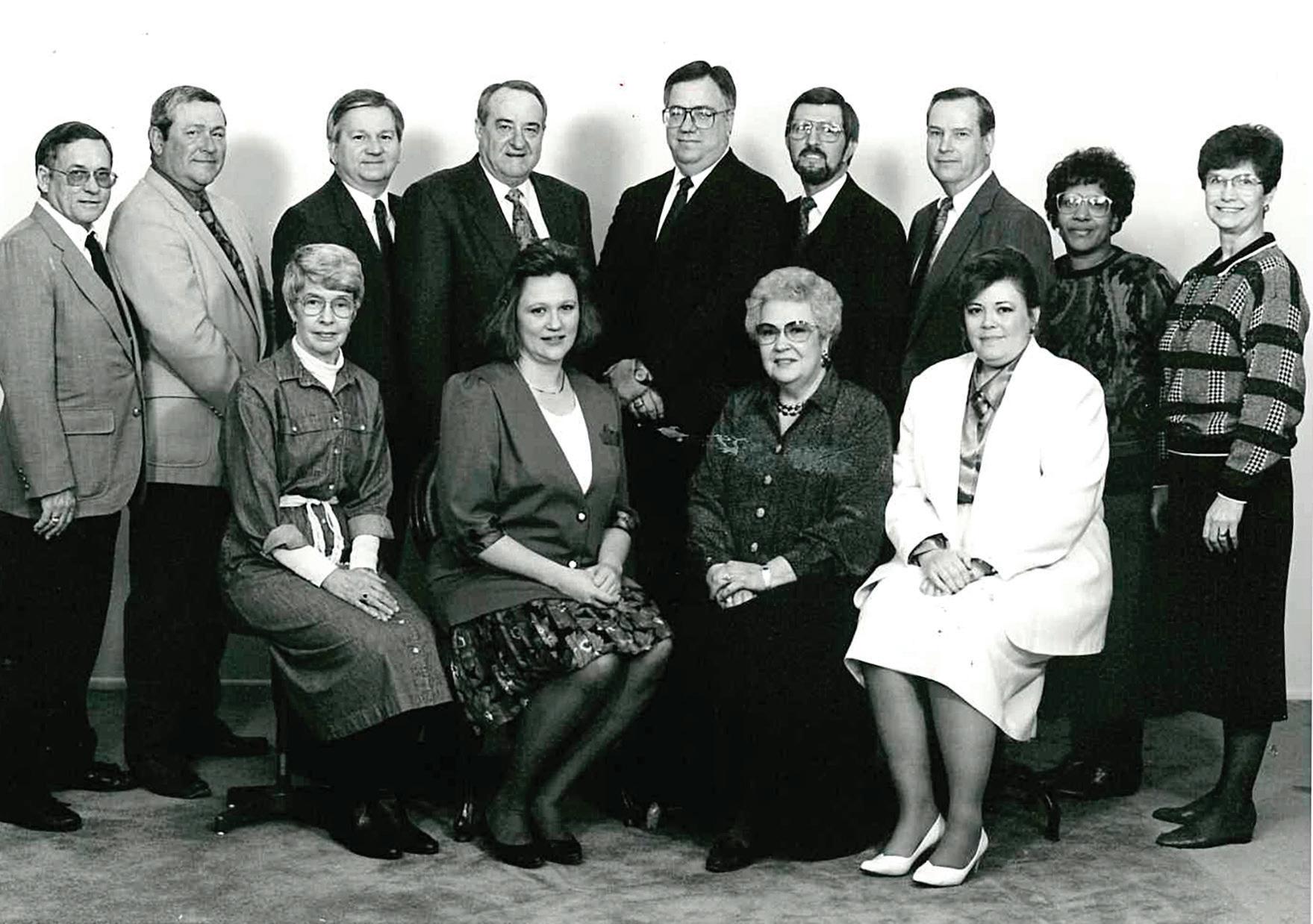
2000s: INCREASING ACCESSIBILITY
In the 2000s, RRCU took steps to increase accessibility for its members. Student branches were opened in local high schools in 2002 and 2003, providing students with the ability to withdraw small amounts of money and establish relationships with financial institutions. Shortly after, financial literacy programs were introduced in local schools, furthering RRCU’s outreach efforts.

In 2006, RRCU introduced Fresh Start Checking, a product designed for members who may not qualify for a traditional checking account due to a ChexSystems report, a past account closure, or an account charge-off. This alternative option allows these members to have access to financial services. To better serve the Hispanic communities in Texarkana, RRCU opened a branch on New Boston Road. This branch is committed to empowering and assisting the Hispanic community, though most branches currently provide bilingual support. In 2017, RRCU joined the Juntos Avanzamos (“Together We Advance”) family and, in recent years, started accepting ITINs for most loan types. In 2009, RRCU launched its first mobile application, providing members with increased access to their finances. The mobile app has been well received and continues to be popular among members.
2010s: NEW OPPORTUNITIES
In the 2010s, RRCU welcomed members from Lamar Federal Credit Union, Shreveport Federal Credit Union, and Northwest Louisiana Federal Credit Union, expanding their financial services into new markets and communities.

PRESENT AND FUTURE
RRCU currently operates 29 locations, including three student branches and five ITM-/ATM-only locations. Additionally, members have access to a call center and a virtual branch for various banking needs such as opening memberships, approving loans, and completing mortgage applications. RRCU’s operations have expanded to five states: Texas, Arkansas, Louisiana, Mississippi, and Oklahoma.
RRCU also offers membership to the American Consumer Council (ACC) to individuals outside their service area at no extra cost. This opportunity extends to most of the United States.
Thanks to our dedication to our members, RRCU has been voted the Best Financial Institution in the Four States Living Magazine for 15 consecutive years.
Currently, RRCU serves nearly 117,000 members and holds over $1.3 billion in assets.
38 OCTOBER 2023 . fourstatesliving.com
The evolution of the RRCU logo from 1943 to present day.
A small group of Red River Federal Ordnance Plant employees formed a financial institution in 1943 under charter 5029. Eighty years later, Red River Credit Union has 29 locations and 117,000 members.


39 OCTOBER 2023 . fourstatesliving.com
THE CLYDESDALES RETURN
The Budweiser Clydesdales have made two thunderous trips to Texarkana. Thanks to Eagle Distributing, they will return in November
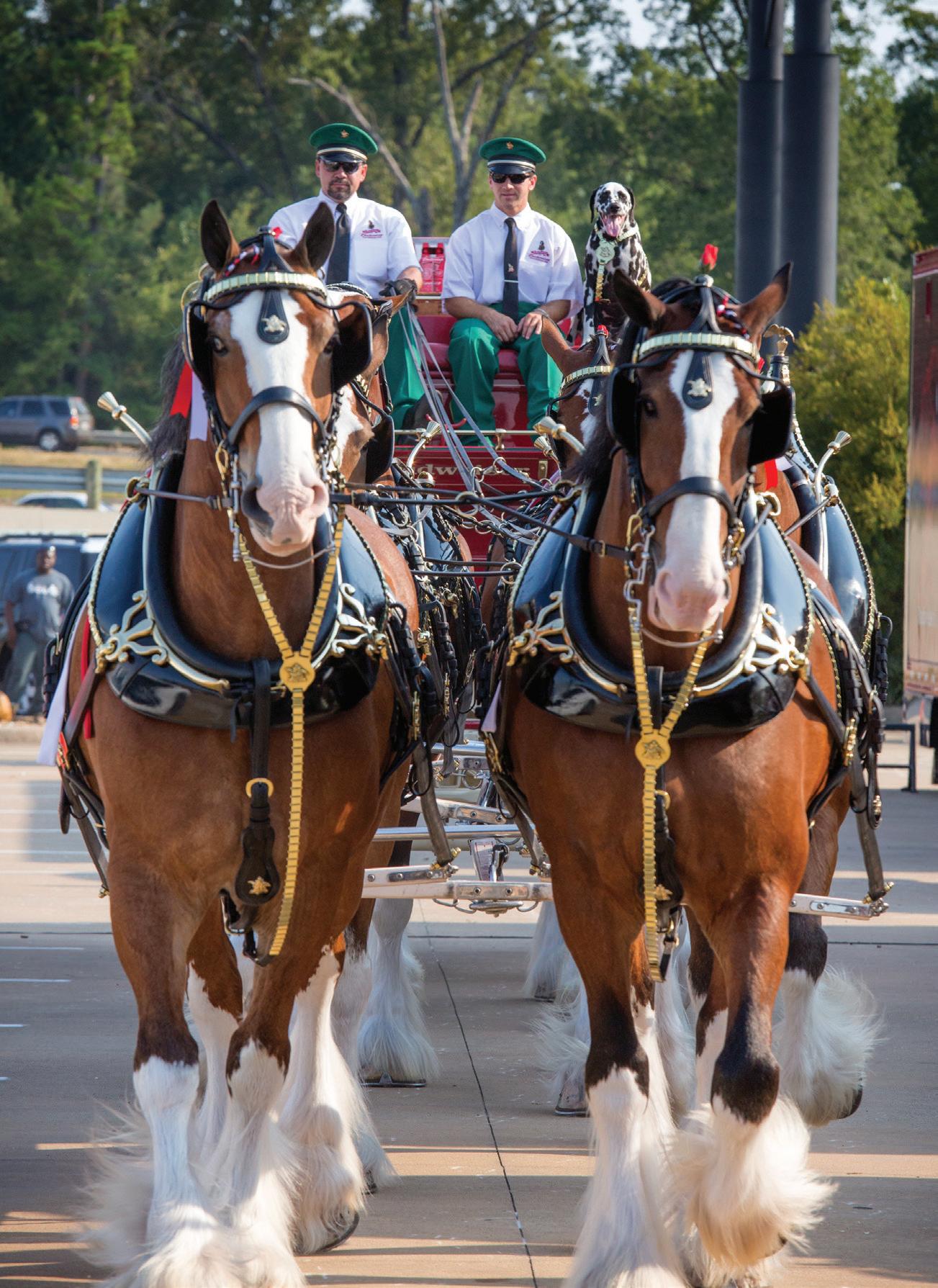
As the area wholesaler of Anheuser-Busch products, Eagle Distributing of Texarkana has been serving up good drinks and good times to the Texarkana area since 1985. Under the direction of president and managing partner Tim O’Neal, Eagle Distributing is more than just a beer wholesaler; they are also a proud Texarkana institution.
“In my 29-year career, I am proud of our work, people, and community,” Tim said. “We are privileged to serve a diverse and loyal customer base with quality products and excellent service. We are committed to responsible and ethical business practices that benefit our community.”
In addition to caring for their customers, employees, and retailers, Eagle Distributing provides support to many local causes and nonprofits, including Harvest Texarkana, United Way, Temple Memorial Pediatric
Center, Alzheimer’s Alliance Tri-State Area, the Texarkana Chamber of Commerce, and Opportunities, Inc.
Beyond Anheuser-Busch brews, Eagle Distributing is also proud to bring the World-Famous Budweiser Clydesdales to Texarkana. The Clydesdales symbolize Anheuser-Busch’s heritage and tradition. They first visited Texarkana in 1952, when they paraded through the streets of downtown Texarkana. They visited again in 2015 to honor Tim and the Eagle Distributing team with the Big Jake Award. The Big Jake Award is a 20-pound statue of a Clydesdale and was awarded to Eagle Distributing for earning the title of Anheuser-Busch Ambassador—the highest achievement level for an Anheuser-Busch wholesaler. Only 16 of 600 nationwide wholesalers have reached this level.
40 OCTOBER 2023 . fourstatesliving.com
This fall, November 1st through 4th, Eagle Distributing will bring the Budweiser Clydesdales to Texarkana for a third time, once again to thunder through downtown. The public will have a chance to see these majestic horses and enjoy a live concert by Priscilla Block on November 3rd. While concertgoers will need a paid ticket to enter the venue, the Clydesdales will be right outside the fence so that anybody can come see them without having to pay for a concert ticket.
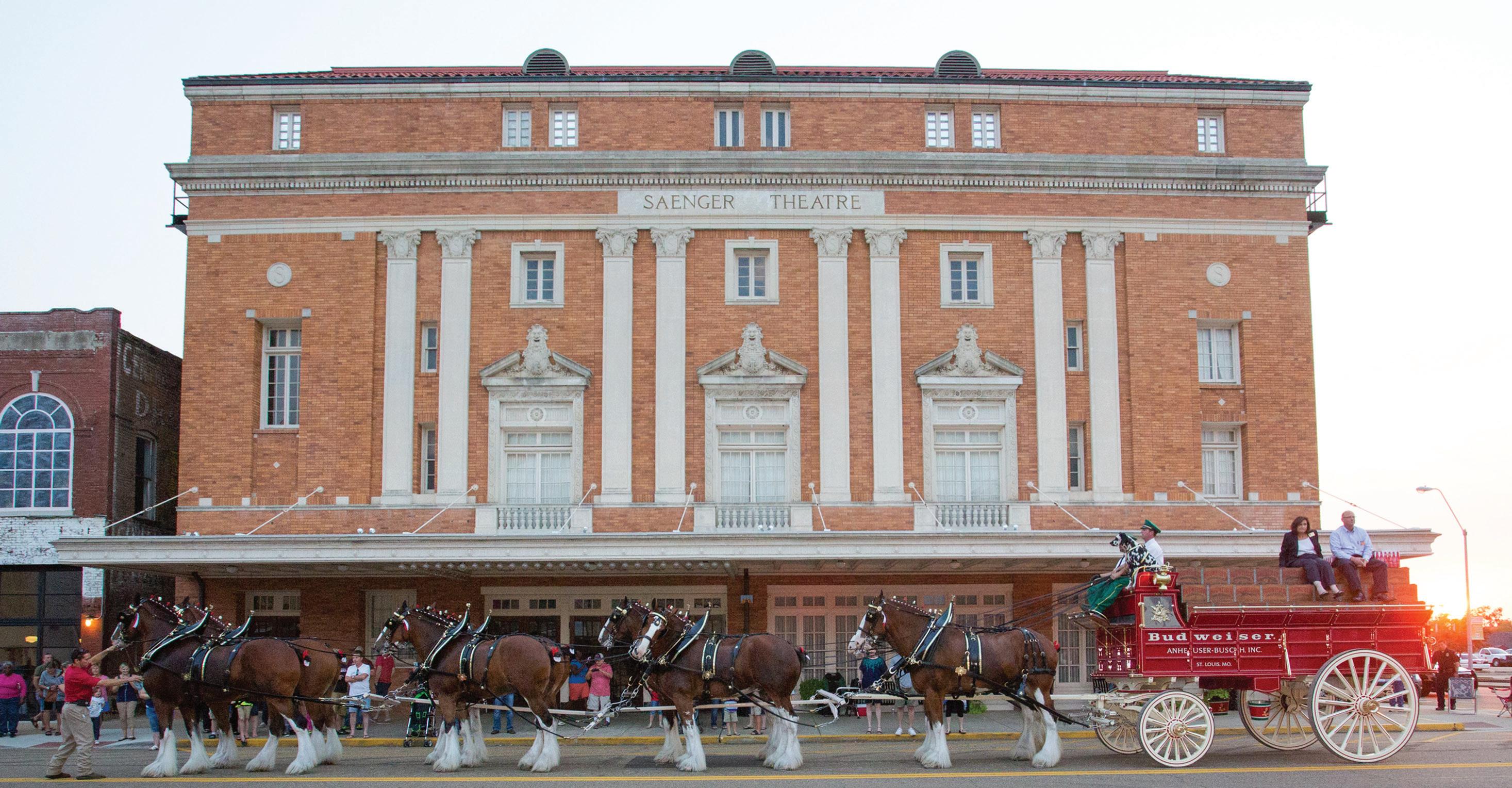
The Clydesdales will be in Texarkana to join Folds of Honor in supporting our military veterans and their families. Folds of Honor is a nonprofit organization that provides educational scholarships to spouses and children of America’s fallen and disabled military servicemembers and first responders. Budweiser is Folds of Honor’s longest-serving partner and is proud to provide these life-changing scholarships.

This year marks the 90th anniversary of the Budweiser Clydesdales. They were formally introduced on April 7, 1933, to celebrate the repeal of Prohibition. August A. Busch Jr. and Adolphus Busch III presented a hitch of six horses to their father to celebrate the day. To their father’s delight, the hitch thundered down Pestalozzi Street carrying the first case of post-Prohibition beer from the Anheuser-Busch brewery in St. Louis, Missouri. Since their first ride in 1933, two more Clydesdales and one Dalmatian dog have been added to the team. Dalmatians, valued for speed, endurance, and dependability, were once known as coach dogs because they ran between the wheels of coaches or carriages and were companions to the horses. Today, the Budweiser Dalmatian perches atop the wagon, proudly seated next to the driver.
 Tim O’Neal riding along with the Clydesdales.
The Dalmatian was added as the preferred coach dog in 1950.
Ruth Penny-Bell, former Texarkana, Arkansas mayor, rode atop the carriage with Texarkana, Texas Mayor Bob Bruggeman during the Clydesdales’ 2015 visit.
Tim O’Neal riding along with the Clydesdales.
The Dalmatian was added as the preferred coach dog in 1950.
Ruth Penny-Bell, former Texarkana, Arkansas mayor, rode atop the carriage with Texarkana, Texas Mayor Bob Bruggeman during the Clydesdales’ 2015 visit.
Clydesdales are an extremely strong breed of horse, capable of pulling a one-ton load at five miles per hour. Clydesdales were first bred for farm work about 300 years ago in the region of Clydesdale, Scotland. In the mid-1800s, Canadians of Scottish descent brought the first Clydesdales to the United States, where the draft horses resumed their existence on farms. Today Clydesdales are predominantly used for breeding and show.
Budweiser Clydesdales are bred and raised at Warm Springs Ranch, a Budweiser-owned farm near St. Louis, Missouri. To qualify as an official Budweiser Clydesdale, a horse must be a gelding at least four years old, stand 72 inches at the shoulder, weigh between 1,800 and 2,300 pounds, and have a bay coat (consisting of a brown body and black mane, black tail, and black lower legs), four white stocking feet, and a white blaze (or face stripe). They must be trained at the Budweiser Clydesdale Training School and have the right temperament to make frequent public appearances. Currently, there are three traveling hitches or teams: the St. Louis hitch, the East Coast hitch, and the West Coast hitch. Each team travels roughly 300 days per year and interacts with millions of guests annually, creating one-of-a-kind experiences and lifelong memories.
Thanks to funding provided by Eagle Distributing, the Budweiser Clydesdales are also the subject of a downtown Texarkana mural, painted by acclaimed Texas artist David Freeman. Located on the west-facing wall of Crossties Event Venue, the stunning piece measures 37 feet tall and 87 feet wide and features four pairs of Clydesdale horses, teamed up and hitched in their parade dress, pulling the Budweiser carriage.

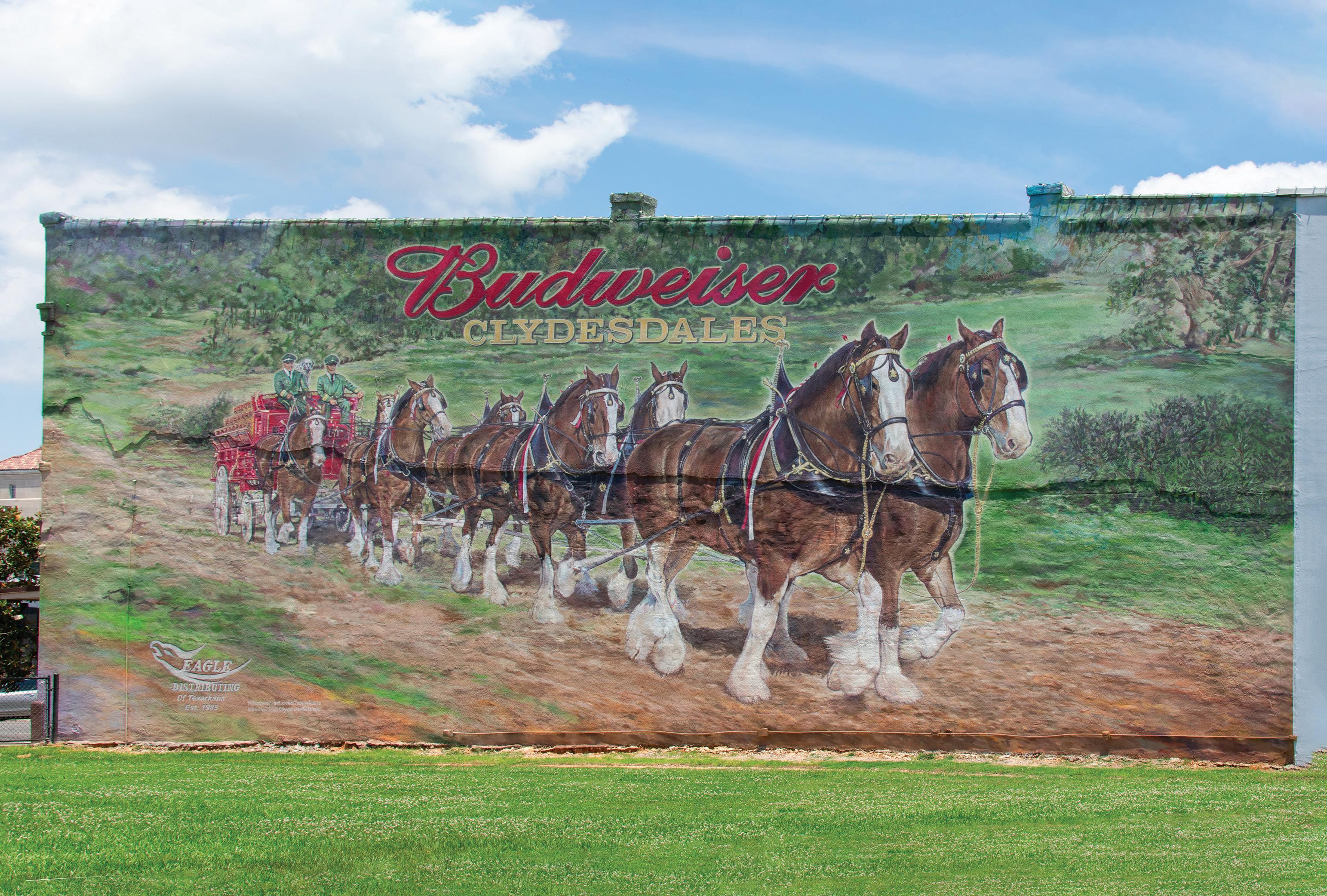 Thanks to funding from Eagle Distributing, the Budweiser Clydesdales mural by David Freeman can be found in downtown Texarkana.
Thanks to funding from Eagle Distributing, the Budweiser Clydesdales mural by David Freeman can be found in downtown Texarkana.
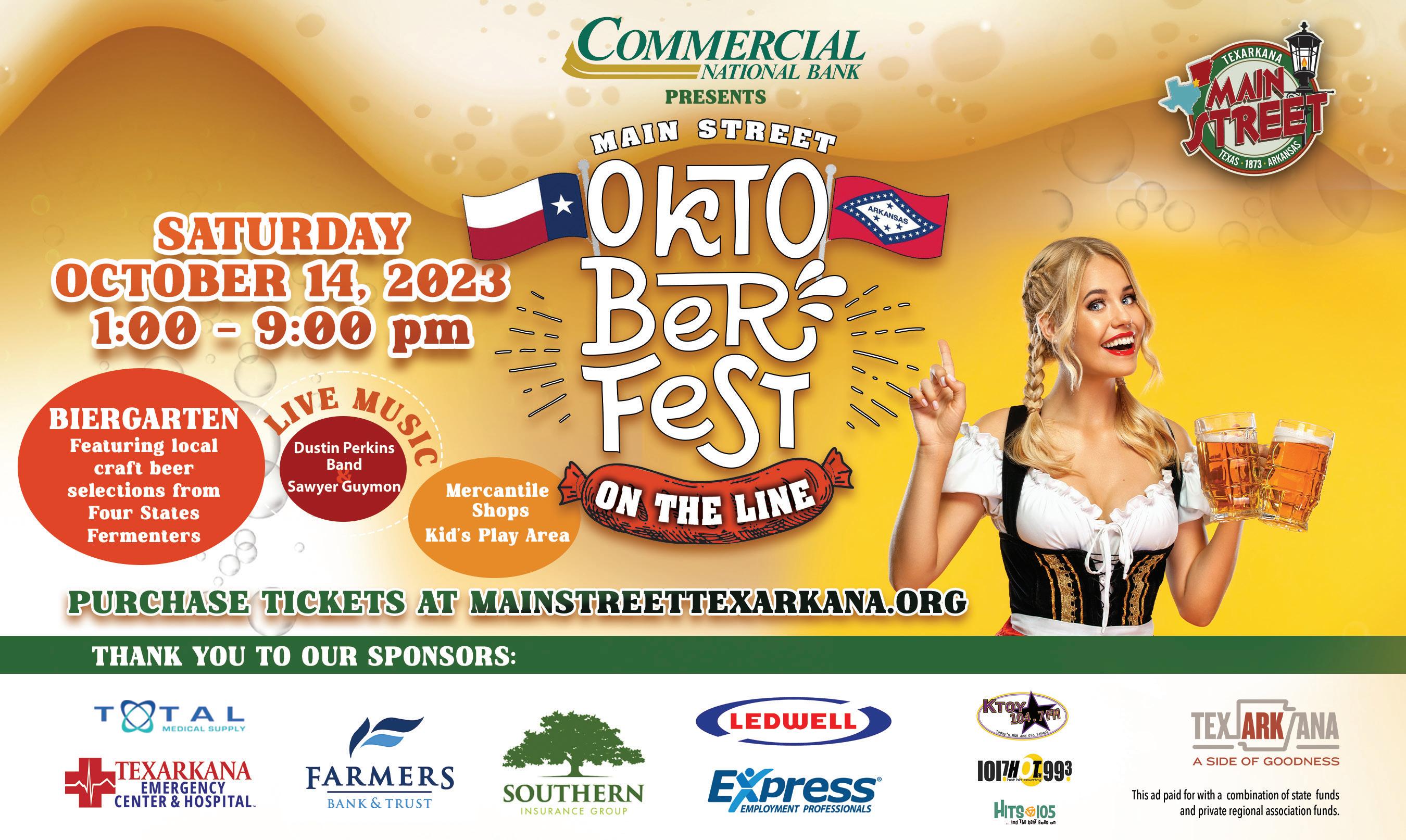

43 OCTOBER 2023 . fourstatesliving.com
BRANCHING OUT
Started by and for teachers over 70 years ago, TEXAR has expanded to serve people of all professions.

TEXAR Federal Credit Union was founded around 1951 as Bowie County Teachers Credit Union. Organized by and for teachers and other school employees in the county, the credit union served as a valuable institution for educators. The name evolved over the years to reflect the growing population of members: in 1964, the credit union was renamed Bowie-Cass Teachers Credit Union, and in 1996, it took on the more general moniker Teachers Federal Credit Union.

Terry Jones, a former employee and current board member, joined the staff in 1977. “It was so rewarding to help people who in many cases could not get help anywhere else,” he said. “It’s been a pleasure to be a part of an institution that is financially stable and maintains the highest integrity while helping others.”
In 2001, the organization became TEXAR Federal Credit Union. As a not-for-profit financial cooperative, TEXAR exists to serve its members and thus strives to provide both competitive loan rates and the highest possible dividends.

TEXAR members are served at branches throughout Bowie, Miller, Lamar, Little River, Cass, and Red River Counties. Mortgage and commercial loans alike are completed locally, either in-person or by phone or internet.

“It was so rewarding to help people who in many cases could not get help anywhere else.”
—Terry Jones
In 2015, TEXAR introduced the first interactive teller machines (ITMs) to the area. An interactive teller machine is essentially “a branch in a box.” They combine the accessibility of an ATM with the human support found at an in-person branch. Most ITMs utilize touch-screen technology and video calls; at TEXAR ITMs, members can communicate “face to face” with a teller, located off-site. All drive-through and standalone TEXAR locations now feature ITMs.
TEXAR was also the first local financial institution to offer mobile banking to its members. They are currently exploring options to incorporate artificial intelligence technology into its system in order to serve members even more effectively and efficiently.
While the credit union’s mission is “to serve the financial needs of our members,” TEXAR’s company culture is about more than loans and savings. The institution is a major community donor, sponsoring nonprofit events and making charitable donations regularly. They encourage local volunteerism, and employees can often be seen serving at nonprofit events.

For 70 years, TEXAR has been a reliable, fair, innovative institution, benefiting first our area’s educators before expanding to include people of all trades in its membership ranks. Their branches have grown from their solid trunk, established so many years ago by Texarkana teachers.


 The original charter for the Bowie County Teachers Credit Union, along with a ledger record from their first month of business in 1951.
The original charter for the Bowie County Teachers Credit Union, along with a ledger record from their first month of business in 1951.
<< <<
Current TEXAR Board of Directors.
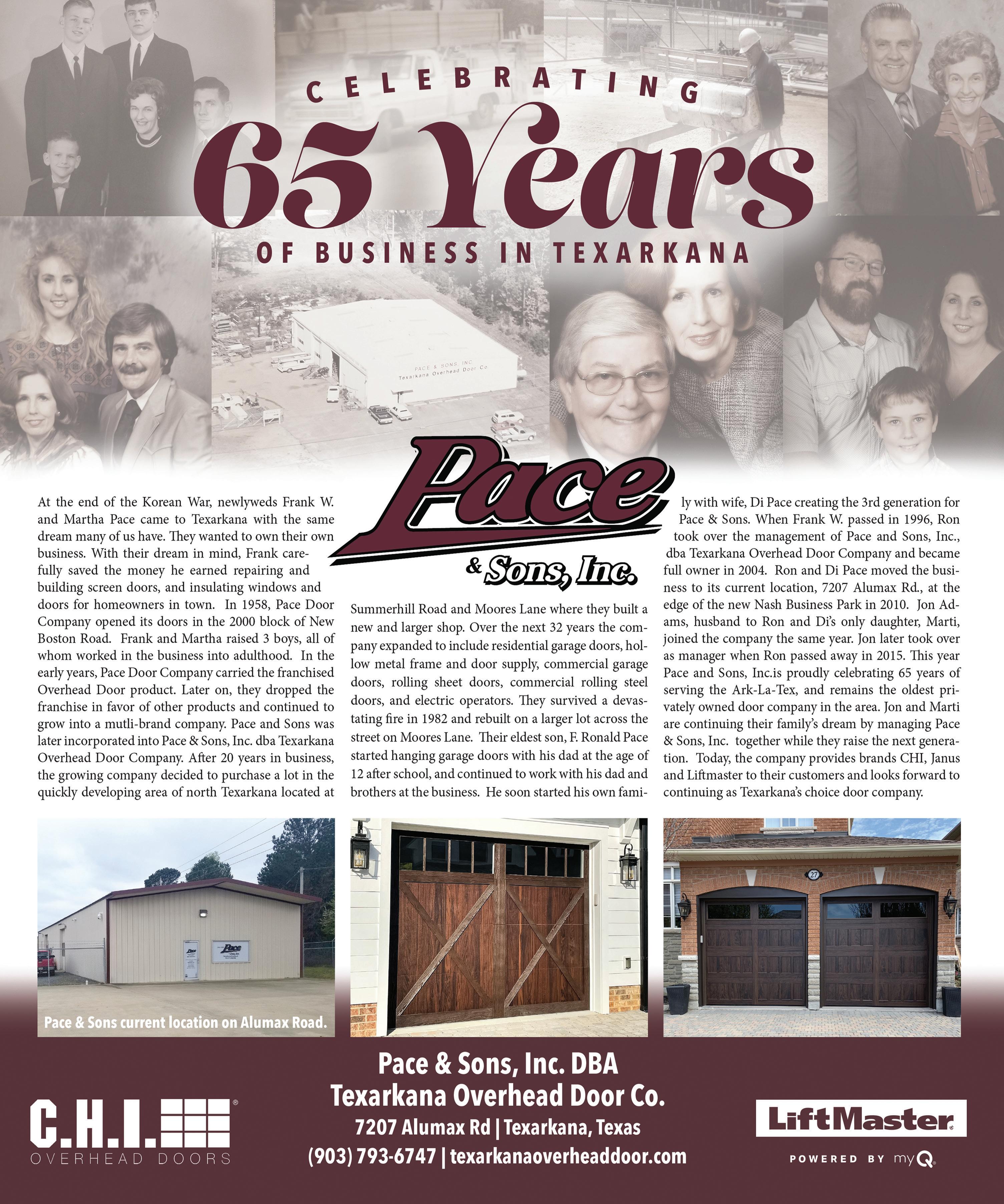
THE CNB WAY
Commercial National Bank takes great pride in how they’ve treated their customers for nearly 60 years.

Commercial National Bank of Texarkana is anticipating an upcoming milestone: in 2024, they will celebrate 60 years of serving their customers and community as “Texarkana’s community bank.”
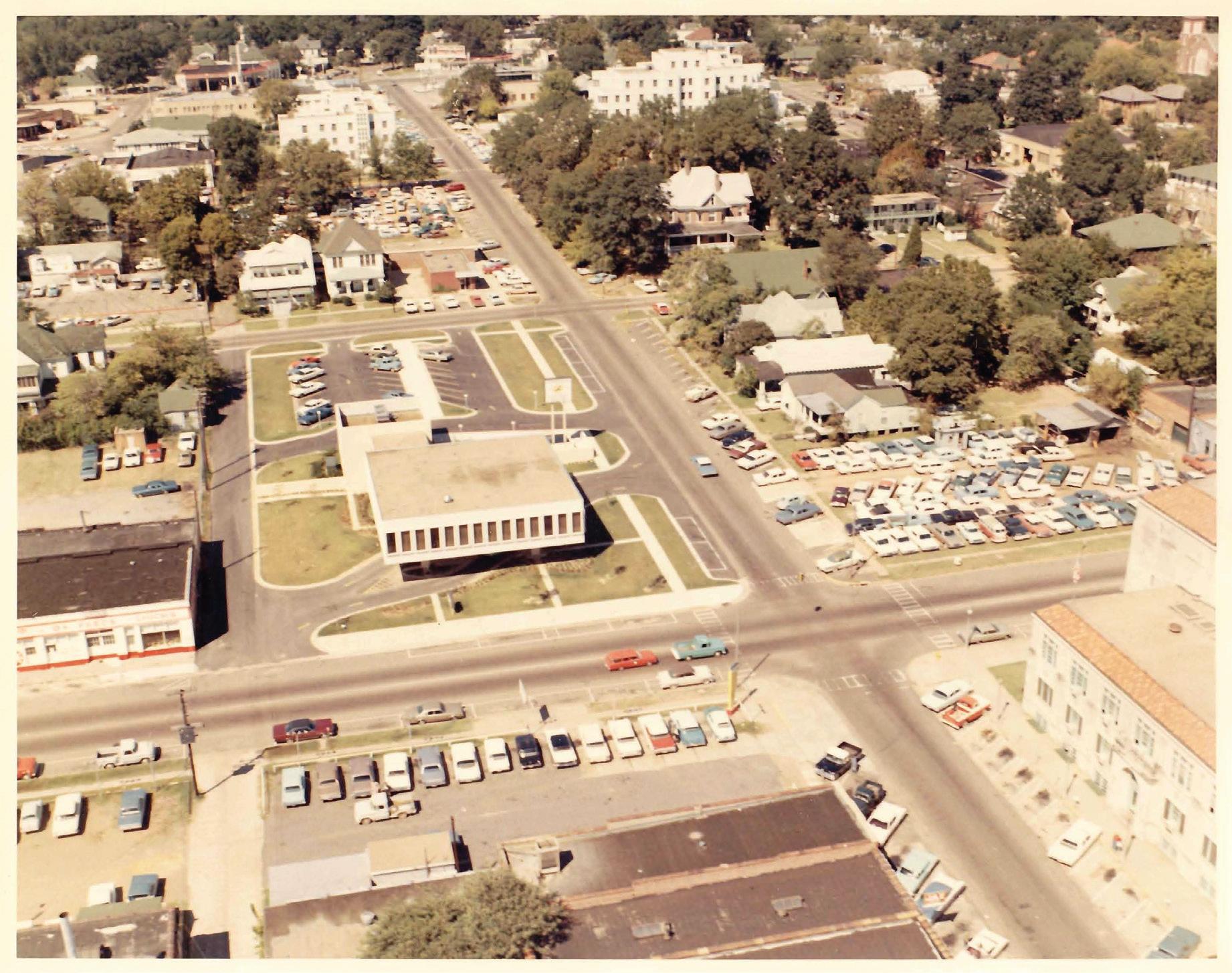
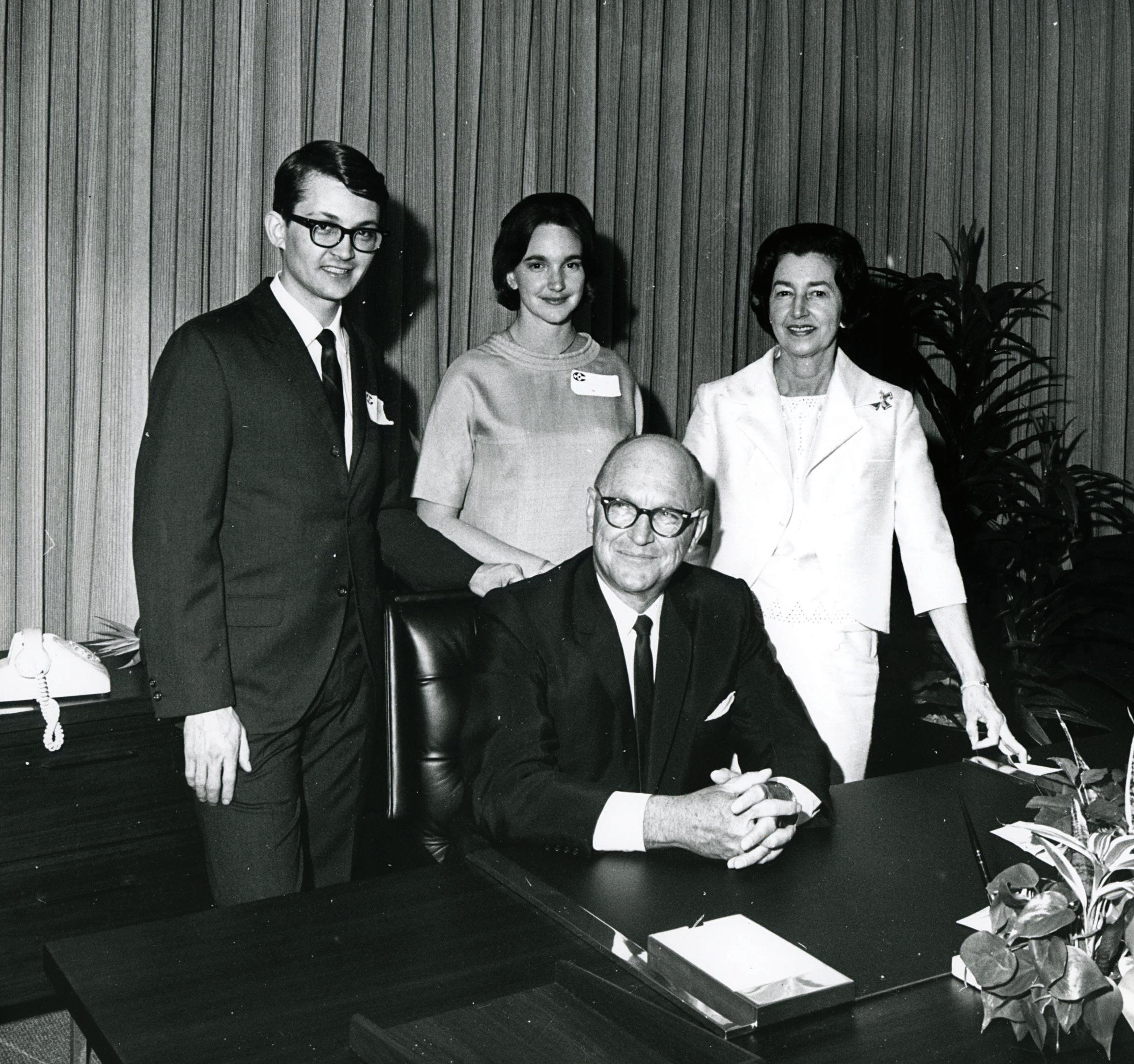
Commercial National Bank of Texarkana (CNB), founded on the premise of being “the people’s bank,” began with the first meeting of shareholders, held in the City Hall of Texarkana, Arkansas, on January 17th, 1964. George W. Peck Sr., the founder, owned a successful building supply business— first in Arkadelphia, Arkansas, and then in Hope, Arkansas—during World War II. At the time, there were only two banks in Texarkana, making it the ideal location for a new financial institution. Plus, Peck had a personal connection to Texarkana: his grandparents lived and were buried here. Major John B. Burton and his wife, now buried in State Line Cemetery, once lived on the land currently home to the Miller County Jail.
On January 31st, 1964, the comptroller of the currency issued a charter to the bank, and on February 5th, the bank opened for business. The bank’s primary mission was to serve the banking and economic needs of Miller and Bowie
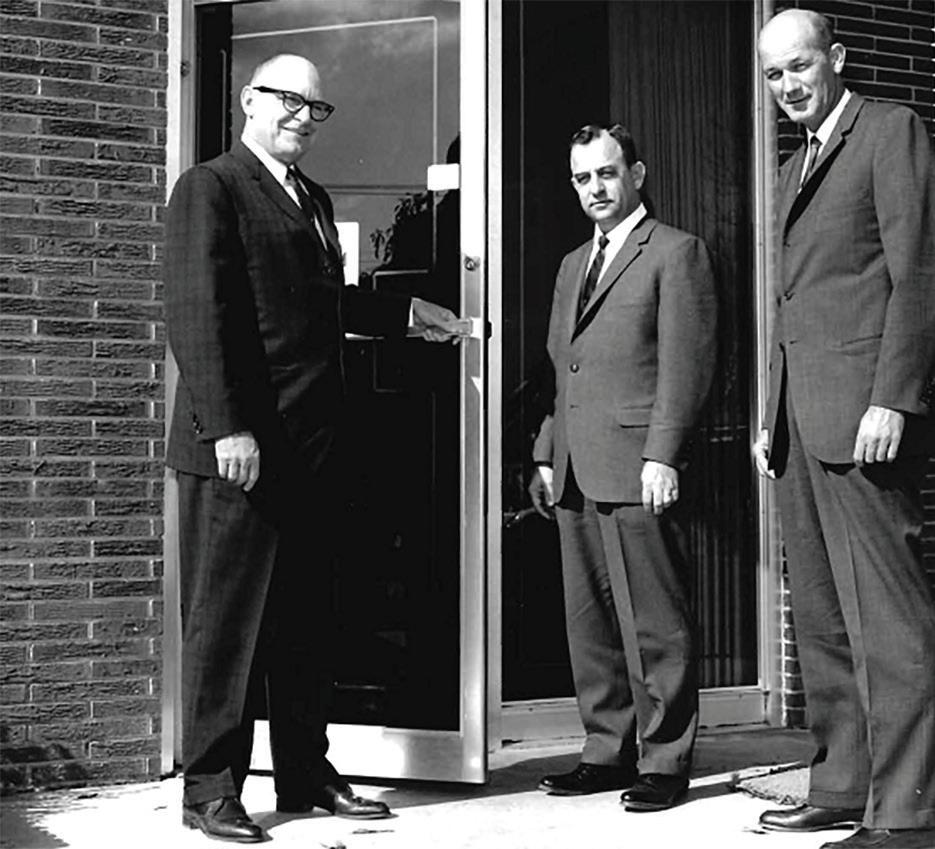
49 OCTOBER 2023 . fourstatesliving.com
George W. Peck, Sr. (sitting) started Commercial National Bank in 1964. Standing behind him is son, George, Jr.; daughter, Julia; and wife, Mrs. George Peck.
Counties. This continues to be the driving force of the bank to this day. CNB is the oldest and only locally-owned bank in the Texarkana.
The first board of directors consisted of Chairman George W. Peck Sr., Vincent Foster, P. D. Burton, Boyce Lanier Jr., John Massey, Dr. Walter Barnes, Lewie P. Henry, Bun Hutchinson, Frank King Jr., Robert M. Lower, and Eric Wade. In January 1965, George W. Peck Sr. was elected president of the bank, a role he filled for 12 years. He was succeeded by Ray Starkey, who was followed by Dennis Huffman, who retired on March 31st, 2018. Robert Sanderson, a life long Texarkana banker is now the bank president.
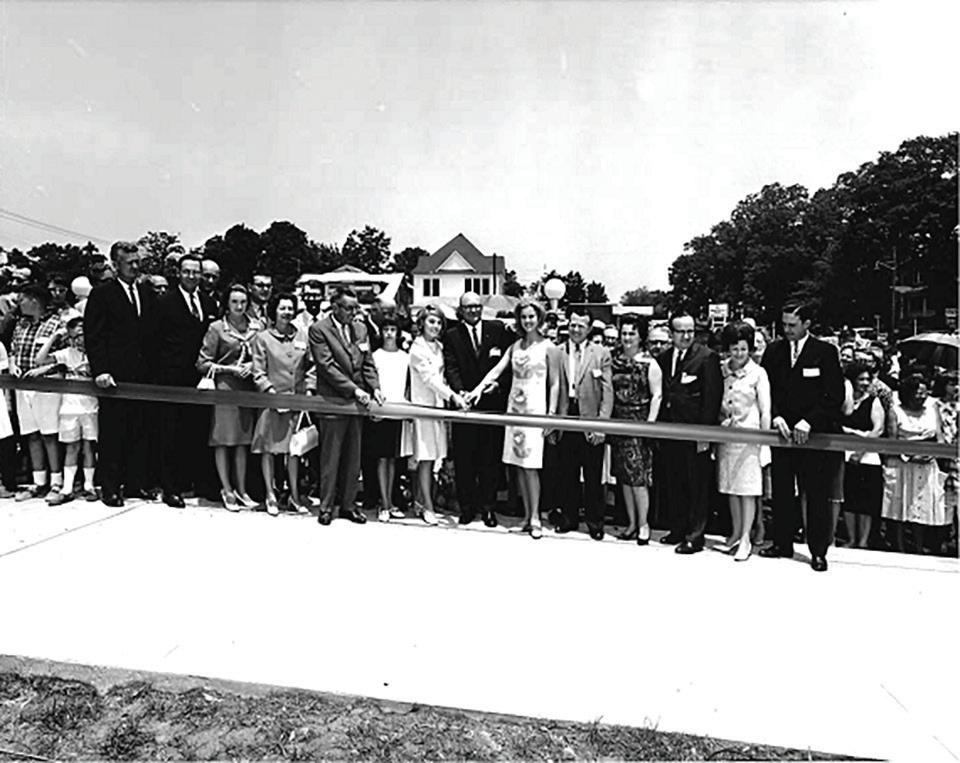

CNB began its operations in a leased, red-brick building on the corner of 4th and Walnut, directly across from the present building. In June 1966, the construction of a permanent building was completed at 224 East 4th Street. In November 1982, an addition was constructed, which more than doubled



50 OCTOBER 2023 . fourstatesliving.com
George Peck, Jr., George Peck, Sr., and Ray Starkey with the Commercial National Bank employees in 1966.
the building’s size and was completed for occupancy in October 1983.
The first branch opened in November 1968 on North State Line Avenue. Four additional branches would follow in the following years, all operating with the same core corporate values: trust, respect, listening, being responsive, and striving for relentless improvement.
“It’s how we treat each other, and it’s how we treat our customers. It’s who we are,” said a bank representative. “It’s the CNB way.”
Most recently, in January 2019, CNB purchased an existing bank building located at 4601 West 7th Street. That February, the OCC granted approval to relocate the State Line branch to the new location on 7th Street. On Friday, May 17th, 2019, the State Line branch closed its doors for the final time. The following Monday, the new location opened. This move was a critical step, as it made CNB services even more accessible to their customers who live and work throughout all of the neighborhoods of Texarkana.
CNB has continued to acquired land throughout the years and plans to continue growing their banking footprint.

George Peck’s daughter, Julia Peck Mobley, served as CEO and chairman of the board from 1984 to 2018. Her youngest son, Philip K. Mobley, was named CEO and chairman of the board when she stepped down, becoming a thirdgeneration owner and operator. Philip earned his bachelor’s degree from the University of Arkansas and his master’s degree in finance from Tulane University. In his previous position, Philip served as senior vice president. Prior to joining the family business, he worked for years with the Bank Advisory Group in Austin, Texas, as a bank consultant, assisting with bank acquisitions while counseling banks across the United States on operational and strategic matters.
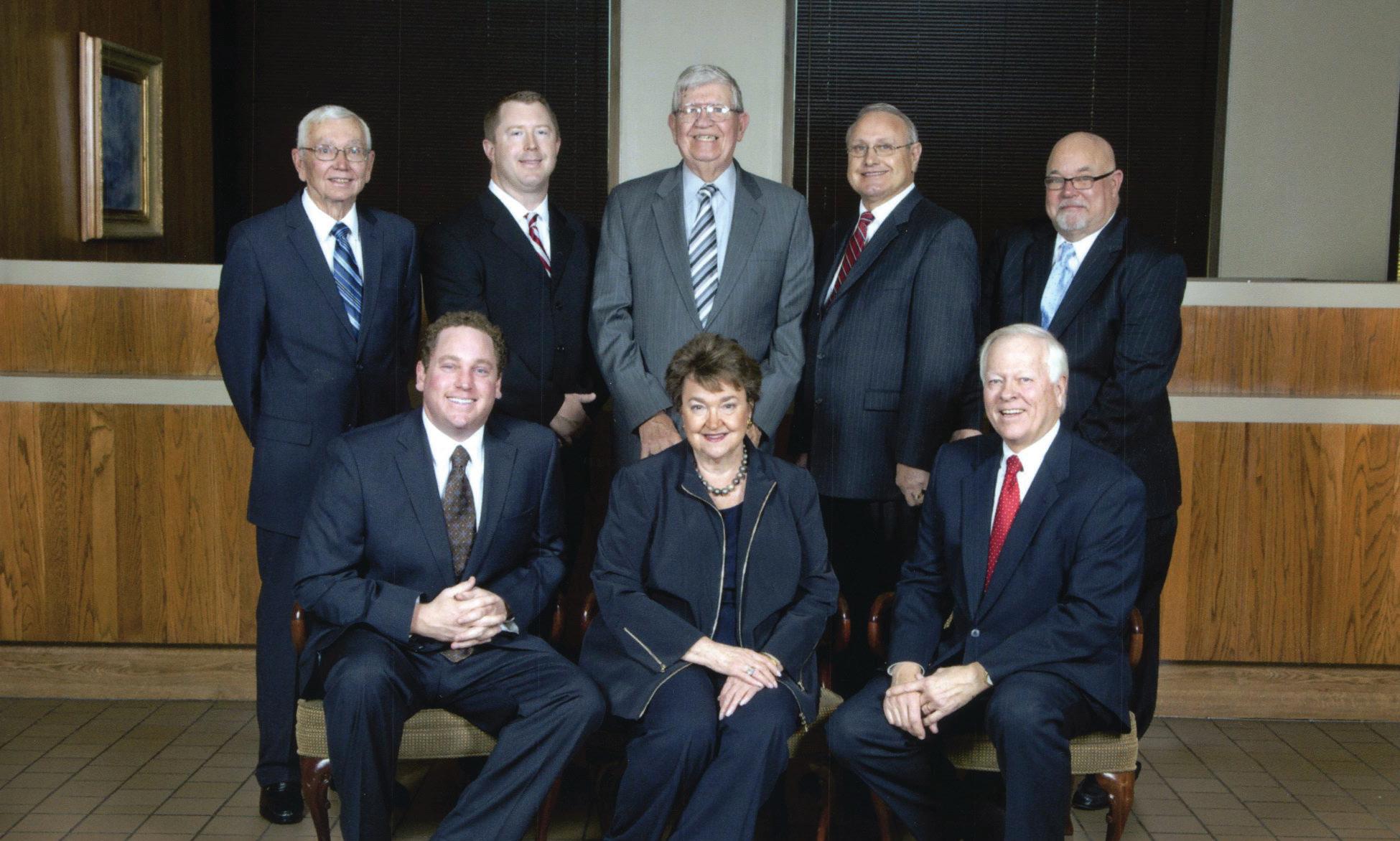
CNB plans to continue to grow with Texarkana for another 60 years.
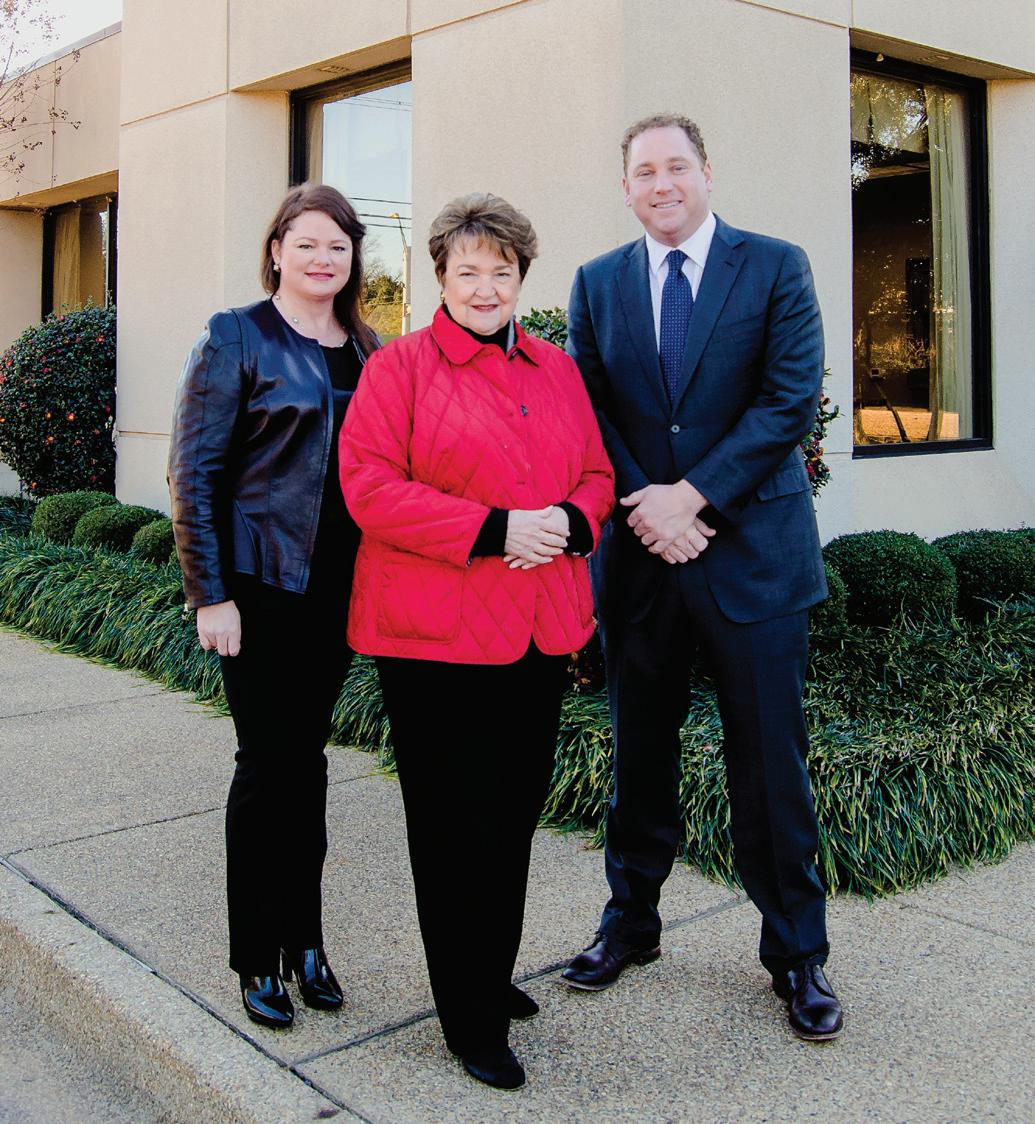

51 OCTOBER 2023 . fourstatesliving.com
Helen Mobley, Julia Peck Mobley, and Philip Mobley.
Philip Mobley (sitting), Julia Mobley (chairman) and Dennis Huffman; (standing) Ray Starkey, Joe Dowd, David Orr, Gary Treadway and Richard Lawrence.


SOARING EAGLES
In June 1970, East Texas State University President D. Whitney Halladay announced plans to establish an upper-division campus of ETSU in Texarkana after a state education board determined that graduates of the state’s two-year colleges were in need of more opportunities to continue their education without traveling long distances to do so. Shortly after the 1970 plans were announced, $450,000 was approved in an appropriations bill to fund the first two years of development for the ETSU Texarkana Center (ETSU-T).
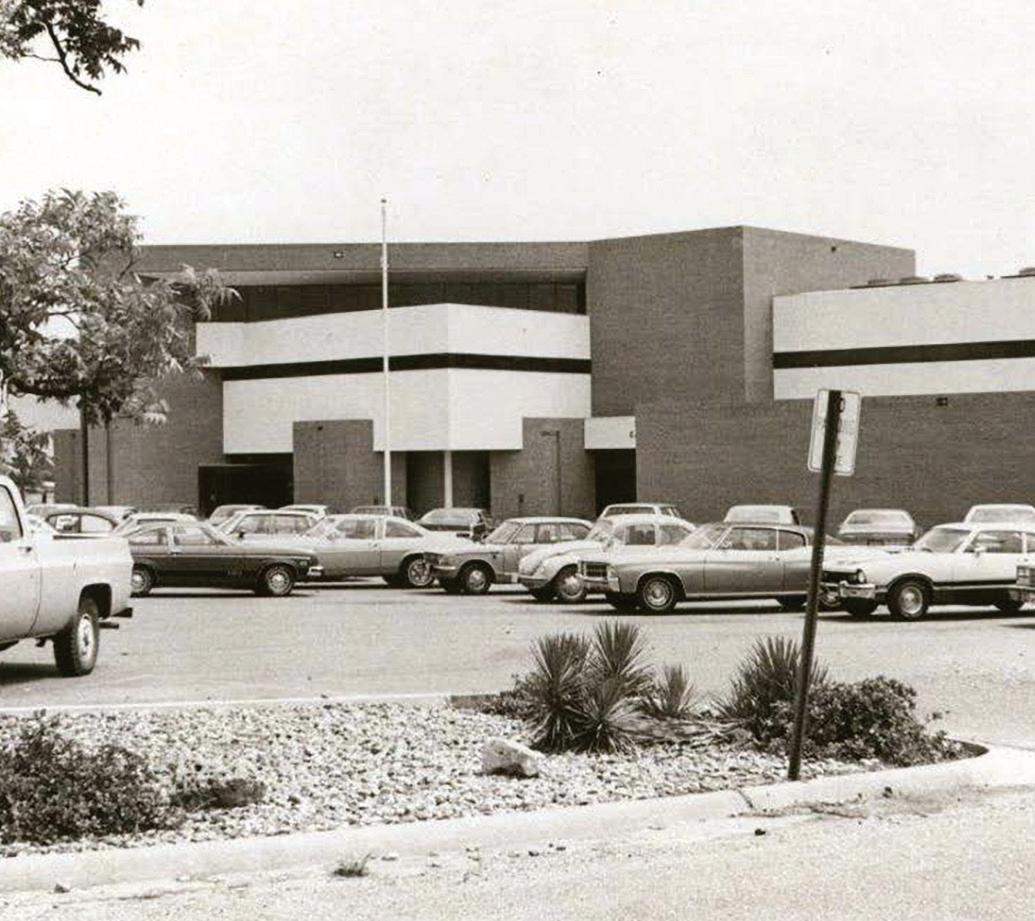
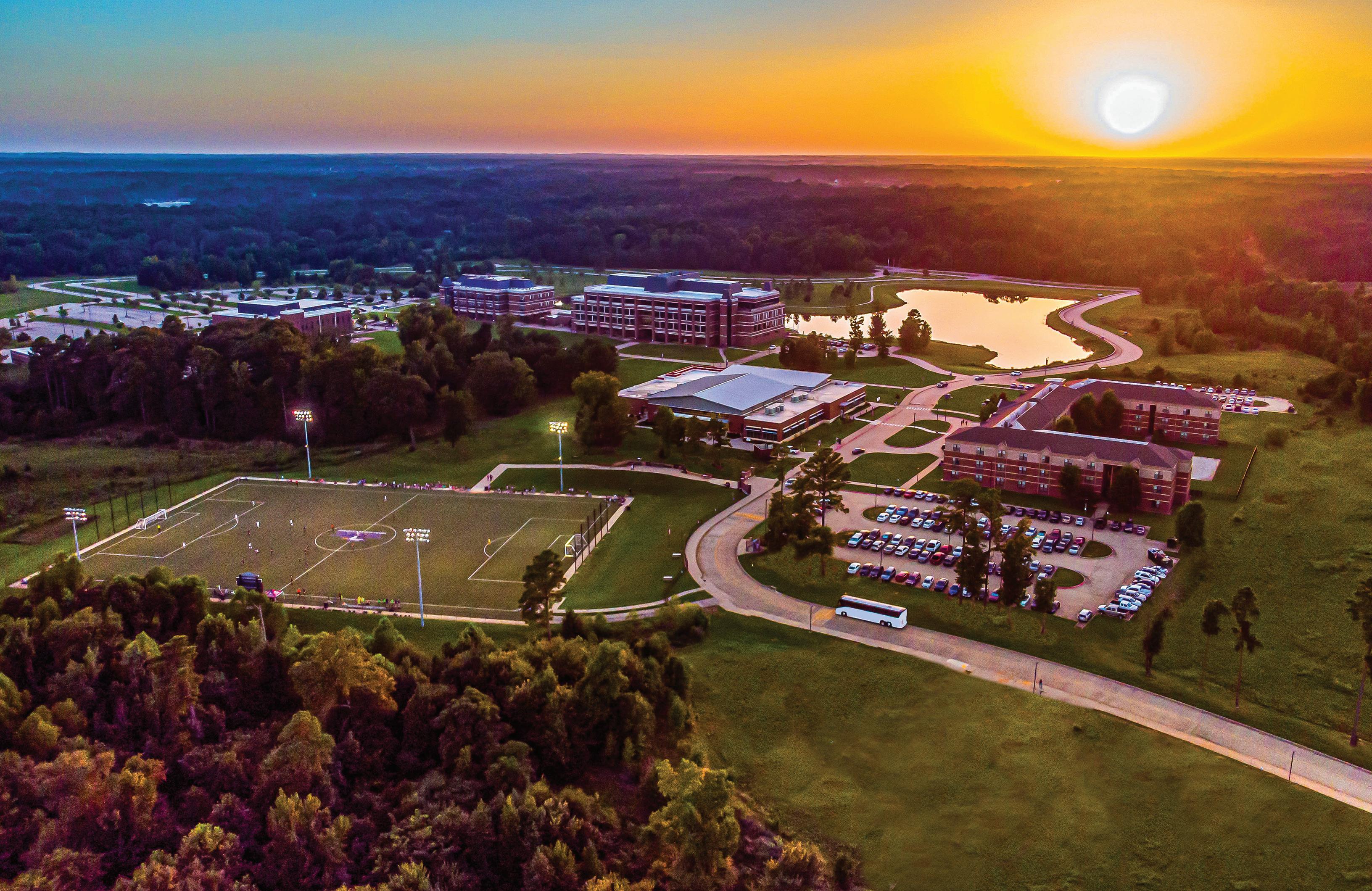
The next order of business was to find a president for this division. Dr. John Moss, who was then an assistant dean in the College of Education at ETSU, was selected for this position in 1971. Moss had his work cut out for him. Moss managed to hire 12 fulltime faculty members. The first enrollment numbers in the summer of 1972 accounted for 315 total students. Despite the challenges, Moss and the staff grew from there and worked diligently with the resources available to them to keep the momentum going. Moss would remain the president of the university until 1994.
In 1994, Texas A&M University System Chancellor Barry Thompson and East Texas State University Chief Executive Officer Jerry Morris began discussing the possibility of a merger of ETSU into the Texas A&M
54 OCTOBER 2023 . fourstatesliving.com
From a challenging start to a thriving campus, A&M–Texarkana’s 57-year history is a strong foundation for future growth.
photos courtesy of JOHN BUNCH, TEXAS A&M UNIVERSITY–TEXARKANA.
Texas A&M University–Texarkana, then East Texas State University–Texarkana, began in just one building, sharing a campus with Texarkana College.
University System. ETSU-T President Stephen Hensley (1994–2008) later joined in on these talks and made the merger a reality. In February 1995, the ETSU Regents approved the merger with an 8–0 vote and one abstention. Barry Thompson said in past interviews that this move made the A&M system visible in northeast Texas as in other regions. The move became official on September 14, 1996. Hensley said this was perhaps his greatest accomplishment as president of what, at that time, had just become Texas A&M University–Texarkana.
Hensley was not only a part of this momentous move to the A&M System, but he was also an essential piece in the expansion of A&M–Texarkana into a four-year institution with its own campus. After becoming A&M–Texarkana, Hensley and the university’s next goal was to move toward downward expansion (adding freshman and sophomore curricula). In 2003, the Texas Legislature authorized A&M–Texarkana to continue with the plans of downward expansion. In 2004, the university acquired 300 acres of land from the City of Texarkana and 75 acres from the Truman and Anita Arnold Foundation to construct a new campus near Bringle Lake. Construction began on the new campus in 2006, the University Center welcomed its first freshman and sophomore students in 2010, and the university’s first residence hall opened in 2011.
Dr. C. B. “Bix” Rathburn was the third president of A&M–Texarkana (2008–2012) and led the institution during the university’s transition to the Bringle Lake campus. Rathburn described the process of downward expansion, relocating an entire university, and opening the university’s first residence hall as daunting but also one of the most rewarding experiences of his life.
Campus growth and expansion continued under the leadership of the university’s fourth president, Dr. Emily Cutrer, who served the university from 2013 until her retirement in the summer of 2023. Two new buildings were constructed on campus during her tenure: the Lois & Cary Patterson Student Center and the Building for Academic and Student Services. Several highly sought-after degree programs were added during her administration as well, including electrical and mechanical engineering, a doctoral program in education leadership, and a mental health nurse practitioner program.
In addition to the academic growth, Dr. Cutrer oversaw the development of the university’s intercollegiate athletic programs. In 2014, the Eagle athletic department began with men’s and women’s tennis and women’s soccer. Today the university competes in the NAIA’s Red River Athletic Conference and fields teams in 11 sports: men’s and women’s tennis, soccer, basketball, and cross county; as well as baseball, softball, and women’s volleyball.
Upon the retirement of President Cutrer, the Texas A&M University System Board of Regents appointed Dr. Ross Alexander to the position, making him the fifth president in the university’s 50-year history. Today, the university continues to grow both academically and physically. There are a number of upcoming degree programs, including the launch of the university’s Doctor of Physical Therapy degree, and a new $45 million academic building to house the university’s growing business, engineering, and technology programs.
Earlier this year, the 88th Texas Legislature approved $4.9 million in funding for Phase 3 of A&M-Texarkana’s Better East Texas (BET) Initiative. Phase 3 brings new academic degrees and outreach programs to the university. The East Texas STEM Center will work closely with area schools to prepare students for STEM-based
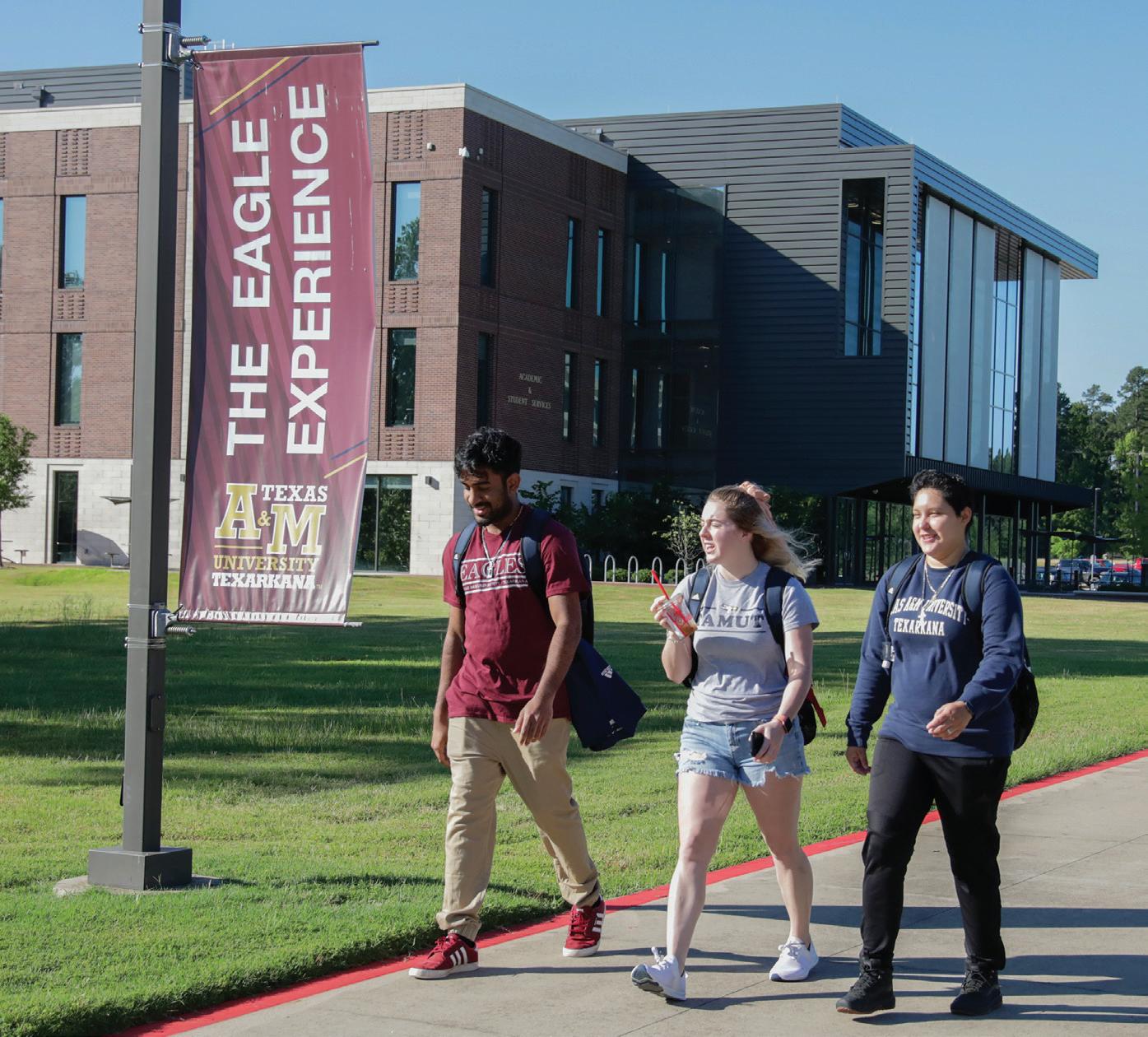
majors. Additionally, the university will partner with Texarkana College and Regional Economic Development, Inc. (REGI) to incubate new businesses and entrepreneurial activity in the region. The new academic programs added through BET Phase 3 include the Doctorate of Nursing Practice, Master of Healthcare Administration, Bachelor of Science in civil engineering, and Master of Science in engineering management degrees.
Dr. Alexander expects the university to continue to grow and expand in all facets.
“We expect A&M–Texarkana to be this region’s institution of choice for all academic opportunities,” he said. “Those who have led, taught, and worked at this university over the decades have built an amazing foundation of academic success and community partnerships. I’m excited to lead this next chapter in the university’s history. I believe we really are just getting started. Soar Eagles!”
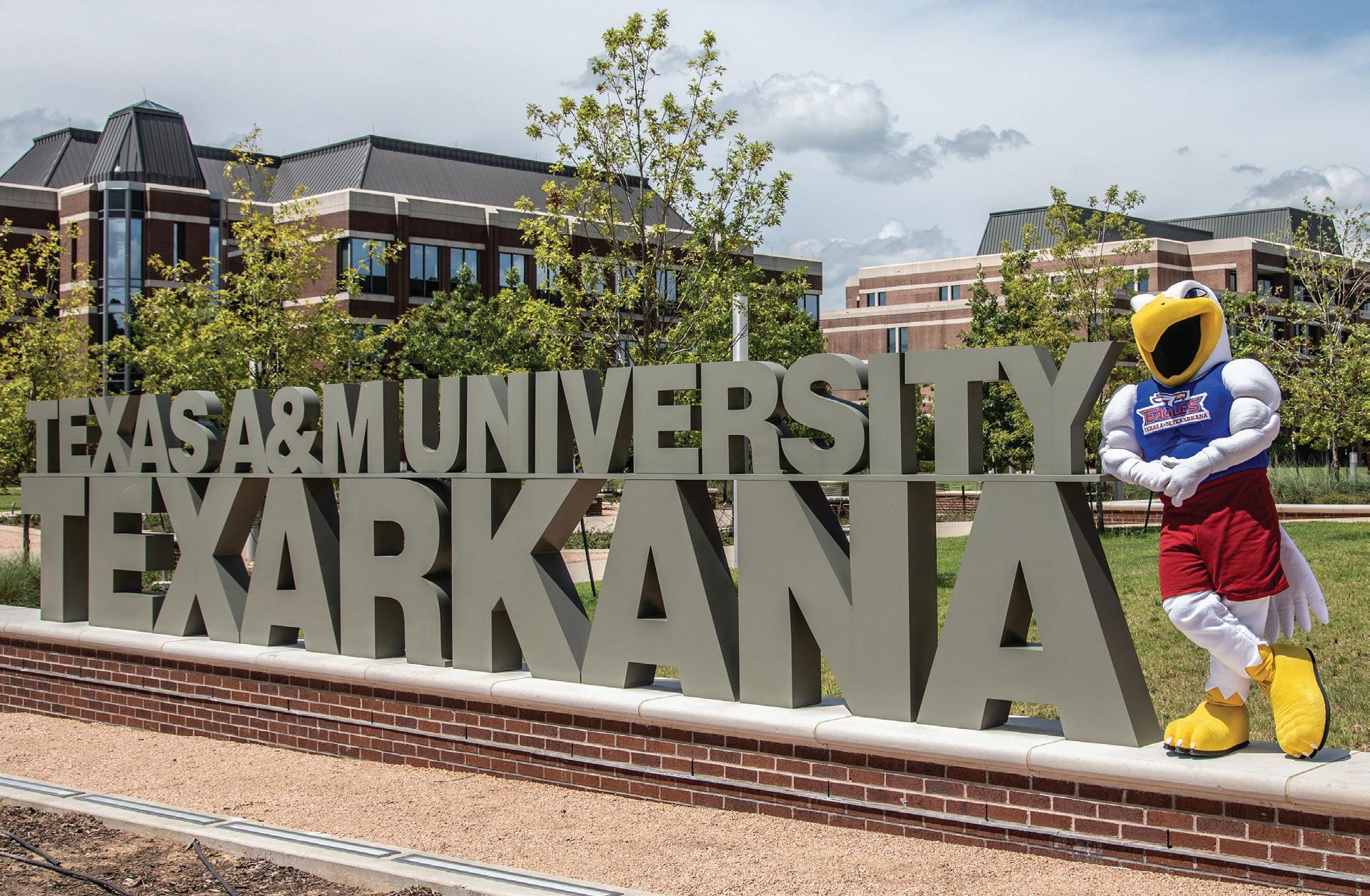 Over 2,100 students are currently enrolled at TAMU-T.
Over 2,100 students are currently enrolled at TAMU-T.
“I’m excited to lead this next chapter in the university’s history.”
—Dr.
Ross Alexander
SCENE ABOUT TOWN
THE FRIENDS FOR A CAUSE FOUNDATION HELD ITS ANNUAL KICKBALL TOURNAMENT AT ERMER DANSBY PONDEXTER SPORTSPLEX ON SEPTEMBER 16TH
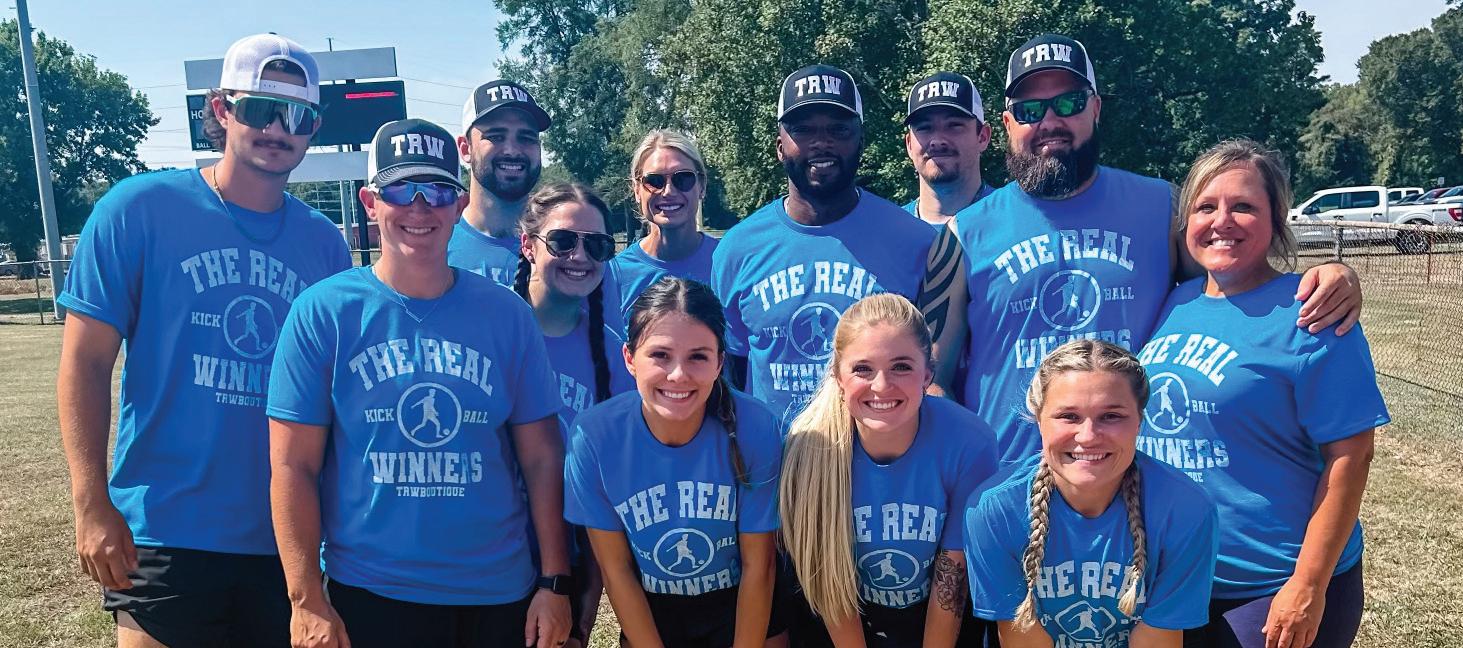

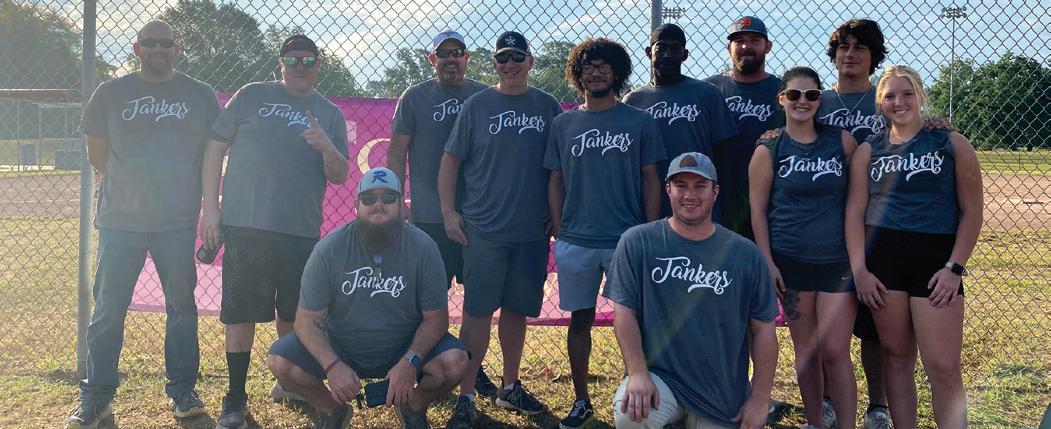
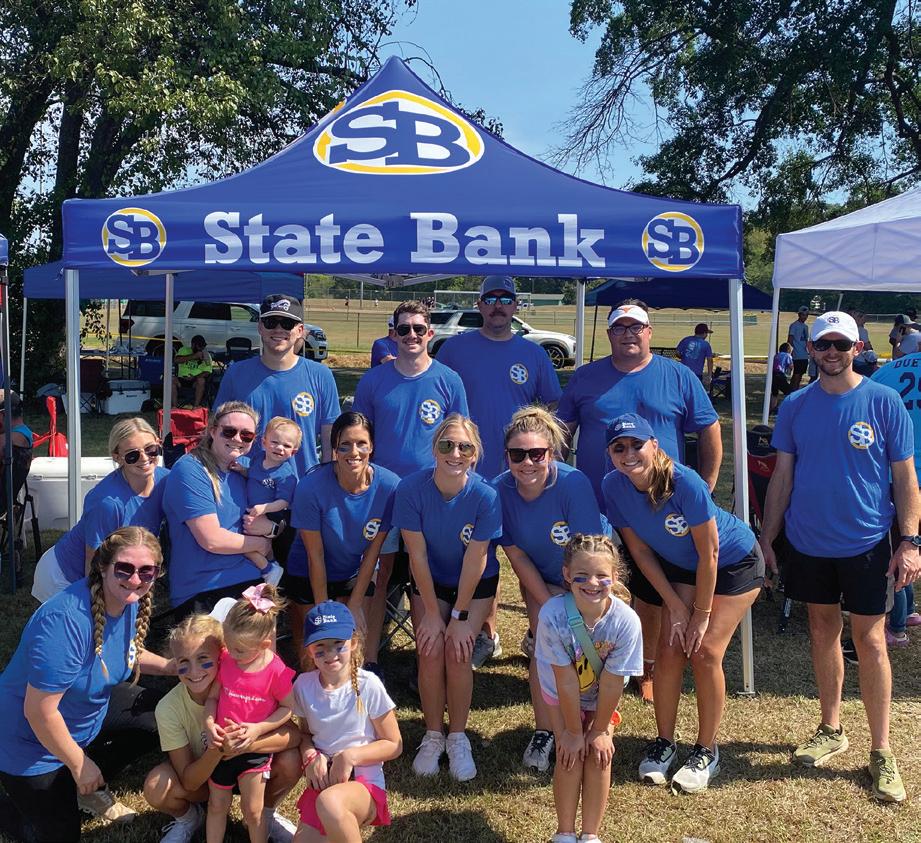


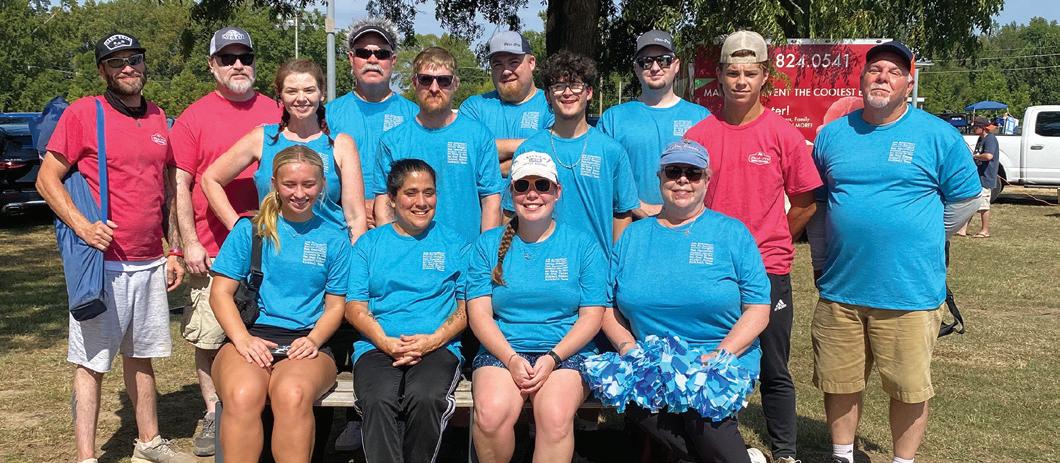
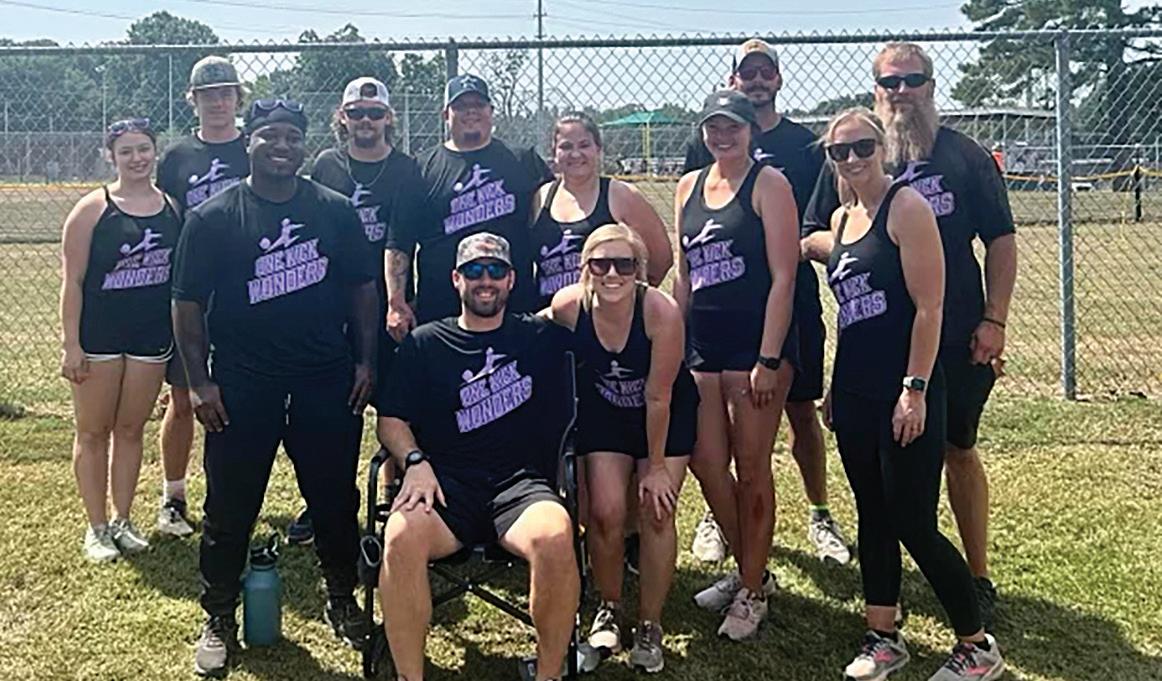

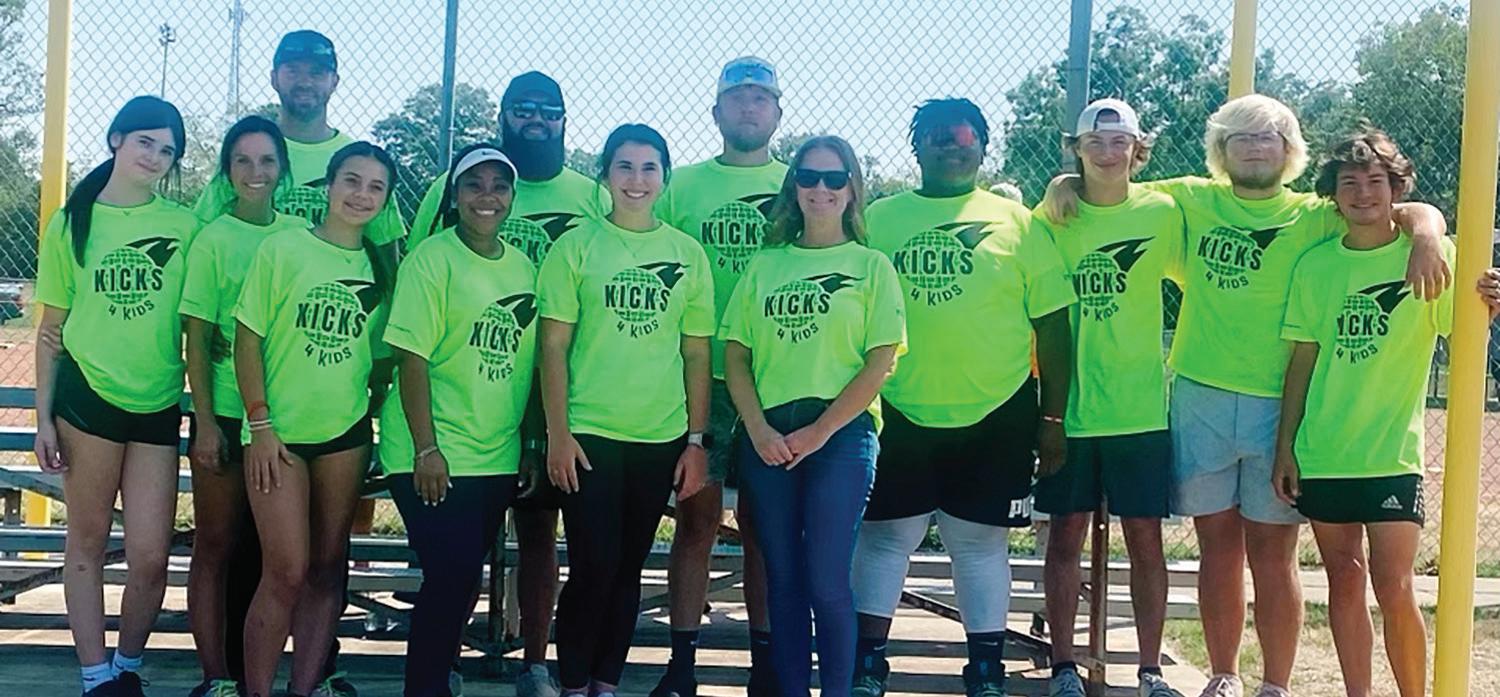



56 OCTOBER 2023 . fourstatesliving.com
The Real Winners
Texarkana College
One Kick Wonders
SpecTACulars
Home Invaders
Flaming Hot Kicks
Kicks 4 Kids
Koppers Kickers
Pest Pro
Tankers
State Bank
Redbone



57 OCTOBER 2023 . fourstatesliving.com
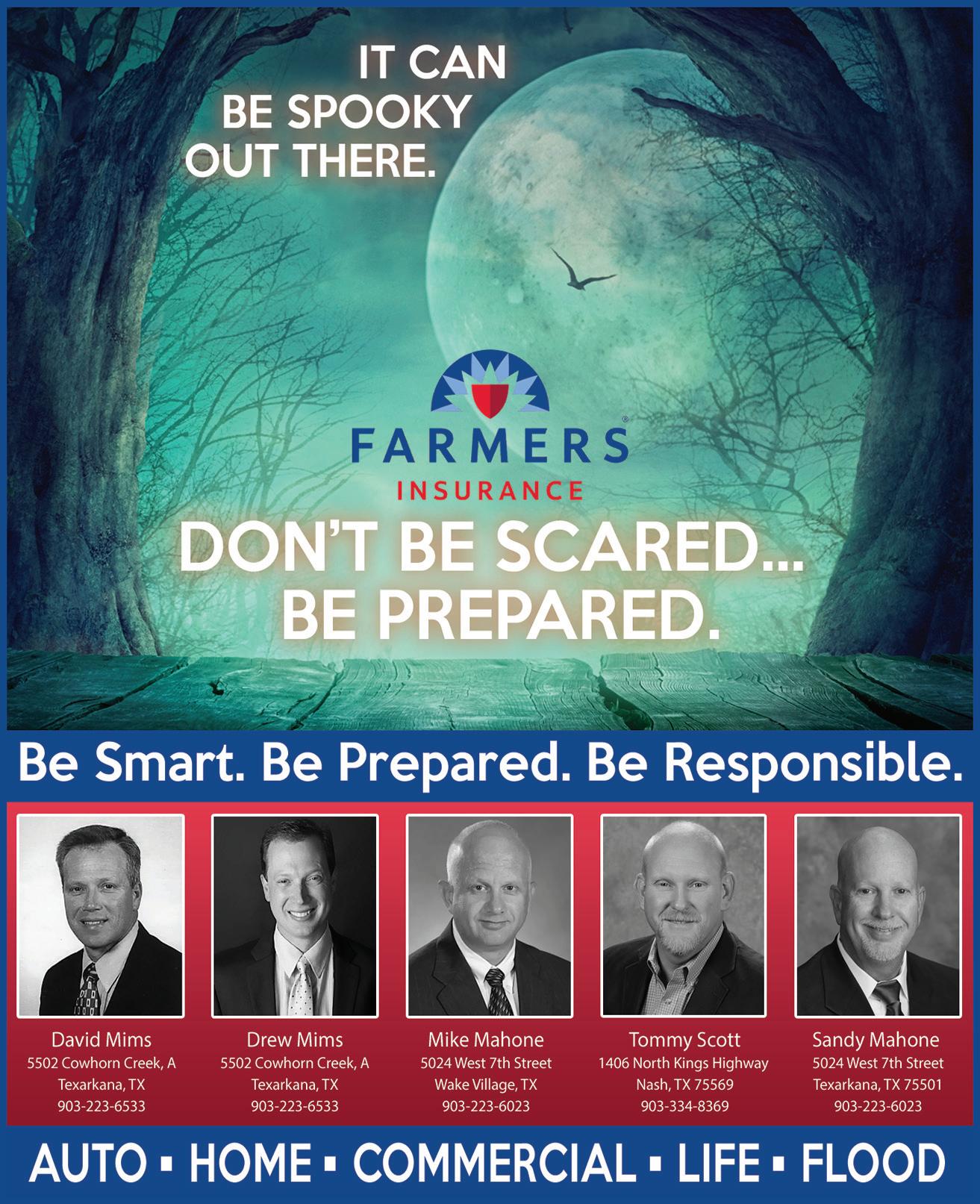



58 OCTOBER 2023 . fourstatesliving.com
Y E A R S
A staple in Texarkana since 1993, FSLM tells positive stories about Texarkana.


Four States Living Magazine (FSLM) has been this region’s premier print publication for 30 years. Since 1993, the monthly magazine has told positive human-interest stories about the people and organizations that comprise our rich community. Additionally, it has featured countless “Scene About Town” photos from local events, a handful of first-person columns from regular contributors, “Exquisite Interiors,” and relevant community information (such as a calendar of upcoming events and key governmental messages). Popularly, publisher Robin Rogers, Ed.D, has written an editorial every month, telling stories of her own life and family; she has received hundreds of messages over the years praising “The Way I See It.” All of this serves the magazine’s mission: to “inspire the pessimist, elevate the optimist, stir the mind, and entertain the soul.”
Founded by Barbara and Terry Lewis in 1993, FSLM was originally printed on unbound newsprint. For its first five years, the only color was found on the cover. Some issues were as slight as 16 pages. The tools of the trade at that time were physical: X-Acto knives, scissors, hot glue, a T-square, drafting tables, books of literal clip art. For each page, typeset copy, photographs, and artwork were pasted onto a layout board before being proofed, sent by FedEx to a printer, photographed by a stat camera, turned into a film plate, and run through a printing press.
In 1997, Robin was working as a writing instructor at Texas A&M–Texarkana. One of her students was a contributing writer for FSLM, and she approached Robin for help with grammar and style. Robin was soon onboarded as the magazine’s copy editor.
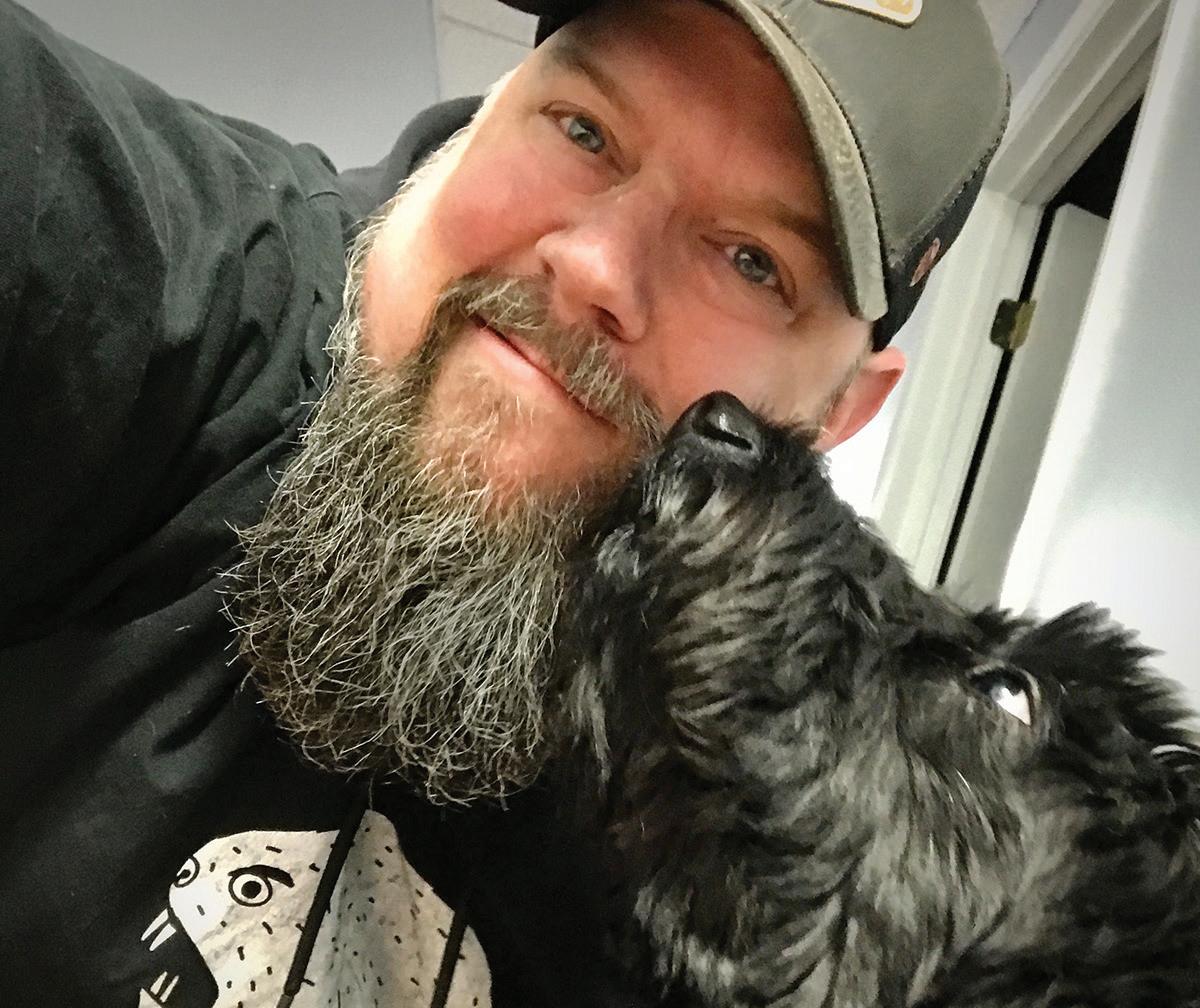
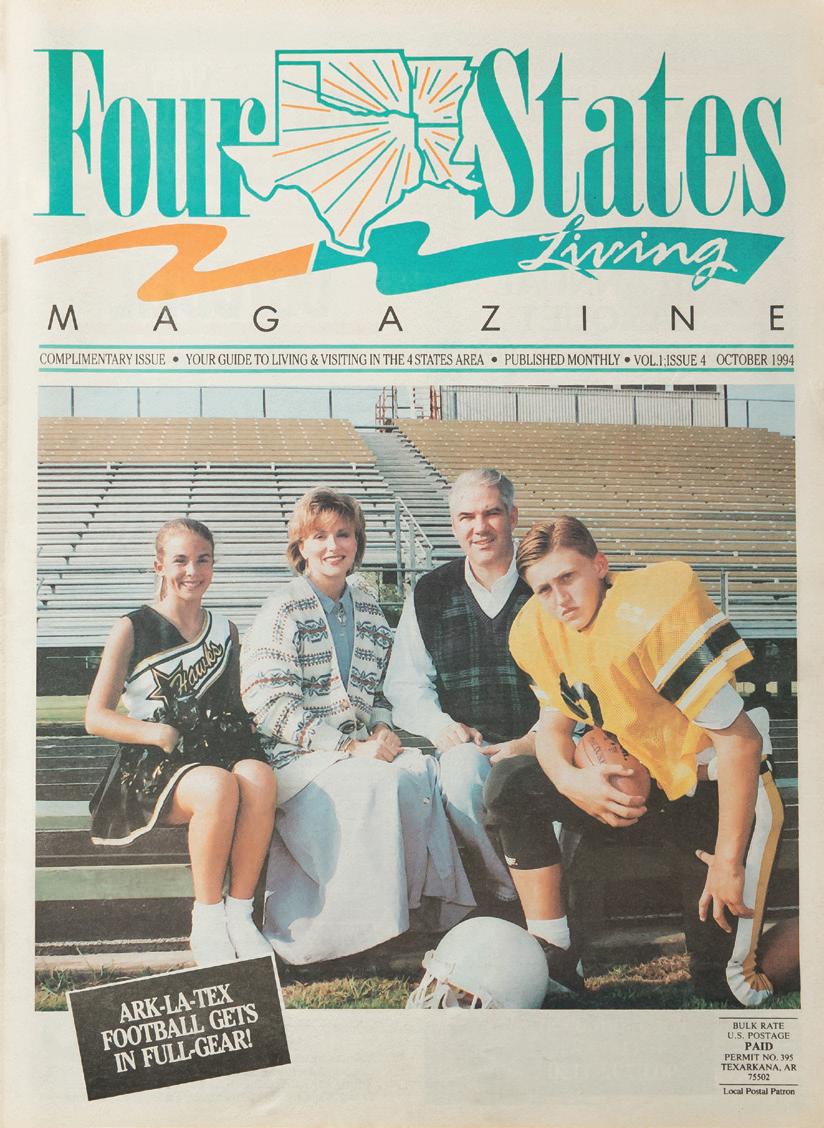

In 1998, Robin independently purchased the business. She and a small but mighty team set out to digitize the production process and elevate the product quality. The business had phones, two computers, a fax machine, a printer, and a couple of film cameras.

59 OCTOBER 2023 . fourstatesliving.com
3 0
H. Ross Perot and Robin Rogers.
Robin Rogers and Victoria Herman.
Natalie Haywood, Suzy Turner, Mary Lynn Patterson, Whitney Brooks, and Robin Rogers.
Shane Darby and office dog, Gracie.
of
Over the past 25 years, the magazine has evolved in many ways. The physical product is of the utmost quality, printed on glossy paper and held together with perfect binding (this creates the squared spine, like books have). In 1998, 4,000 copies of the magazine were printed; today, we distribute 15,000 copies (about 9,000 pounds of paper). The design work and photography have improved tenfold. The written content, too, has changed; thanks to the internet, fact-checking, collaborating, and copyediting.

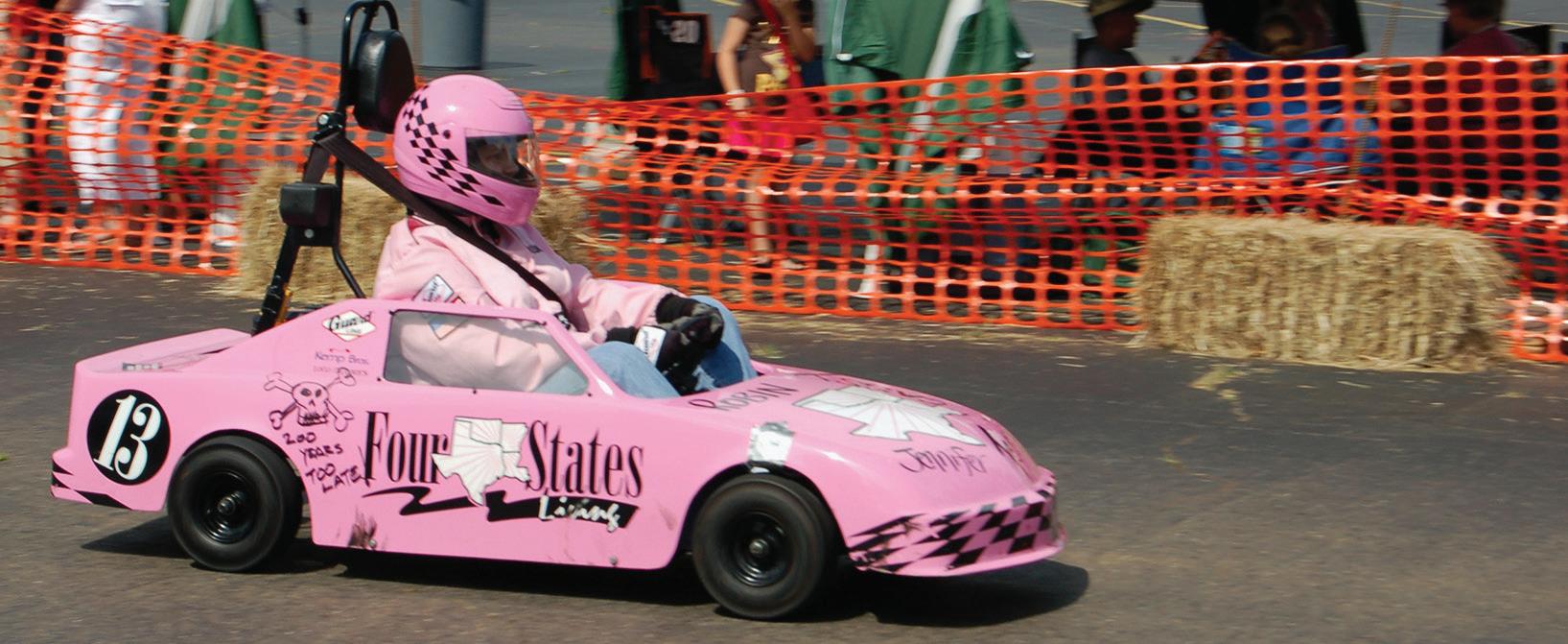
FSLM has also developed a strong digital presence. Stories, photos, and advertisements are shared at fourstatesliving.com as well as on the magazine’s social media pages, along with exclusive online content. At the time of publication, one FSLM Facebook video of the 2023 time capsule opening boasts over 61,900 likes, 4,600 shares, and 24 million views.


While much has changed, the heart of FSLM has remained strong over the last 25 years. While the team has embraced the digital age in many ways, one tenet of the company philosophy has remained: print has power. In a world of skimming, scrolling, blue light glasses, fake news, and ever-increasing screen time, FSLM maintains that creating a physical, tangible product is valuable. The team is committed to putting out a magazine that has staying power—that will stand the test of time. While many businesses have pivoted to a model that caters to TikToklength attention spans and fleeting trends, the FSLM team knows that their readers want depth, editorial integrity, and originality; they want content that holds their focus for more than 30 seconds—as do FSLM’s loyal advertisers.


The Four States Living office has been located all over Texarkana. Today, the office is at 4014 Summerhill Square. Notably, the team formerly operated out of the Hack’s Jewelers building, directly next to what is now the Kress Gap, for 10 years. A former jewelry store, the building boasted huge antique safes and window displays. While team offices were located in the front, the back of the building was primarily used for storage, although a twin bed was later added to house a team member who was between residences. (While Robin often felt that she “lived at the office” in the early years, she never did sleep in the office bed.)

60 OCTOBER 2023 . fourstatesliving.com
Neil Jones and Suzy Turner. Lori Rochelle.
FSLM enjoys participating in community events such as The Bulldog 100.
Suzy Irwin, Congressman Ralph Hall, and Lauren Bolt.
Past Texarkana, Texas Mayor James Bramlett, Robin Rogers, and Past Texarkana, Arkansas Mayor Horace Shipp.





61 OCTOBER 2023 . fourstatesliving.com
As this evidences, the FSLM culture is and always has been one of putting people first. A foundational element of the culture is a focus on family: generous parental leave, a kid-friendly office, and flexible hours are made possible by team members who work hard and with integrity to do truly excellent work.

Like all longstanding businesses, FSLM has endured and overcome hardships. Economic recessions and the COVID-19 pandemic are notable examples. Many lean years were survived by an all-hands-on-deck approach, relying even more on a shared belief—that telling positive stories about our community is a worthwhile pursuit—and determination to live it out.
Texarkana’s longest-standing magazine, FSLM partners with various community institutions in order to benefit the people who live here. Organizations like the Texarkana Symphony Orchestra, Main Street Texarkana, the Live United Bowl, and Arkansas’s Great Southwest have worked in conjunction with the FSLM team to create excellent print publications.



Today, under Robin’s continued leadership, the FSLM team is stronger than ever. Shane Darby, the graphic designer and photographer, works diligently to put together the puzzle of the magazine, to design top-tier graphics for advertisers, and to bring out the best in the subjects of his photos. Account executive Victoria Herman is a go-getter who cares about her clients and is passionate about FSLM. Ellen Orr, currently serving as editor, makes the writing shine. Our delivery team— Neil Jones, Karen Selders, Emily Orr, and Vivian Miller— do the hard physical labor of distributing and restocking magazines throughout the area; they are an invaluable part of the operation.
Looking to the future, the FSLM team is planning not just for next month or next year but for the next 25 years and beyond. They intend to remain a staple of the Texarkana area for generations to come.


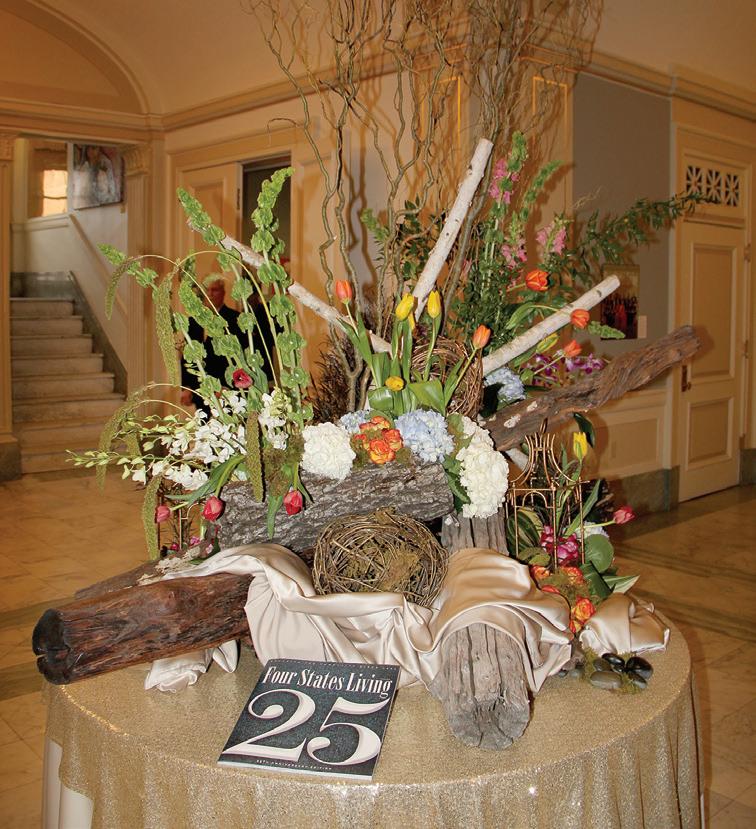
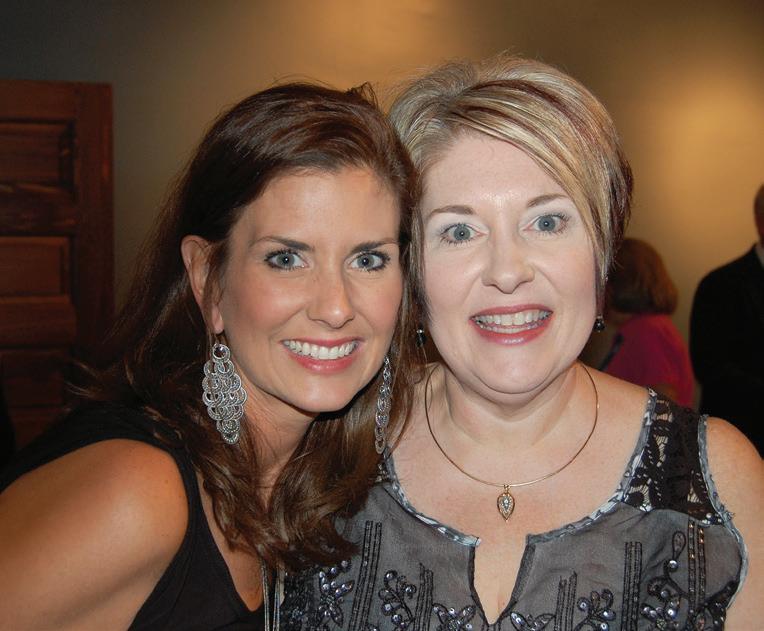
62 OCTOBER 2023 . fourstatesliving.com
Robin Rogers and Whitney Brooks.
Robin Rogers and Suzy Turner.
Kendal Griggs and Victoria Herman.
Vivian Miller, Ellen Orr, and Emily Orr.

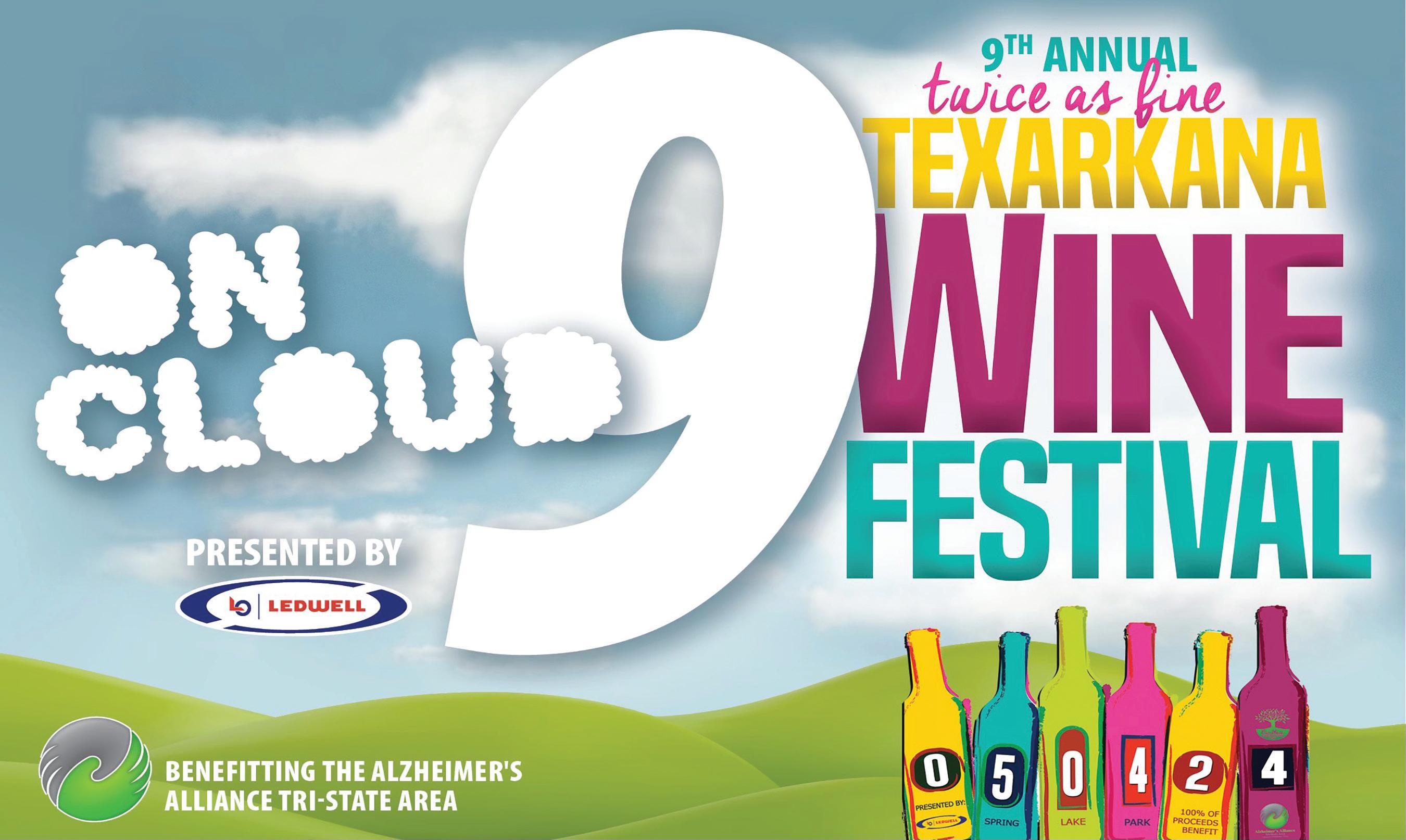
63 OCTOBER 2023 . fourstatesliving.com
 photo by MARY CYRUS PHOTOGRAPHY
photo by MARY CYRUS PHOTOGRAPHY
CASTING A WIDE NET
Thirty years ago, a life-saving service was born.
In 1983, Don Ruggles’ son Tony was out hunting in rural Arkansas when he was in a tragic accident. He was rushed to the hospital, but the hospital did not have the imaging device Tony required. He was not transferred to an out-of-town hospital for a full 24 hours, and he did not receive the care he needed in time. Tragically, he died.
Don believed that helicopter transportation could have saved Tony’s life. This prompted Don to advocate for emergency helicopter services. In response, CHRISTUS St. Michael Emergency Medical Services (EMS) launched Air Life, a helicopter ambulance service. No other helicopter EMS providers existed anywhere in Arkansas at the time, making Air Life a groundbreaking organization for the region.
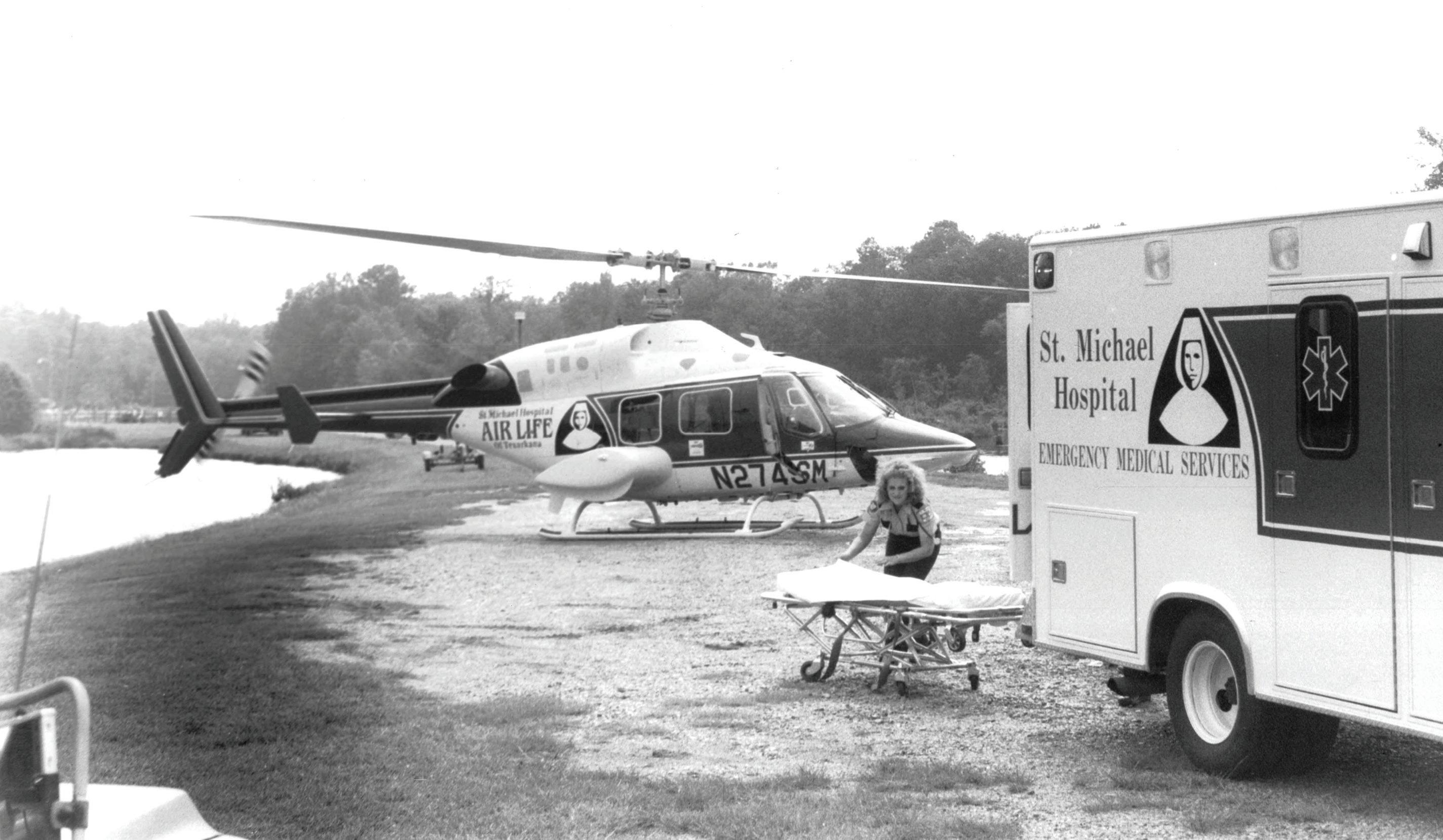
Throughout the 1980s, local fire departments were the primary providers of ground ambulance services in Texarkana. In 1989, CHRISTUS St. Michael Hospital’s EMS took over. Then in 1993, Wadley and St. Michael partnered to create a new joint EMS for the greater Texarkana area. They called it LifeNet.
LifeNet has since expanded its reach. Today, LifeNet serves Bowie, Miller, Cass, Red River, and Morris Counties, as well as Stillwater, Oklahoma, and Malvern, Hot Springs, and Hot Springs Village, Arkansas. They have grown to have more than 400 employees and 60 ambulances company-wide. LifeNet operates as a nonprofit organization, overseen by a 15-member board of community members from each of the three states where LifeNet operates.
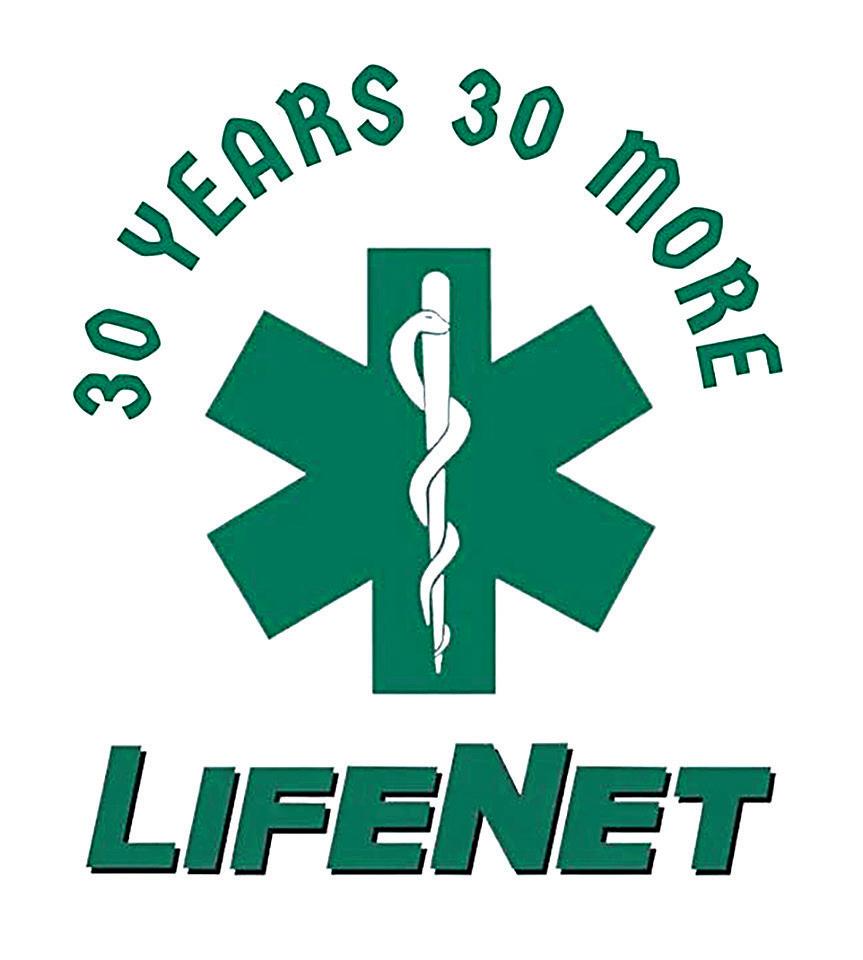
Driven by their mission to provide top-quality, out-of-hospital care to all service areas, LifeNet is in the one percent of ground ambulance services nationally to be accredited by the Commission on Accreditation of Ambulance Services (CAAS). To receive this accreditation, LifeNet must meet over 100 CAAS standards, covering structure, interagency relations, management, finance, community relations, public affairs, human resources, clinical standards, safety and risk management, equipment, facilities, and communication centers. LifeNet has been CAAS-accredited for over 20 years. Though accreditation is not required to run an ambulance service, LifeNet’s commitment to excellence and patient-centered care drives them to complete this process.
LifeNet’s deep footprint in this community also sets them apart in the EMS industry. Many LifeNet employees today were CHRISTUS St. Michael EMS employees prior to LifeNet’s inception. These employees helped grow and shape LifeNet into what it is now. Darren Higgs, who now acts as LifeNet’s Texas area director, started as a CHRISTUS St. Michael paramedic 34 years ago, before climbing the ranks to join the administrative team.
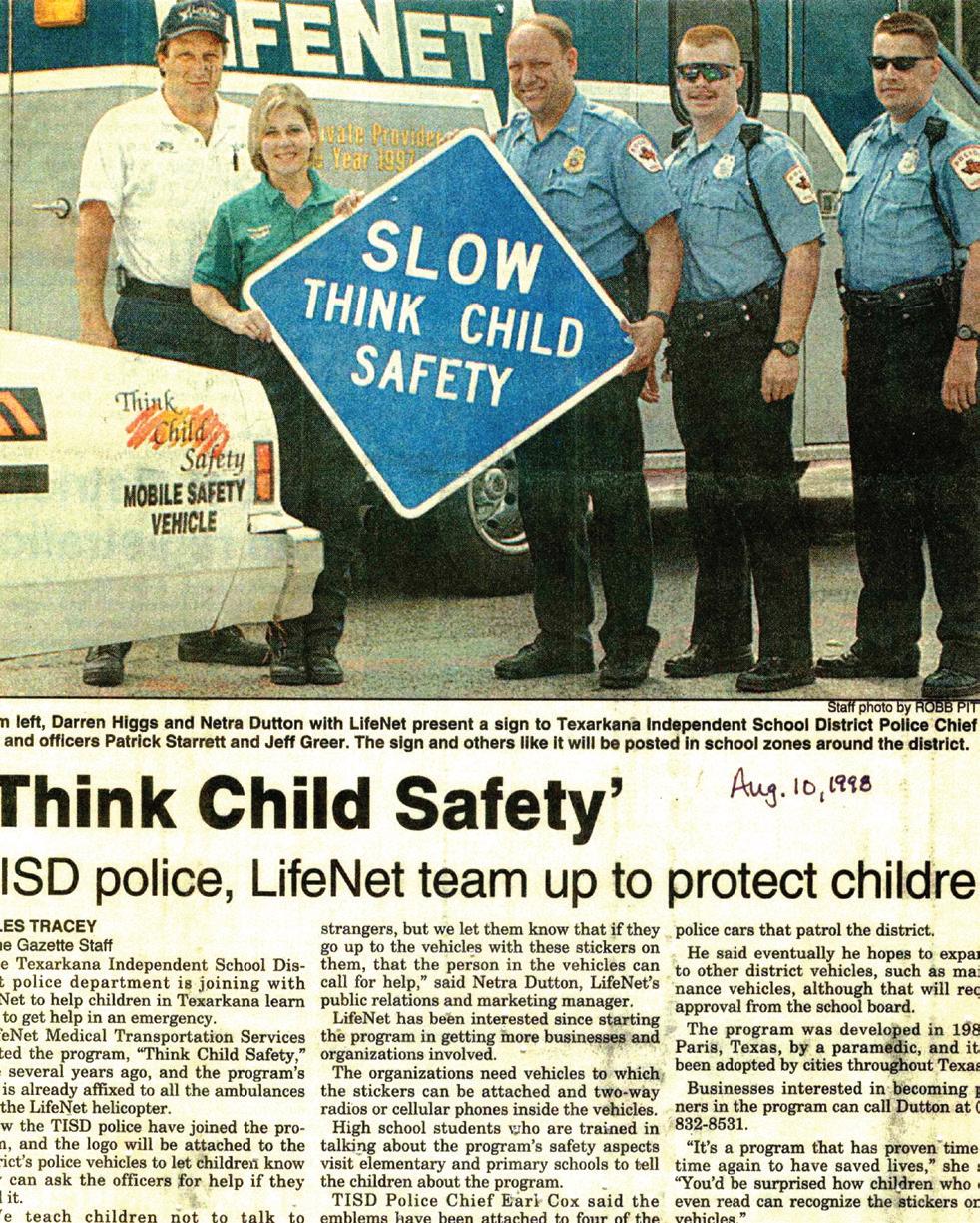

“I have seen LifeNet grow from a small EMS service to a multi-state company,” Darren said. “Our dispatch center has evolved from one dispatcher with one console to a center that possesses state-of-the-art technology and staff trained to meet emergency medical
 LifeNet employs over 400 people, including a team of emergency dispatch experts.
LifeNet employs over 400 people, including a team of emergency dispatch experts.
dispatch standards. Our IT department, which was nonexistent in the beginning, now consists of the highly trained staff that is some of the best in the business. We grew from a service of five ambulances to over 60 ambulances and support vehicles. Our fleet department employs mechanics that are capable of performing all types of repairs and maintenance you could imagine. Our staff works countless hours, oftentimes in tough conditions in a sometimes thankless profession. Working in EMS continues to be a true honor, and I am thankful for LifeNet”.
LifeNet has an internal billing department, which handles all bills for their Texas, Oklahoma, and Arkansas divisions. The logistics staff stocks their trucks, transports behavioral patients, and supports other staff in outlying areas. The crews on the streets who care for patients directly are backed by a handful of departments in order to provide top-quality care.
Beyond providing life-saving transportation, LifeNet also contributes to the community by empowering local citizens with the skills important in emergency situations. They provide free automated external defibrillator (AED) training, bystander CPR training, stroke awareness, 9-11, and “Stop the Bleed” training. And, through their AED grant program, local businesses, churches, and nonprofits can apply for a partial reimbursement of the purchase and installation of an AED at their chosen location.
Through their tuition reimbursement program, LifeNet helps their employees pursue higher education. In the past, EMTs have become paramedics, paramedics have become nurses, and other staff members have become teachers, business professionals, and even attorneys. They have also created an internal EMT class, with courses taking place in Texarkana and Hot Springs, to encourage and educate those looking to work as an EMT. The summer 2023 cohort graduated 15 new EMTs, and a new round of classes has already begun in both locations.
A multi-year recipient of the Arkansas EMS Service of the Year award, LifeNet values its patients and employees. “As a nonprofit, we can solely focus on our patients and employees and ensure we are providing the best care on both sides,” said an organization representative.
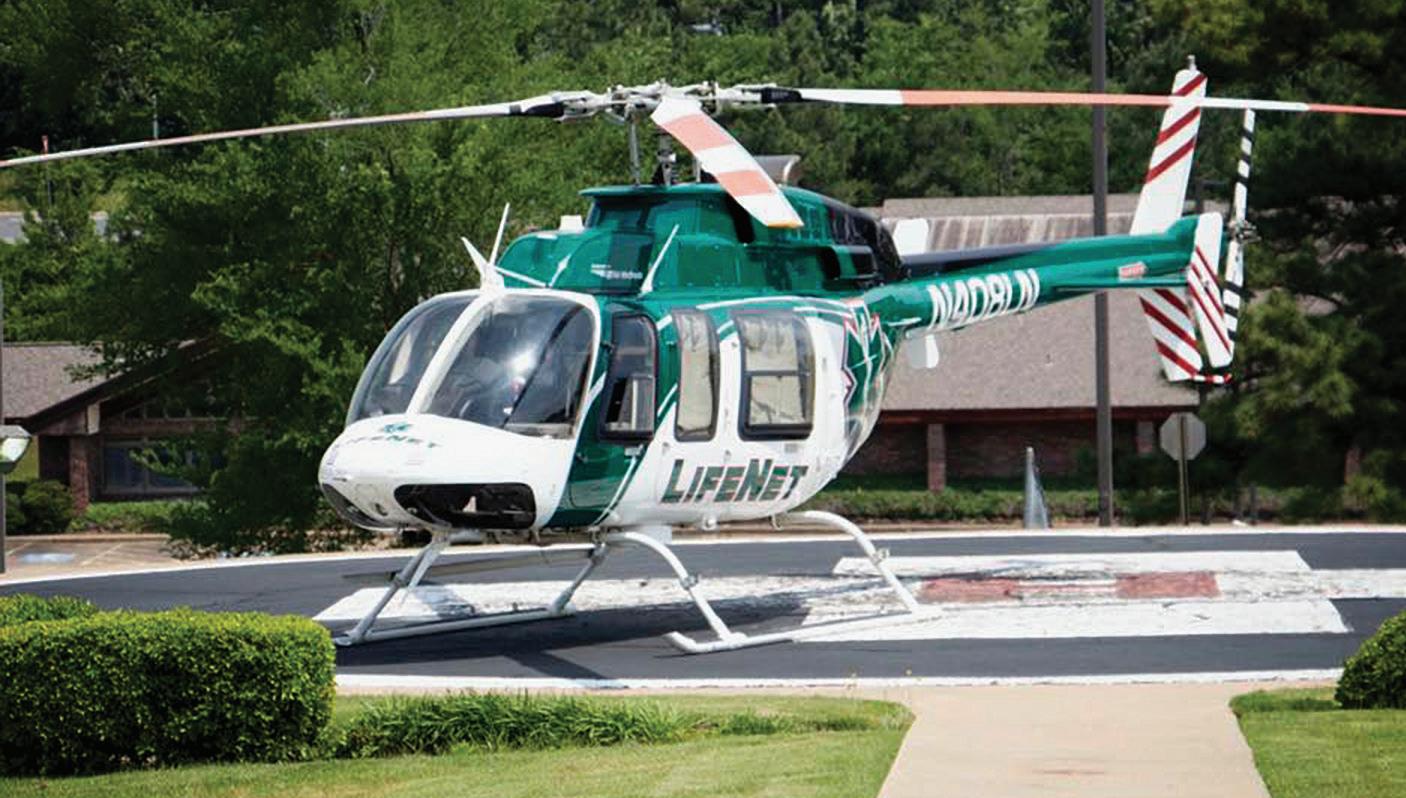


This year, LifeNet is celebrating 30 years of patient care, employee enrichment, and lives saved. LifeNet is also looking back over the hardships, such as the COVID-19 pandemic and 9/11, through which, while the rest of the world stopped, they continued to push, providing their patients with the care needed. They are celebrating the employees that have been with this company since the hospital days, as well as the new employees and employees’ children who now work on our trucks. LifeNet is celebrating the past but looking towards the future as they continue to better themselves as a company, as an EMS provider, and ultimately as healthcare providers, serving their communities each day. w
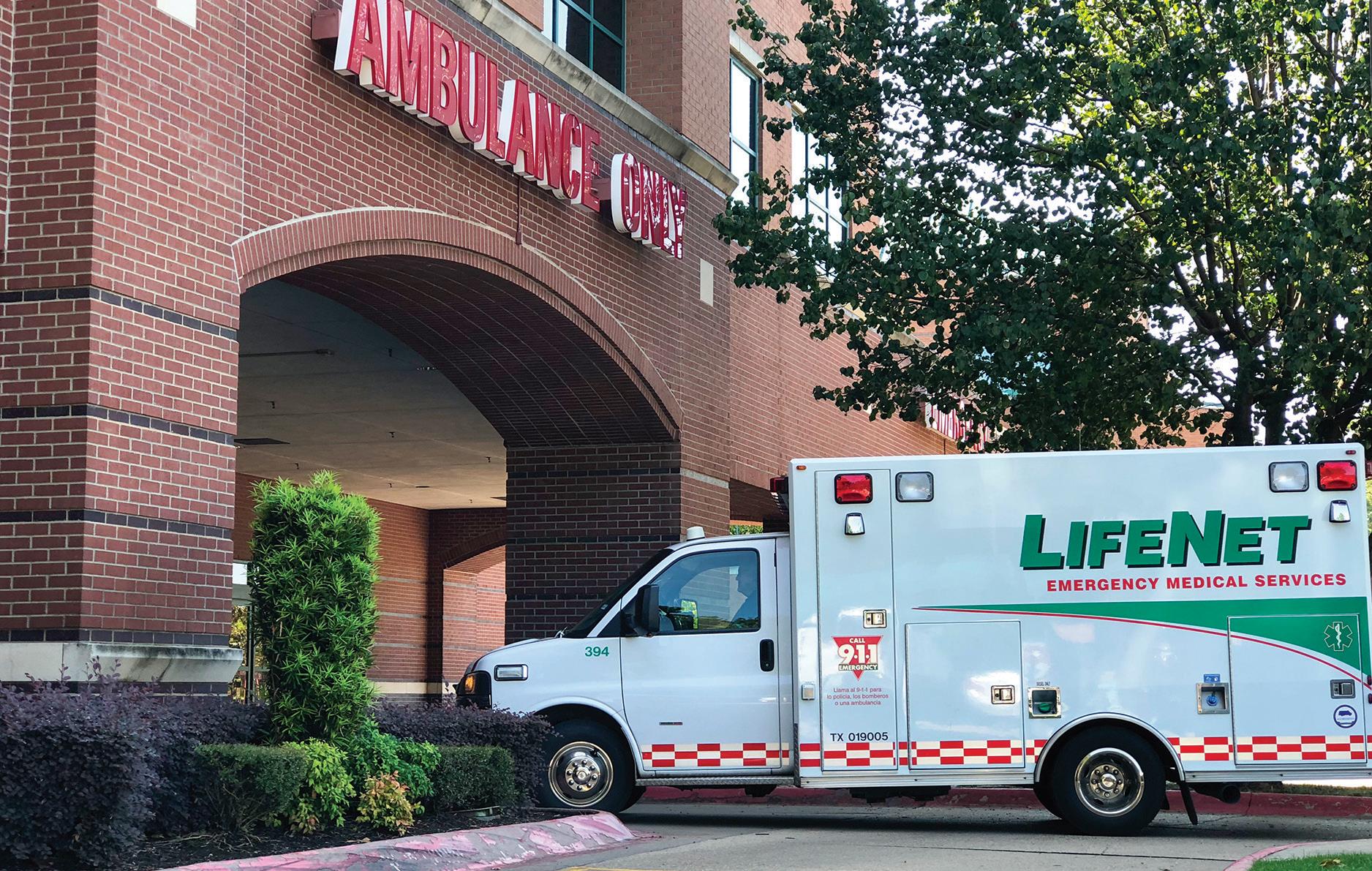
67 OCTOBER 2023 . fourstatesliving.com
“Working in EMS continues to be a true honor, and I am thankful for LifeNet.”
—Darren Higgs
LifeNet’s Stillwater division plays a large role in the safety of fans and players at OSU football games.
The LifeNet Air medical program is the oldest operating helicopter EMS program in the state of Arkansas.
GROWING ORGANICALLY
What began as a single homemade product quickly turned into a thriving nationwide business.
In 2017, sisters Jill and Alicia embarked on a mission to replace their household and personal care products with all-natural, organic alternatives. They both had been facing consistent health challenges, and they believed that eliminating conventional products from their lives would help them feel better. However, they quickly realized that even the so-called “clean” brands found on store shelves contained ingredients that they believed to be harmful.

Frustrated by the lack of transparency and options, Jill Rowe took matters into her own hands. She started by making her own organic elderberry syrup, a natural remedy touted for its immune-boosting properties. Excited about her creation and its effectiveness in her own family, she offered her extra jars of elderberry syrup on Facebook, which were quickly purchased by people in her local community. Jill’s success with this naturally-derived product showed her community that natural products can be effective and trusted—that western medicine is not the only route available when pursuing personal health.
Encouraged by the positive response, Jill began expanding her product range, creating more natural remedies and wellness products. She continued to share these offerings with her friends and community, and the demand continued to grow, leading to cars lined up at Jill’s place of residence to pick up products.
Seeing the potential and the public’s response to a need, Alicia and her husband, Mike, joined forces with Jill to establish Rowe Casa Organics. This began a journey of deep research, learning, and development. It was essential, they said, that the properties and benefits of natural ingredients

68 OCTOBER 2023 . fourstatesliving.com
Rowe Casa’s original baby line.
used were intently and thoroughly studied. They also knew that they wanted to source only the highest-quality ingredients for their products. Every product was crafted with care and tested for effectiveness.
Even as the business has exponentially grown, these foundational core values have remained central to the team’s unwavering commitment to provide safe, natural, and effective products. The heartbeat of this endeavor was to empower people to make informed decisions about their health and wellness by offering the option of trustworthy, high-quality, effective products.
Rowe Casa Organics currently sells over 200 products: household cleaners, hair and body care, pet care, baby care, and more. Though their website states that they make “no claim to cure, treat or prevent any disease or medical issue,” their essential oil and hormonal supplement tinctures have a devoted following of customers who previously experienced medical issues. Over 700 babies have been conceived with the use of Rowe Casa’s hormone support blends, according to customer self-reporting.
What began in Jill Rowe’s home has now expanded to a nationwide enterprise; while customers can purchase products directly from the Rowe Casa website, products are also available in over 400 retail locations across the country, with new locations opening weekly.
Today, Rowe Casa Organics continues to thrive, guided by the values of transparency, quality, and customer satisfaction. Still a family-owned business, they are currently in the process of expanding and enhancing their facility to meet an ever-increasing demand for their products. This expansion will also create numerous local job opportunities.
Jill, Alicia, and the rest of the team have created a company rooted in integrity that offers a range of products, with the aim of empowering individuals to take control of their health and live their best lives.



69 OCTOBER 2023 . fourstatesliving.com
photo by KAYLA BRINT PHOTOGRAPHY
Jill and Alicia have always had fun together and make a great team.
Among Jill’s biggest supporters are her family: her husband, Kevin, and their kids, Drew, Sage, Alexis, and Hosston.



70 OCTOBER 2023 . fourstatesliving.com
TEXARKANA, TEXAS
Mayor: Bob Bruggeman
Population: 36,176*
Median age: 37.3†
Median household income: $69,885†

Percentage of residents 25 and older with a high school degree or higher: 88.7%‡
Percentage of residents 25 and older with a bachelor’s degree or higher: 24.5%‡
Texarkana BY THE NUMBERS
TEXARKANA, ARKANSAS
Mayor: Allen L. Brown
Population: 29,364*
Median age: 40.4†
Median household income: $63,616†
Percentage of residents 25 and older with a high school degree or higher: 87%‡
EDUCATION
PUBLIC K-12 DISTRICTS
Texarkana Independent School District student population: 7,156
Texarkana Arkansas Independent School District student population: 4,049

Pleasant Grove Independent School District student population: 2,321
Liberty-Eylau Independent School District student population: 2,131
POST-SECONDARY
Texarkana College student population: 3,885 (undergraduate, incl. dual enrollment)
Texas A&M University–Texarkana student population: 1,763 (undergraduate), 350 (graduate)

University of Arkansas Hope-Texarkana student population: 1,292 (undergraduate, incl. dual enrollment)
TOP EMPLOYERS
Red River Army Depot & Tenants: 3,797 employees
CHRISTUS St. Michael Health System: 1,902 employees
Cooper Tire and Rubber: 1,750 employees
Percentage of residents 25 and older with a bachelor’s degree or higher: 18.7%‡
*2020 census †2021 census ‡2017–2021
OCTOBER 2023
OCTOBER 3
Paint and Sip benefiting Tough Kookie Foundation
Get ready to unleash your inner artist with ColorHype TXK—while supporting the Tough Kookie Foundation and enjoying drinks and food at Redbone Magic Brewing from 6 p.m. to 8 p.m. Half of the proceeds will benefit the Tough Kookie Foundation. The cost is $40 per person. Visit the Tough Kookie Facebook page for more information.
NAIFA-Pineywoods of East Texas Charity Golf Tournament
This United Way tournament will occur at Texarkana Golf Ranch. It will begin with a 1 p.m. shotgun start. For more information, contact Mike Mahone at 903-277-2448 or mmahone@farmersagent.com.
OCTOBER 6
Spooktacular Family Movie Time at the Texarkana Public Library

From 10 a.m. to 1 p.m., children and adults are invited to the library to enjoy the screening of a family-friendly Halloween film!
OCTOBER 7
Texarkana Symphony Orchestra presents
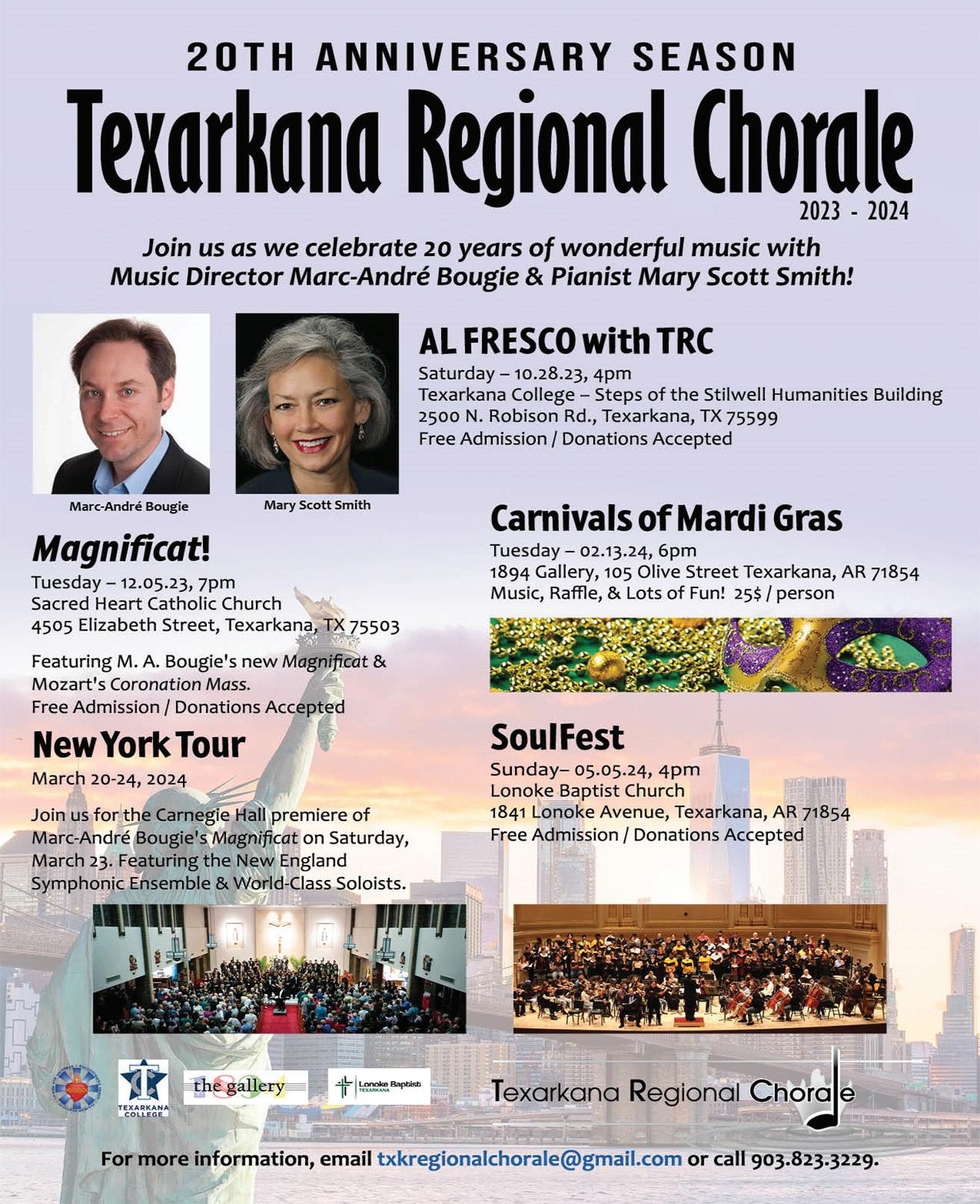
“Masterworks I – An American in Paris”
Pianist Mary Scott Smith will perform An American in Paris (Gershwin), Rhapsody in Blue (Gershwin), Symphonic Dances from West Side Story (Bernstein), and Boléro (Ravel). The concert will be held at the Perot Theatre and begin at 7 p.m. Tickets begin at $61 and can be purchased at perottheatre.org.
NAACP Picnic in the Park
The Youth and Young Adult Committee of our local NAACP chapter is hosting its first annual membership social. This will be a great opportunity to learn more about the local NAACP chapter and foster community relationships. The picnic will begin at 2 p.m. and end at 6 p.m. at Earnest F. Bell Park (3208 Lincoln Avenue, Texarkana, Texas).
7th Annual Battle on the Border
This United Way of Greater Texarkana fundraiser is back! Hosted at On the Border, Even It Up—a Heart Tribute band—will perform, along with special guest, Honey. The event begins at 6 p.m. This event benefits Dolly Parton’s Imagination Library. For more information, contact Mike Mahone at 903277-2448 or mmahone@farmersagent.com.
Jeans & Bling 2023
Hospice of Texarkana will host its 14th annual Jeans and Bling event, beginning at 7 p.m. at the Texarkana Convention Center. Dress code is black and white attire. All money raised will benefit the Hospice of Texarkana Inpatient Care Center, the area’s only free-standing inpatient care center. For more information, contact Leigh Davis at 903-794-4263.
OCTOBER 9
Texarkana College’s Hispanic Heritage Month Celebration
From 11 a.m. to 1 p.m. on the TC campus, food, entertainment, culture, and fun will be had in celebration of Hispanic Heritage Month. The first 100 students will receive free lunch from Juanito’s. The event will also feature performance by the Ballet Folklorico Alma Latina, a chips and salsa contest, a grito competition, vendor booths, and a pick-up soccer game. All community members are welcome.
OCTOBER 10
Silver Bingo at the Texarkana Public Library
“Gamers” age 55 and over are invited to attend this bingo event at the library, from 10 a.m. to 11 a.m.
OCTOBER 12
Friends of the Library Fall Luncheon
This year’s luncheon will feature the Pleasant Hill Quilters, who will give a presentation on the secret code of quilts used on the Underground Railroad. The event will begin at 11:30 a.m. at First United Methodist Church. Tickets are $25 per person and can be purchased by emailing oxforddebby@gmail.com.
72 OCTOBER 2023 . fourstatesliving.com EVENTS | CALENDAR
Movies in the Park: The Little Mermaid
The 2023 blockbuster film will begin at dusk in Spring Lake Park across from the airplane. Concessions will be available for purchase. Bring your own blankets and/or seating. This Parks and Recreation Department event is free to the public.
OCTOBER 13
The Sportsplex by Healthcare Express and Twin City Crossfit present Friday the 13th Bingo and Double Feature
From 6 p.m. to 7:30 p.m., kids and adults are invited to play Halloweenthemed bingo. The cost is $10 for three game cards. Afterward, the Disney classic Hocus Pocus will air. Finally, at 9 p.m., they will host an adults-only screening of Friday the 13th. The event is BYOB, though concessions will be available for purchase.
OCTOBER 14
Ark-La-Tex Battle of the Bands
From noon to 11 p.m., area bands will compete for the 2023 championship title. This event is free to the public and will be held at Hopkins Icehouse.
ACT Test Preparation Training Seminar #3—Science
The seminar is put on by ZachsMath, LLC and will be held at the Texarkana Convention Center from 8:30 a.m. to 12:30 p.m. Cost is $195. For more information or to register, visit zachsmath.com/strive36-act-seminars/.
OCTOBER 16
Texarkana Special Needs Fall Festival
Texas Special Children’s Projects’ annual party and dance will take place at 415 South Robison Road from 5 p.m. to 8 p.m. Dinner will be served at 5:30, with dancing, a live DJ, and candy goody bags to follow. Admission is free for disabled children, disabled adults, and caregivers.
OCTOBER 19
Vintage & Collectible Sale
Texarkana Museums System is hosting the sale October 19th through 22nd from 9:00 a.m. to 6:00 p.m. The event will be held at the Discovery Place at 215 Pine Street. There will also be a Preview Night on October 18th from 5:00 to 8:00 p.m. On this night, pay $25 at the door to have first chance at all the collectibles.
Hope Banquet benefiting For the Sake of One
FSO’s annual banquet will be held at Crossties, beginning at 6:30 p.m. After getting a short update on For the Sake of One, attendees will enjoy a delicious meal from Chef on the Run and learn from speaker Ryan North, a podcaster and childhood trauma expert. Tickets are $25 each, and table sponsorships are available. Email forthesakeofonetexarkana@gmail.com for more information.
Spring Lake Park Fall Festival
The Parks Department’s annual fall festival will be held from 4:30 p.m. to 6:30 p.m. at Spring Lake Park. The event will include bounce houses, costume contests with different age ranges, a pet costume contest, face painting, hay rides, and more. This Parks and Recreation Department event is free to the public. Thanks to LifeNet for sponsoring this community event!
Movies in the Park: The Addams Family 2
This 2021 animated black comedy will begin at dusk in Spring Lake Park across from the airplane. Concessions will be available for purchase. Bring your own blankets and/or seating. This Parks and Recreation Department event is free to the public. Thanks to LifeNet for sponsoring this community event!
NetSmartz
Training for Parents and Caregivers

This training, which will take place at the Literacy Council office in Summerhill Square, will provide parents and caregivers with knowledge of the risks associated with internet use and expert tips to empower their children to be safer online. The event, presented by the Literacy Council of Bowie & Miller Counties and Children’s Advocacy Center of Texarkana, is free to attend, but pre-registration is required, and spots are limited. Visit the Literacy Council’s Facebook page for more information.

73 OCTOBER 2023 . fourstatesliving.com
OCTOBER 21
3rd Annual Katina R. Levingston Tough Kookie Race Register today for this annual 5K race, taking place at the Texas A&M University–Texarkana campus. Pre-race ceremonies will start at 8 a.m., with an 8:30 a.m. start time for the race. All proceeds support local cancer survivors. Visit www.toughkookie.org for more information.
Texarkana Animal League’s Indoor Garage Sale
Texarkana’s largest indoor garage sale will be held from 7 a.m. to 1 p.m. at the Four States Fairground.
OCTOBER 26
Movies in the Park: The Town That Dreaded Sundown
A hooded madman stalks the lovers’ lanes of Texarkana in this fact-based account of the 1946 Moonlight Murders. The movie will start at dusk in Spring Lake Park across from the airplane. Please bring blankets and chairs so you are comfortable on the lawn. Concessions will be available for purchase. This Parks and Recreation Department event is free to the public.
Literacy Council Lunch and Learn
Each month, the Literacy Council celebrates its students at their Lunch and Learn meeting, which takes place at 11:30 a.m. at the Literacy Council office in Summerhill Square. This month’s keynote speaker is Katina Levingston, founder and president of the Tough Kookie Foundation. Everyone is welcome to attend.
OCTOBER 27
Spooktacular Family Movie Time at the Texarkana Public Library
From 10 a.m. to 1 p.m., children and adults are invited to the library to enjoy the screening of a family-friendly Halloween film!
Rocky Horror Picture Show
The Perot Theatre presents Rocky Horror Picture Show, the cult-classic Halloween favorite. Basic admission is $17, while the “Virgin Package” (admission plus a prop kit) costs $27. Secure your spot today at perottheatre.org.
OCTOBER 28
Witches Night Out
Eternal Beauty Medical Aesthetics & Day Spa’s event will run from 4 p.m. to 6 p.m. at their Summerhill Road office. Everyone age 18 or older is invited to enjoy live music and hors d’oeuvres. All attendees will receive a $50 gift certificate to be used on any service.
Spring Lake Park Trunk or Treat
Join the Parks Department for a spooky, family-friendly evening full of tricks and treats! This free event will be held from 3 p.m. to 6 p.m. in the open field across from the Rotary Splash Pad. If you are interested in being a “trunk,” please contact the Southwest Center at 903-798-3978 to secure your spot. This Parks and Recreation Department event is free to the public.
NAACP Freedom Fund Banquet
The local chapter of the NAACP is throwing its annual banquet at Texarkana College’s Truman Arnold Center. Meet and greet begins at 6 p.m., and the banquet is scheduled to start at 7 p.m. For more information, visit texarkananaacp.org.
Plextacular PUMPkin Fest
The Sportsplex and Twin City Crossfit present this Halloween event, which will run from 3 p.m. to 6 p.m. The fest will consist of trick or treating, a costume contest, concessions, fitness games, and vendor booths.
ASK THE EXPERTS
D esiree D e D e J efferson Director of Marketing, MRC Cornerstone Retirement Community



Aging in Place – Is home health the right decision?
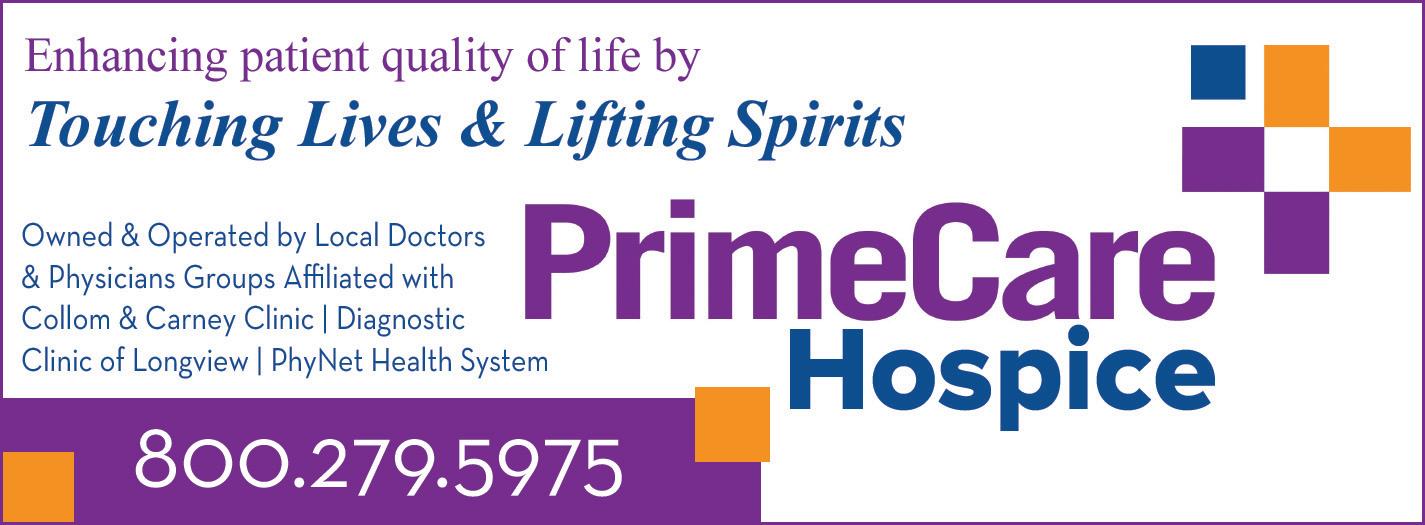
Aging can bring challenges and make everyday tasks very difficult. When a major move doesn’t make sense, home health services could be the solution. Trained staff assist you at home with daily assistance in the areas needed most, from companion services to household chores to deeper healthcare needs. While some of these services have an out-of-pocket expense, some services may have coverage through your medical insurance or long-term care policies. Home healthcare services could be the answer to assisting individuals and their caregivers with the needs that can accompany aging.
903-417-0326 | 4100 Moores Lane
Texarkana, TX | mrccornerstone.org
B rett B rzeski Investment Advisor, Mustard Seed Wealth Management

I am 26 years old and have been putting money into a 401K at work. I keep hearing talk about a downturn in the economy, and I am concerned for my portfolio. Should I move everything to cash until things look better? The problem with market timing is you have to be right twice. Not only do you have to know when to get out, but also when to get back in. The latter may be the most difficult of the two. Once this becomes your investment approach, you will have to be right multiple times as you can expect to see more than one down-turn in the economy over your work career. Create a steady, disciplined plan for investing and stick to that plan while rejecting the temptation to make investment decisions based on fear.
903-716-8414 | 3304 Richmond Rd Texarkana, TX | msfwm.com

74 OCTOBER 2023 . fourstatesliving.com
EVENTS | CALENDAR ( continued )






























 This map shows the ancestral lands of the Caddo people, with modern-day Texarkana at the epicenter.
This map shows the ancestral lands of the Caddo people, with modern-day Texarkana at the epicenter.













 A bronze relief depicts Phillip Brooks, the sisters’ first patient in Texarkana.
The Sisters of Charity of the Incarnate Word from a 1944 newspaper clipping.
Sisters process in at the 1945 groundbreaking of what would be renamed St. Michael Hospital.
A bronze relief depicts Phillip Brooks, the sisters’ first patient in Texarkana.
The Sisters of Charity of the Incarnate Word from a 1944 newspaper clipping.
Sisters process in at the 1945 groundbreaking of what would be renamed St. Michael Hospital.


 CHRISTUS St. Michael Health System celebrated 100 years in 2016. As part of the centennial, the hospital also held a mass.
CHRISTUS St. Michael Health System celebrated 100 years in 2016. As part of the centennial, the hospital also held a mass.



 Groundbreaking for the new emergency center, scheduled to open next year.
Groundbreaking for the new emergency center, scheduled to open next year.












 Mike and Pete Mankins.
Stephanie, Michelle, Jennifer, and Allison.
Allison and Keith White with Kyle, Hayden, and Grant.
Mike and Pete Mankins.
Stephanie, Michelle, Jennifer, and Allison.
Allison and Keith White with Kyle, Hayden, and Grant.









 Derrick McGary, current president of the Texarkana College Board of Trustees, spoke at commencement.
Derrick McGary, current president of the Texarkana College Board of Trustees, spoke at commencement.











 The Betty & Buddy Ledwell Workforce Training Center opened in 2018.
The McCulloch Industrial Technology Center opened earlier this year.
TC’s nursing school is the oldest in the region, having opened in 1956.
TC’s aviation program is expected to launch an airframe and powerplant mechanic training program in 2024.
The Betty & Buddy Ledwell Workforce Training Center opened in 2018.
The McCulloch Industrial Technology Center opened earlier this year.
TC’s nursing school is the oldest in the region, having opened in 1956.
TC’s aviation program is expected to launch an airframe and powerplant mechanic training program in 2024.
















 Tim O’Neal riding along with the Clydesdales.
The Dalmatian was added as the preferred coach dog in 1950.
Ruth Penny-Bell, former Texarkana, Arkansas mayor, rode atop the carriage with Texarkana, Texas Mayor Bob Bruggeman during the Clydesdales’ 2015 visit.
Tim O’Neal riding along with the Clydesdales.
The Dalmatian was added as the preferred coach dog in 1950.
Ruth Penny-Bell, former Texarkana, Arkansas mayor, rode atop the carriage with Texarkana, Texas Mayor Bob Bruggeman during the Clydesdales’ 2015 visit.

 Thanks to funding from Eagle Distributing, the Budweiser Clydesdales mural by David Freeman can be found in downtown Texarkana.
Thanks to funding from Eagle Distributing, the Budweiser Clydesdales mural by David Freeman can be found in downtown Texarkana.









 The original charter for the Bowie County Teachers Credit Union, along with a ledger record from their first month of business in 1951.
The original charter for the Bowie County Teachers Credit Union, along with a ledger record from their first month of business in 1951.



















 Over 2,100 students are currently enrolled at TAMU-T.
Over 2,100 students are currently enrolled at TAMU-T.















































 photo by MARY CYRUS PHOTOGRAPHY
photo by MARY CYRUS PHOTOGRAPHY




 LifeNet employs over 400 people, including a team of emergency dispatch experts.
LifeNet employs over 400 people, including a team of emergency dispatch experts.


























